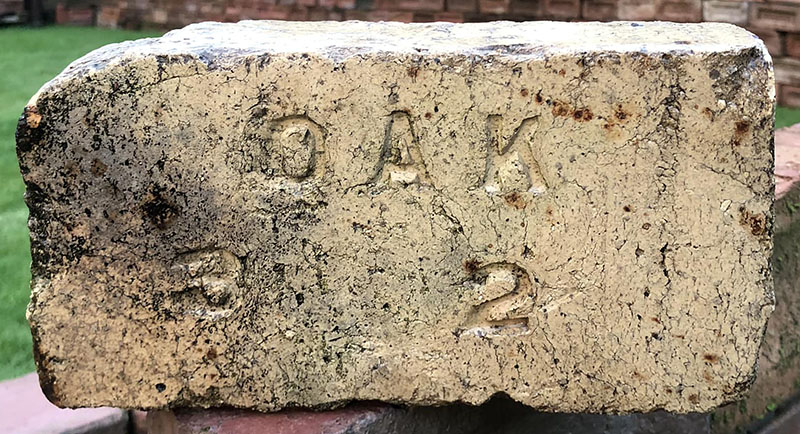

Photo by Jason Stott.
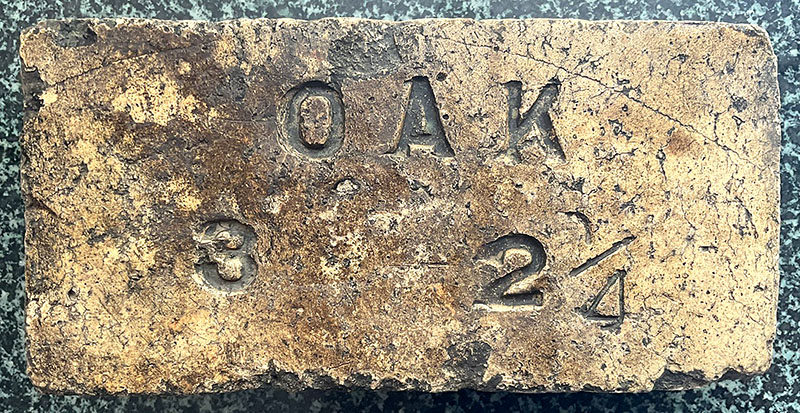
Oak Colliery (1848 - 1956), Hollins Road, Oldham. This was for many years owned by the Chamber Colliery Company. Photo and info by Ian Sneyd.
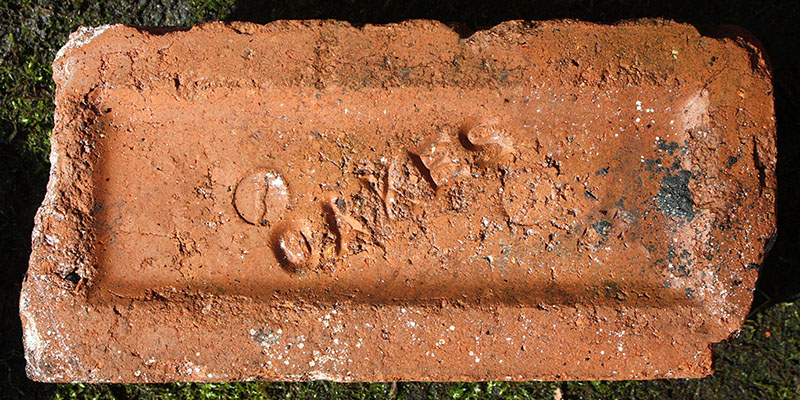
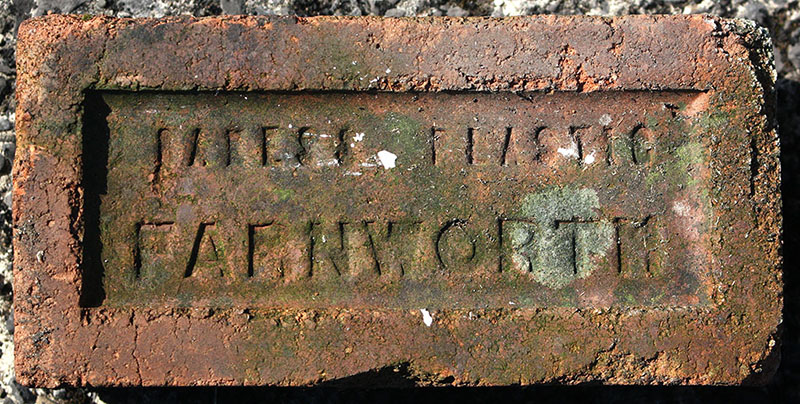
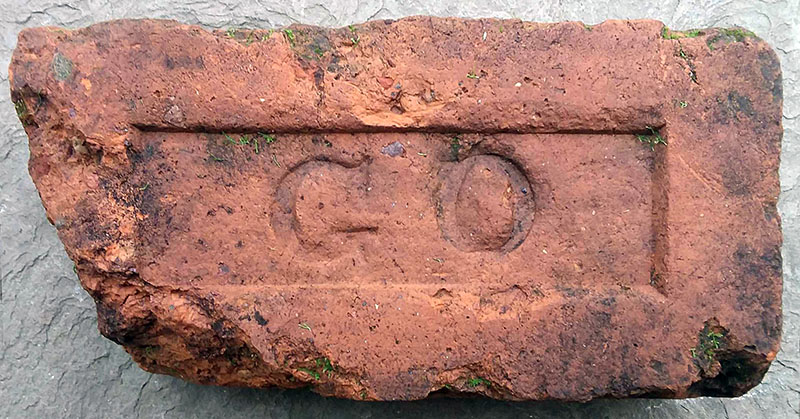
1837 George Oakes, Chapel Street, Hunslet. 1851 George Oakes, age 58, bricklayer and brickmaker master employing 30 men. Living at Oakes Terrace, Hunslet, Leeds. In 1861 he was employing 47 men and 10 boys. White's Leeds Directory for 1866 has Oakes George & Son, Hunslet Hall Road. 1872 it is Oakes, G. and Son, Ladypit Lane, Leeds. 1899 Dewsbury Road. The move of brickworks location suggests that the business was following the development of the area as it became more and more built-up. Photo by David Fox.
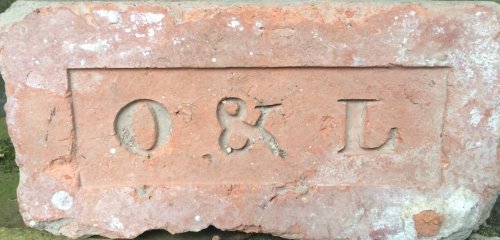
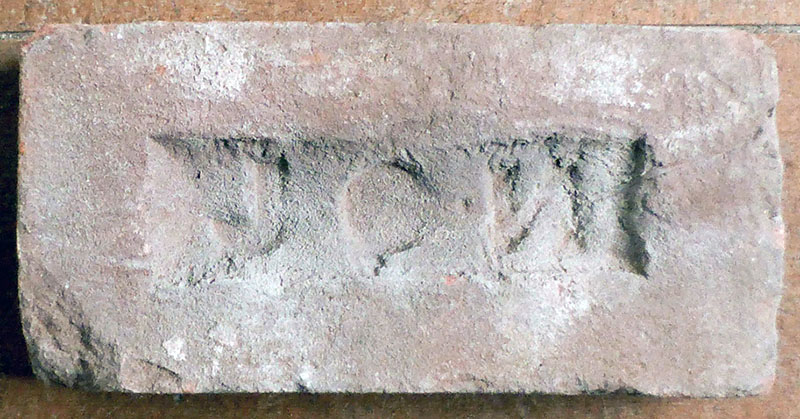
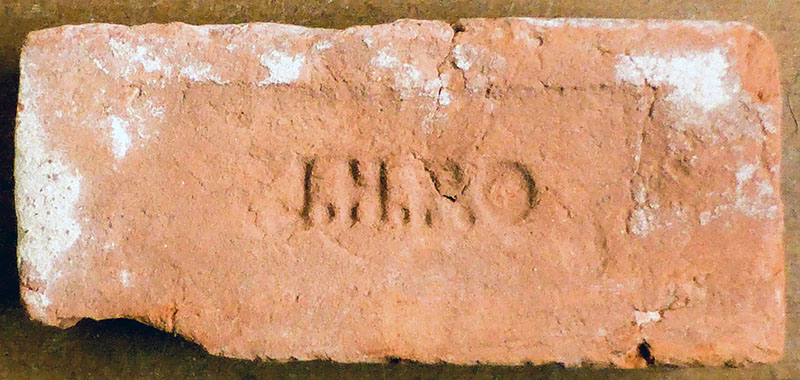
James Henry Porteus Oakes (b1821) of Nowton Court, Bury St. Edmunds operated his estate brickworks from 1875 to the year of his death in 1901. The Oakes family where also bankers in the firm of Oakes, Bevan & Co. (later Oakes, Bevan, Tollemache Co.) which was taken over by the Capital & Counties Bank in 1900. C. & C. Bank was then acquired by Lloyds Bank in 1918. Info & Photographed at the Museum of East Anglian Life by Martyn Fretwell.
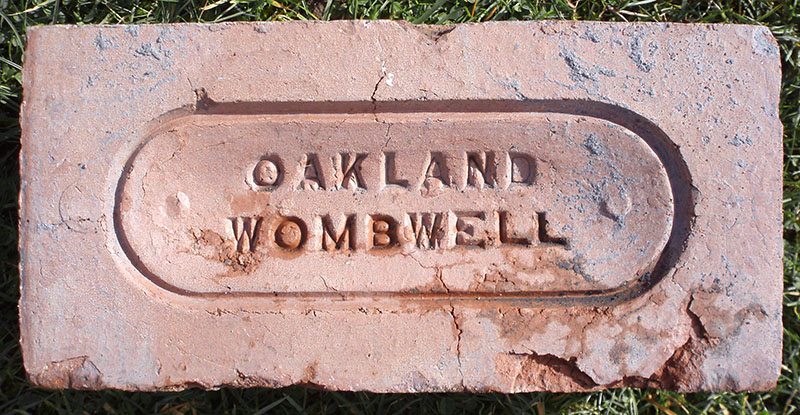
Edward Oakland, Park Hill Brickworks, Wombwell, Barnsley.
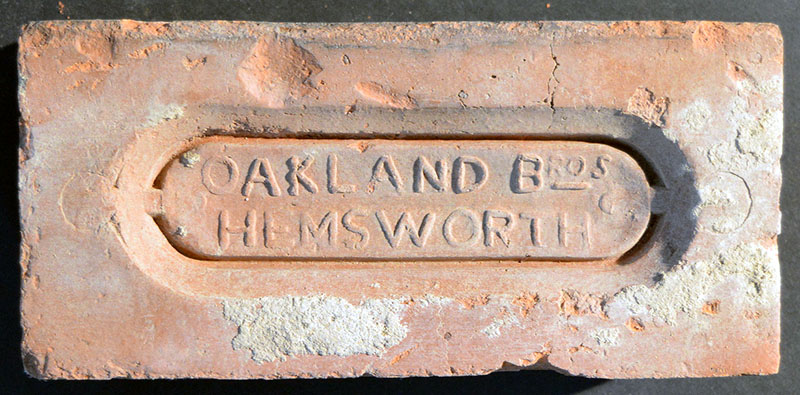
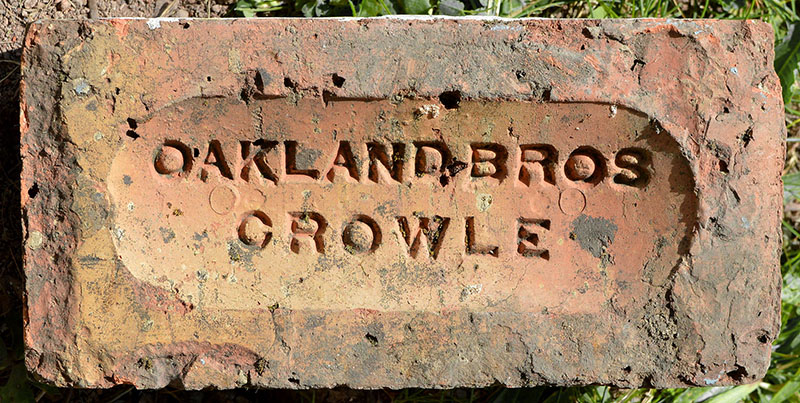
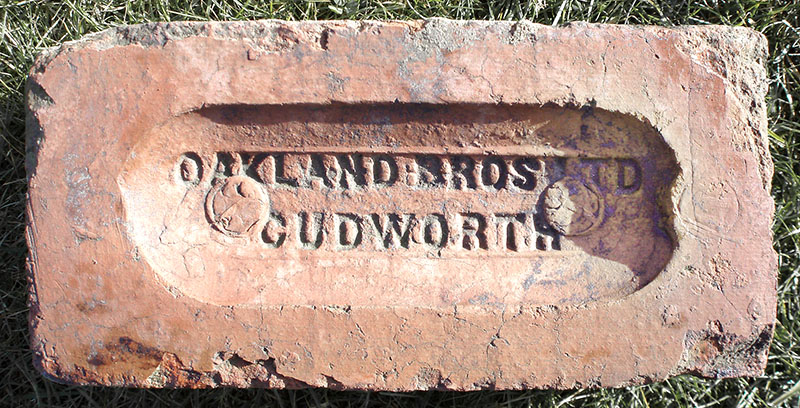
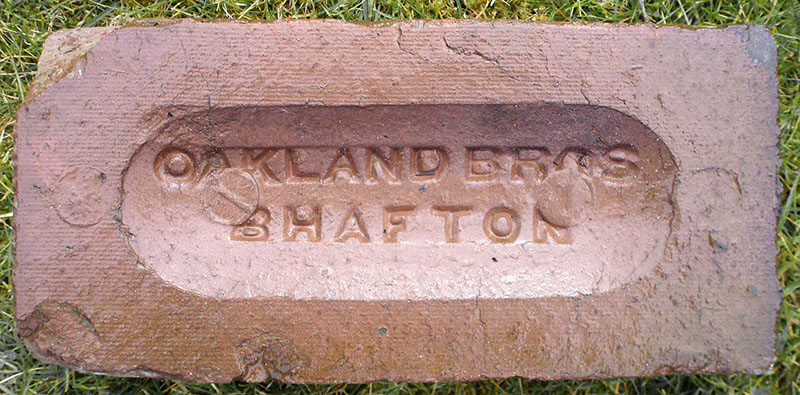
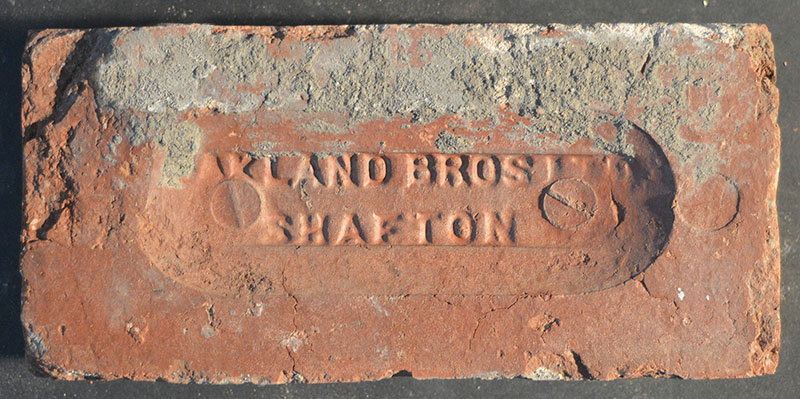
Shafton Brickworks, Shafton Two Gates, Barnsley, S.Yorks. Oakland Brothers took ownership of brickworks in several parts of West and South Yorkshire (Wombwell, Hemsworth, Shafton, Edlington) and at Crowle in Lincolnshire.
Photos by courtesy of the Frank Lawson collection. Link to history of the works here.
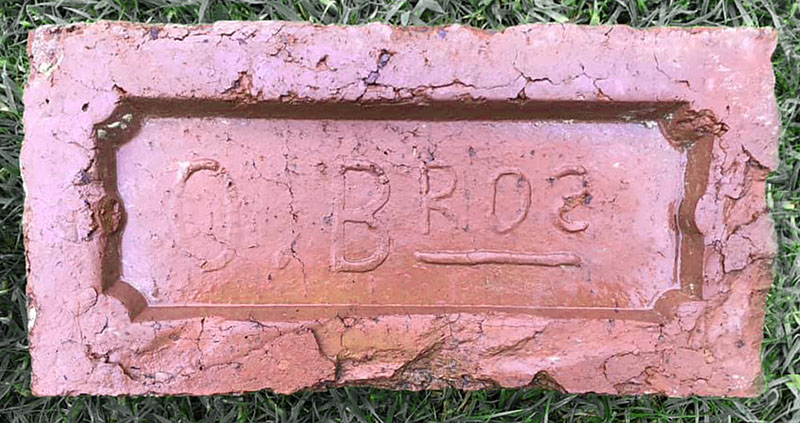
Photo by Greg Julian.
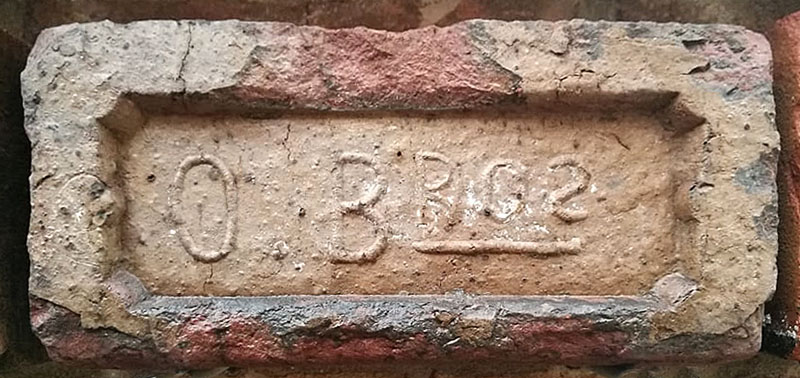
Photo by David McNicholas.
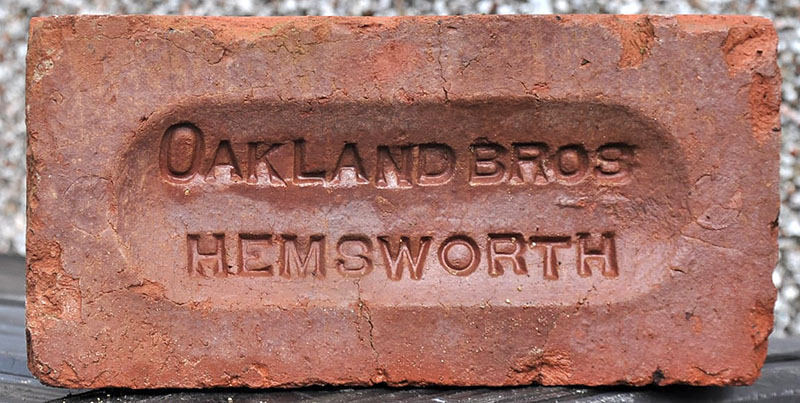
Photo by Chris Shaw.
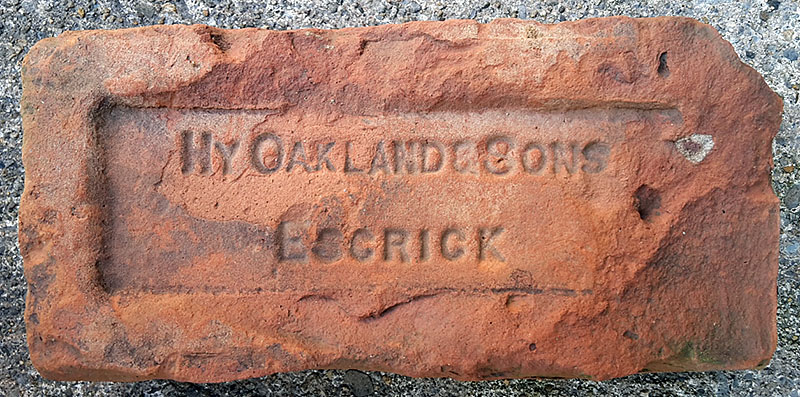
The works at Escrick, south of York, was being run by the son of Samuel Oakland who was at Hemsworth. Henry Oakland & Sons Ltd was still manufacturing clay land drainage pipes at Escrick in the 1990s. They claimed to be Britain's No.1 manufacturer of land drainage pipes. The company was incorporated in 1939 and dissolved in 2013. Production at the works seems to have ceased in the 1990s with clay then being supplied to a block works in Great Heck. The works was demolished in 2006 and the site is now a landfill. Photo by Carla van Beveren.
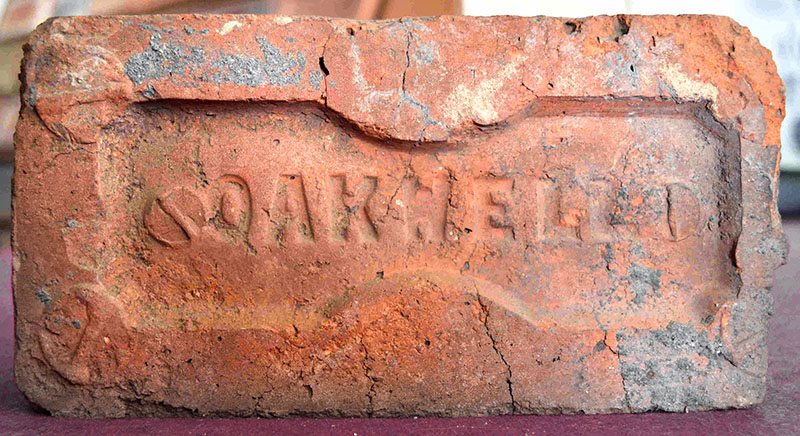
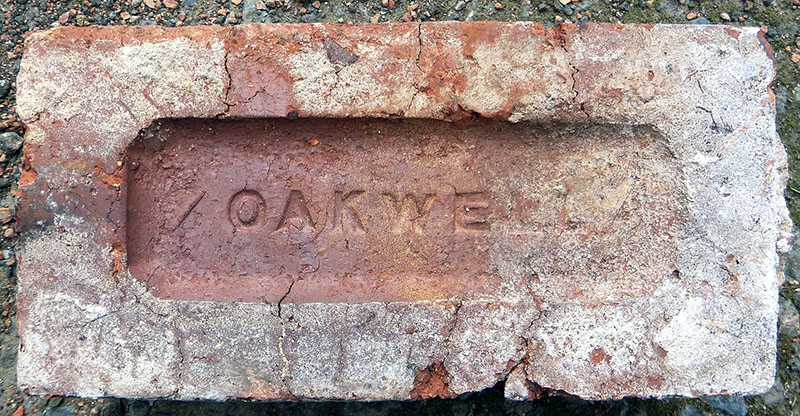
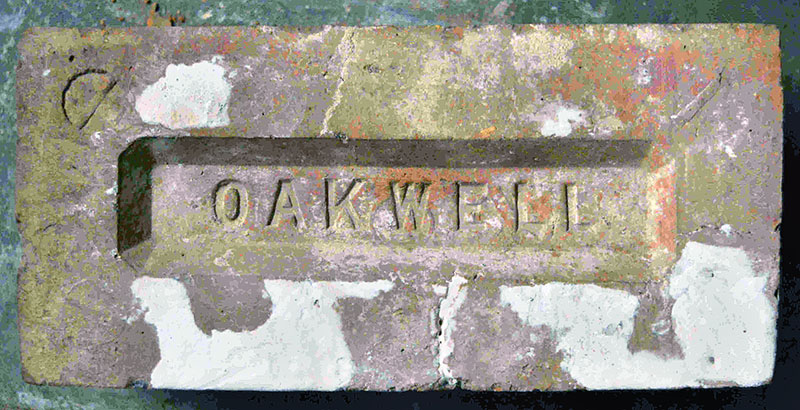
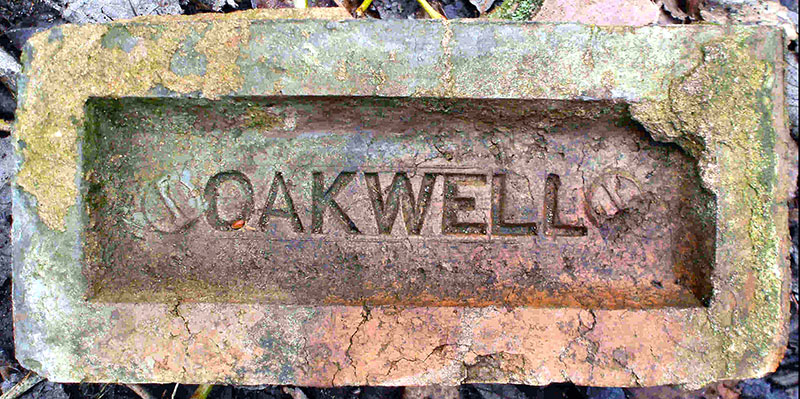
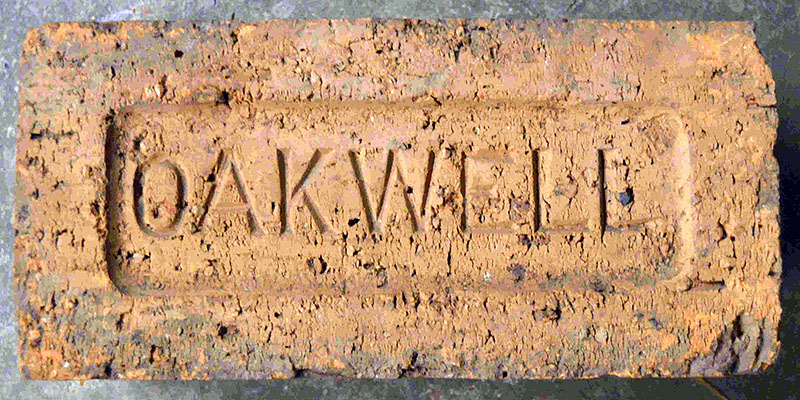
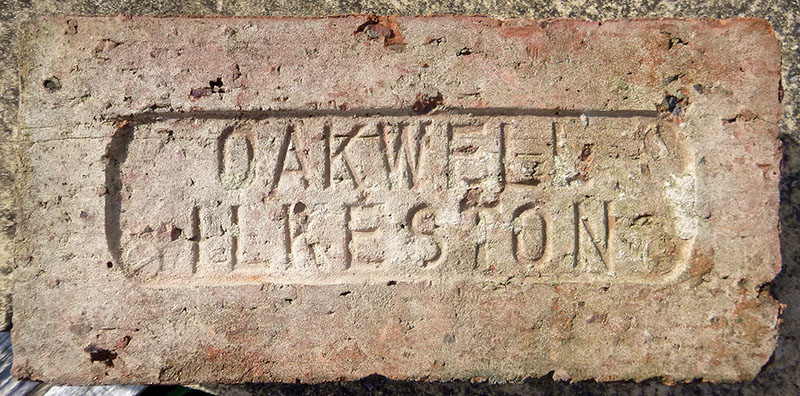
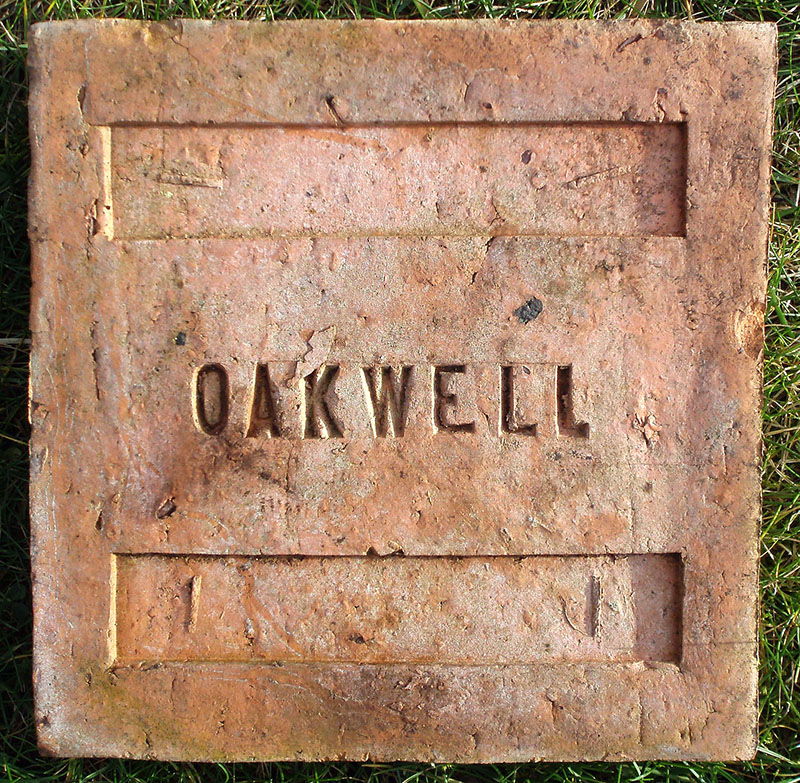
Oakwell Brickworks closed in 1930 and was in Ilkeston, Derbyshire. Photos by Frank Lawson. See also the entry for Ilkeston Colliery.
There are some recent photos of the remains of Oakwell brickworks here.
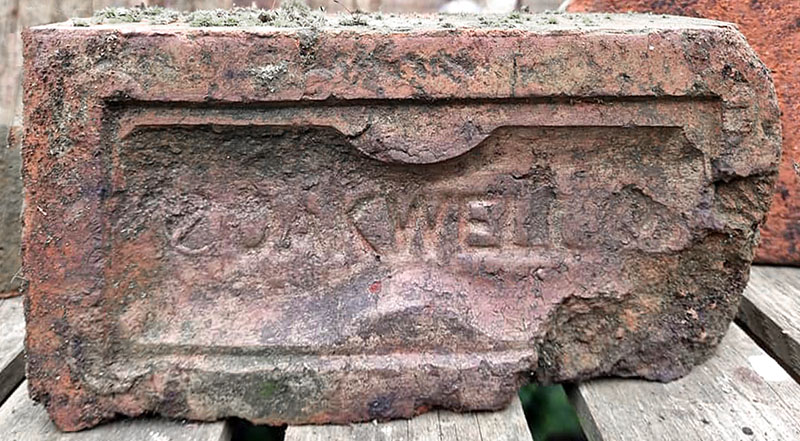
Photo by Andrew Kemp.
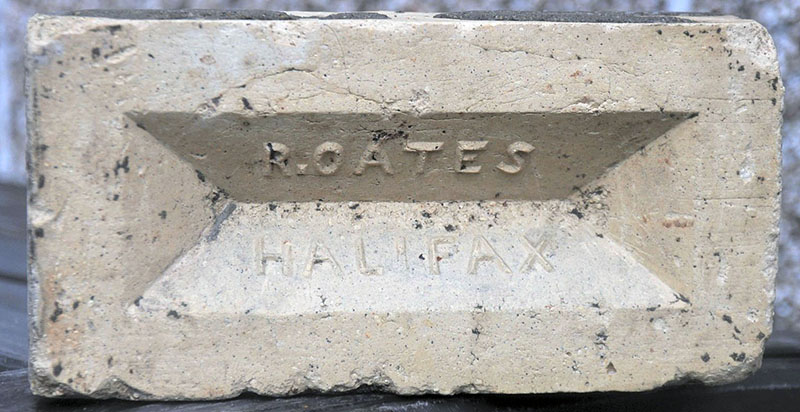
Richard Oates was working under his own name, from the end of 1873 to circa 1877, when we first find the company Oates and Green mentioned. Previous to this there was a partnership, until dissolved in October 1873, of Edwin Dixon and Richard Oates trading as Dixon & Oates, builders and contractors, and brick and tile manufacturers. It does appear that Richard Oates was working independently in 1875, auctioning " Surplus working plant " at his Horley Green works ( the site later becoming the Oates and Green works). Photo and info by Chris Shaw.
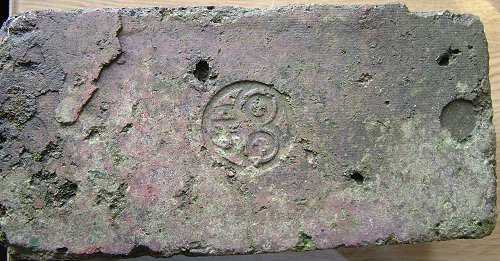
The rather owl-like impression in the centre of this plain brick consists of the letters O, G and H. This was the trademark of Oates & Green of Halifax, West Yorkshire. The mark has been confirmed from their company notepaper. I don't have complete information about this brickmaker but Oates & Green were situated at Horley Green Road, Halifax by 1881. In the late 19th century they formed part of an association called the Halifax Brick Company, together with: Mortons of Siddal, Swan Bank, and Charlestown Bricks. In 1908 they are attested as owned by Leeds Fireclay Co. Part of their enterprises were probably bought out by George Greenwood & Son. Photo and information by Derek Barker.
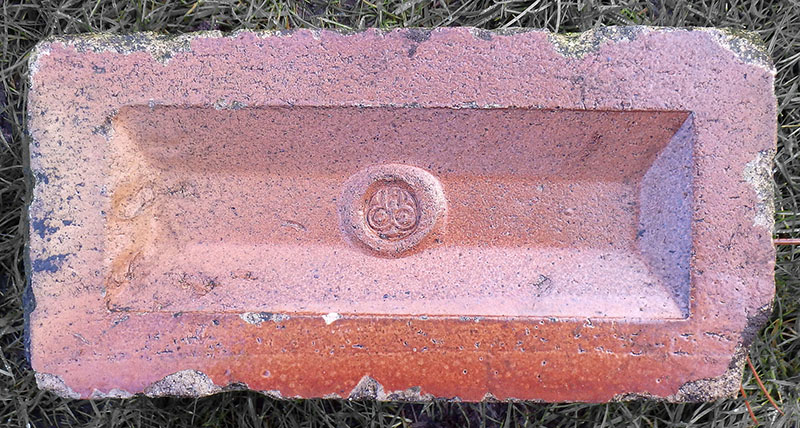
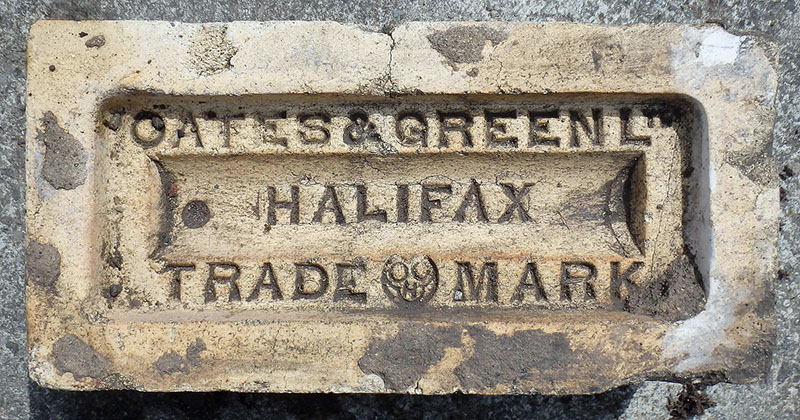
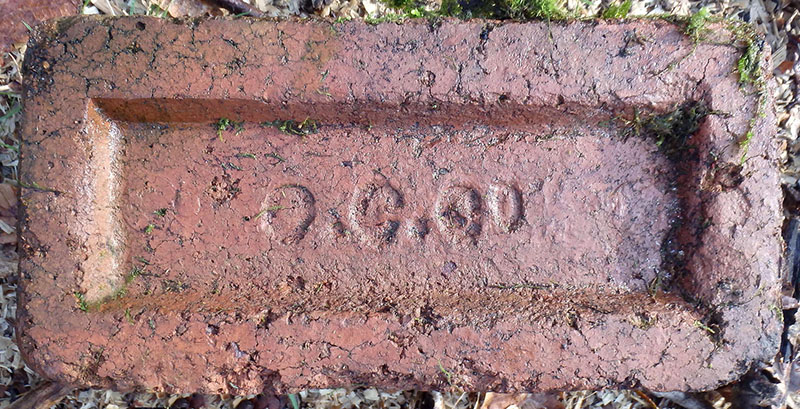
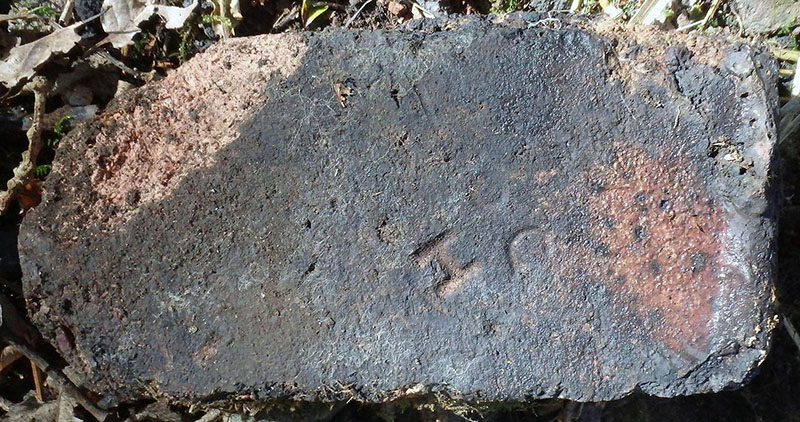
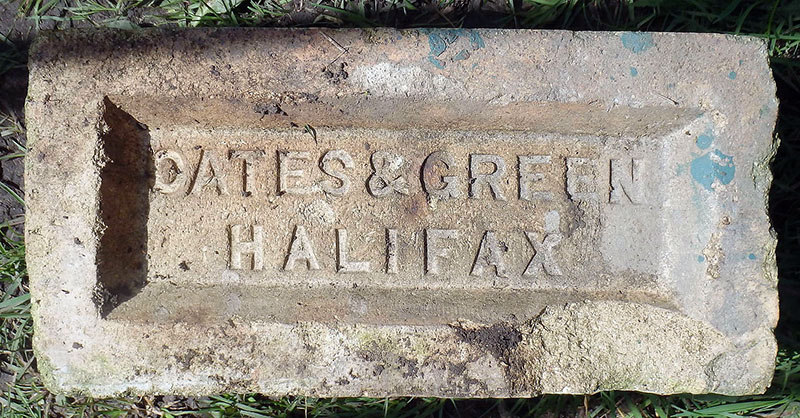
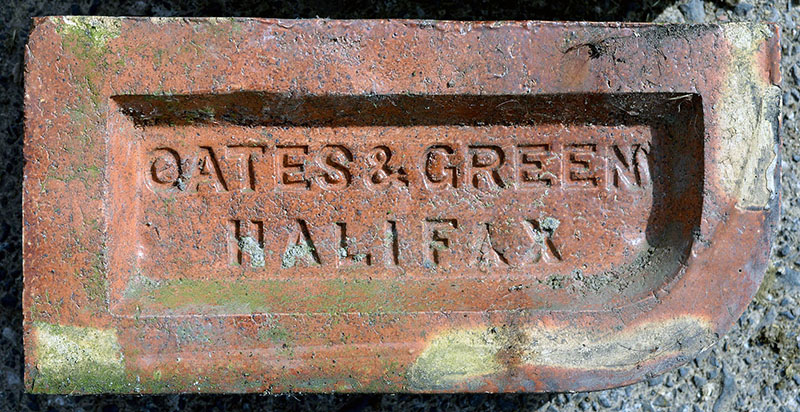
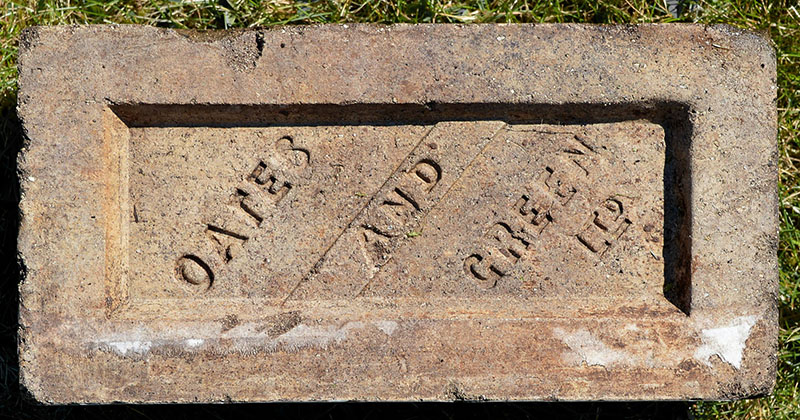
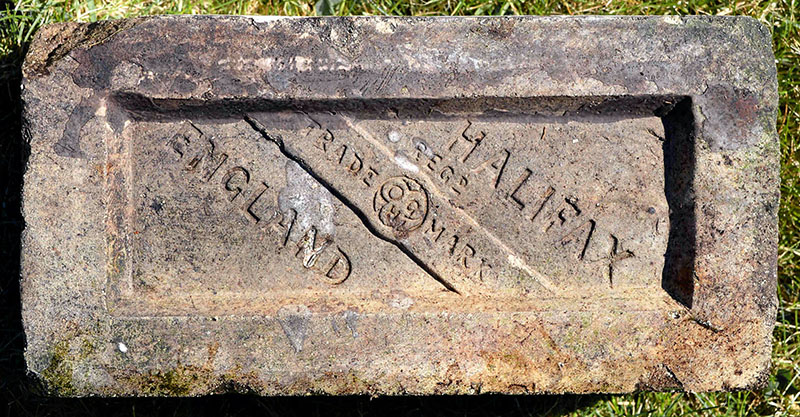
The front and back of an Oates & Green glazed brick. Photos by courtesy of the Frank Lawson collection.
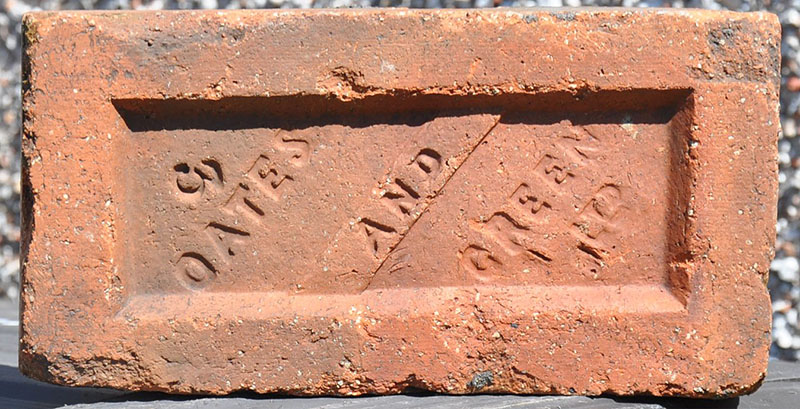
Photo by Chris Shaw.
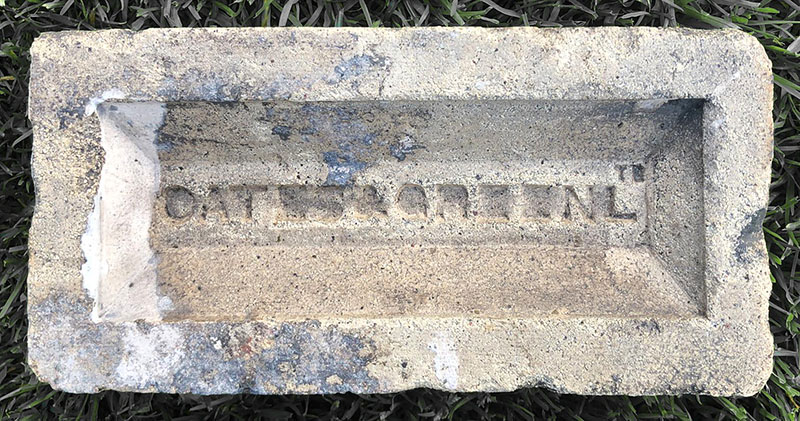
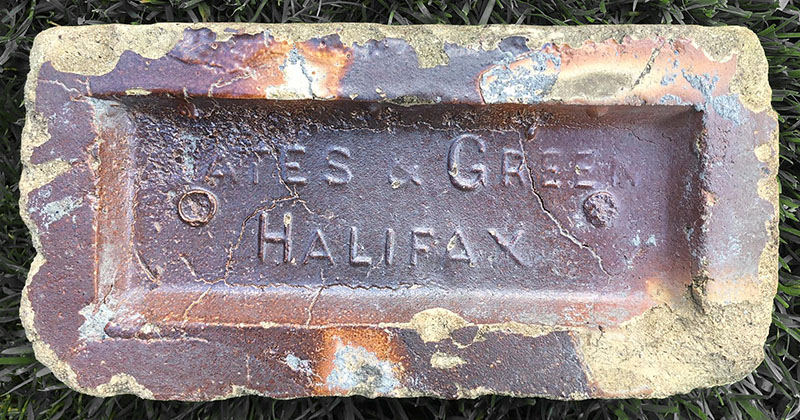
Photos by Jason Stott.
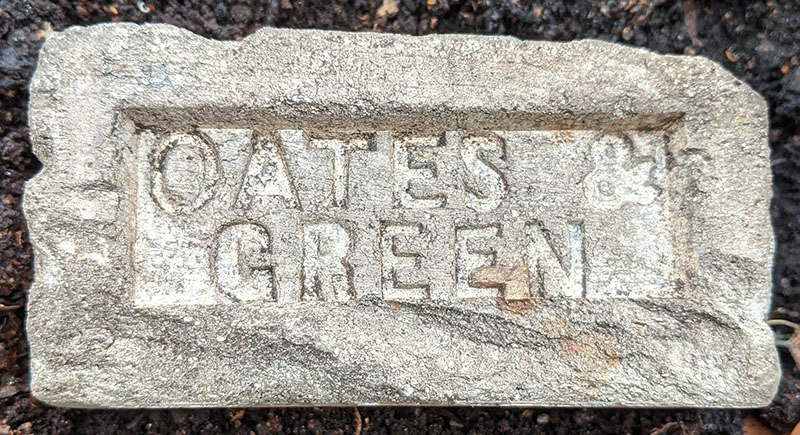
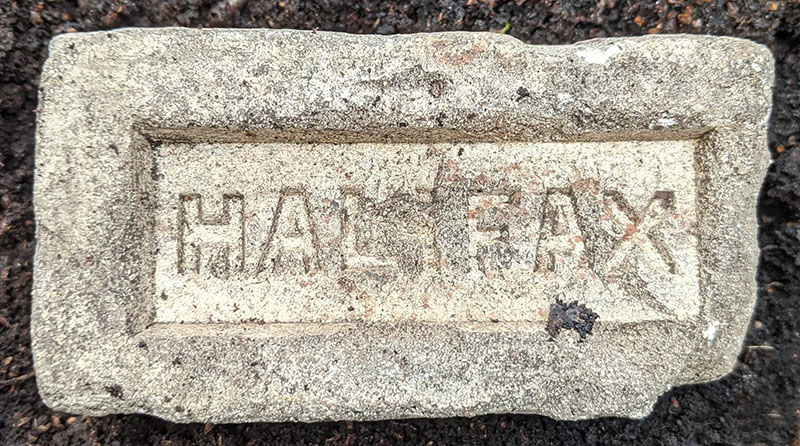
Miniature glazed brick used in a fireplace, Photos by Daniel Whitehouse.
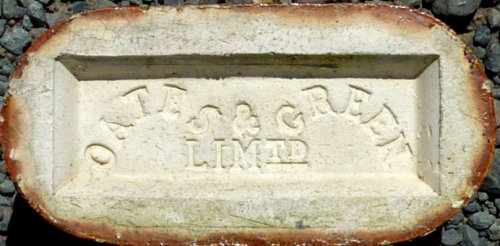
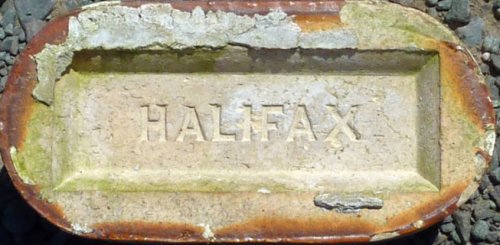
Photographed at North Shropshire Reclamation yard. by Martyn
Fretwell
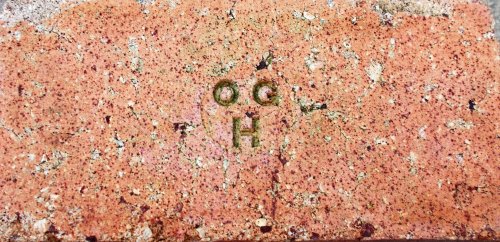
Found in Riccall, North Yorks by Ian Prest.
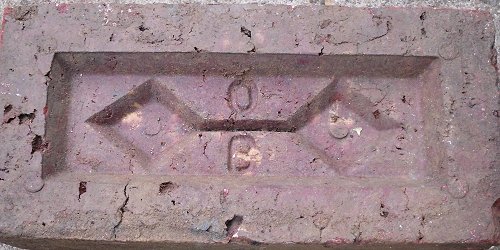
Sue is interested in the history of this one. Found underneath an old path in a garden in Harrow, Middlesex. James has now filled in some info: I saw what looked like a familiar local brick to me on your Mysteries page. O.B could be Ockley brickworks (AKA Ewhurst and Smokejacks) in Surrey. These bricks were known as Double Diamonds and are pressed bricks. Works is currently just producing specials for other local Wienerberger works.
Ian Whaley writes: I worked at Ockley brick in the early 1990’s. Smokejacks was the original name of the Ockley works. Ewhurst brick works made handmade bricks and clay roof tiles, and was situated just up the road from Ockley. They had the markings EBW. Towards the end of my time all bricks and tiles were made solely at the Ockley works. Double Diamond was the name of the extruded bricks and reflected by the markings in the frog. The company was owned by Blue circle cement at the time I was there, and they also owned the Smeed Dean works in Sittingbourne Kent. Here the original Yellow London stocks were made. Ockley was sold to Chelwood brick in 1997.
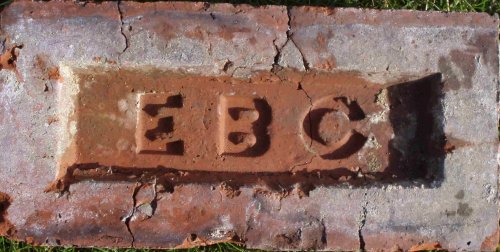
Photo by courtesy of the Frank Lawson collection. Dave Johnstone believes this to be the Ewhurst Brick Co.
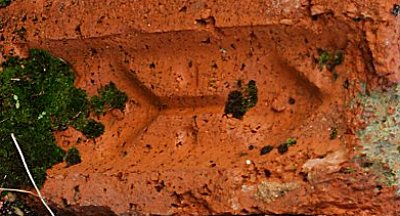
Vicky spotted this one in a wall in Oxford. What appears to be
an arrow is actually two diamonds.
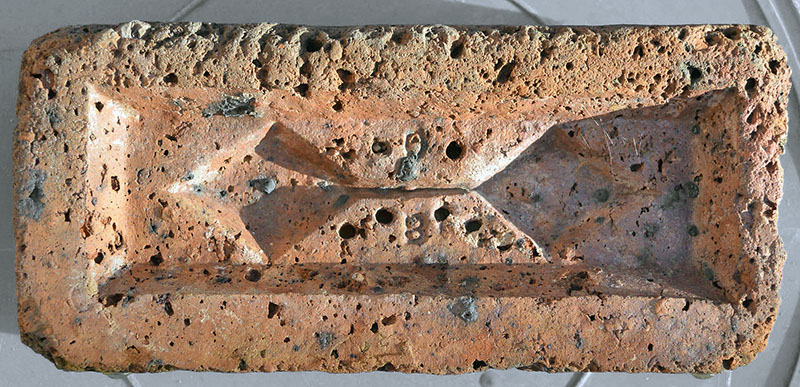
Photo by Frank Lawson.
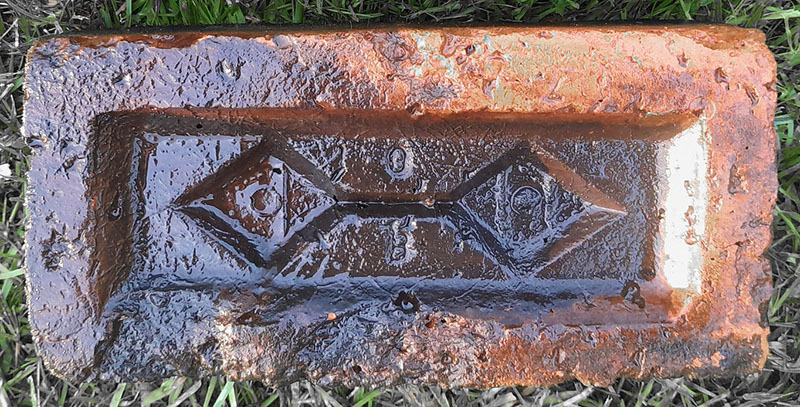
Photo by Ian Suddaby.
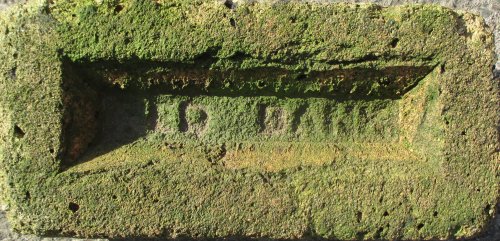
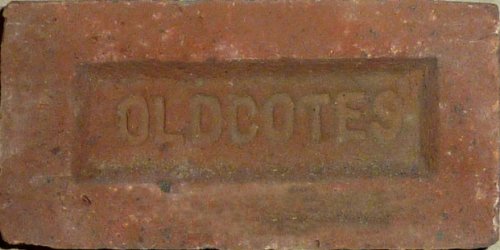
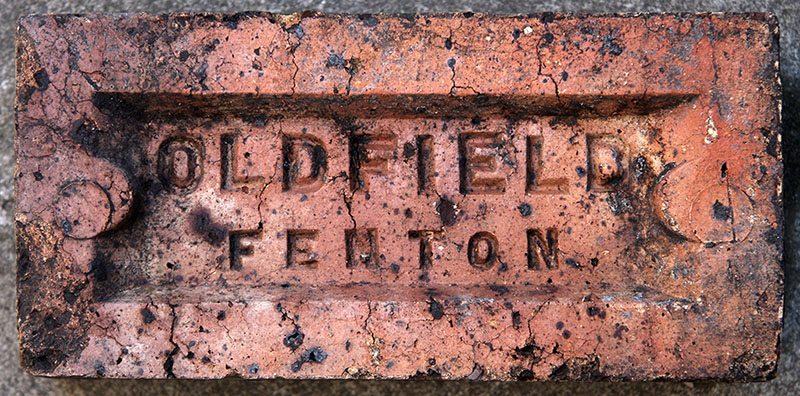
.jpg)
Oldfield Brick & Marl Co, Duke St, Fenton, North Staffordshire. The business appears in trade directories between 1907 and 1924. Photos by David Kitching.
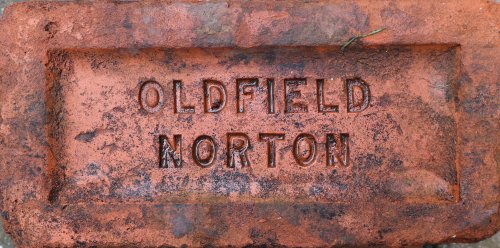
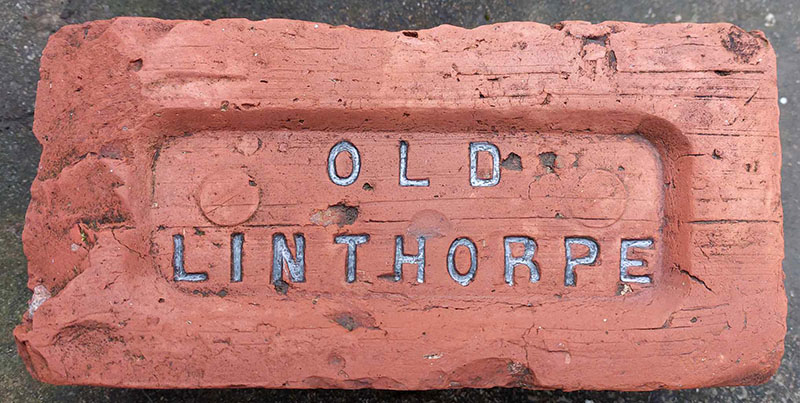
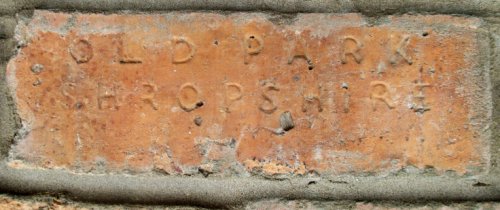
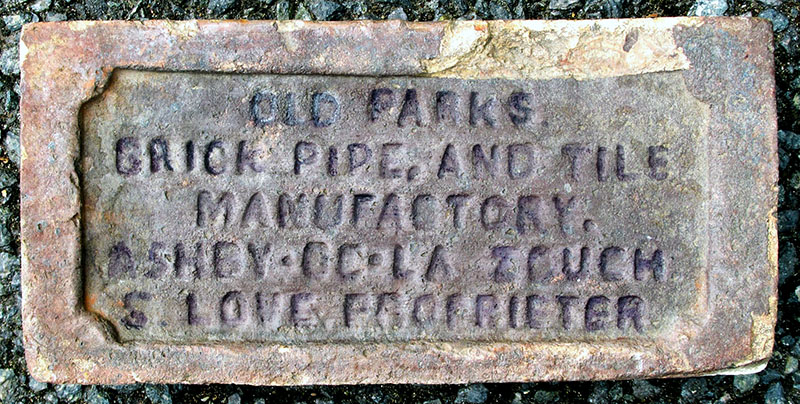
Samuel Love is listed in the Brick Manufacturers section of White's 1877 edition with the address of 79, Market Street, Ashby-de-la-Zouch. Then in the Ashby street index Samuel Love is listed as a Currier of leather, farmer, brick, tile & sanitary manufacturer, Inland Revenue Office, Midland Railway parcel receiving office and the Victualler of the Queens Head, 79, Market Street, Ashby, so a very busy man. This listing also records his home address as Ivanhoe House, Old Parks, Ashby & this house was next to the brick manufactory. There had been a brick yard on the same site in 1799 when the bricks needed to build the nearby Ashby to Derby tramway tunnel were made. Info & Photographed at Ashby Museum by Martyn Fretwell.
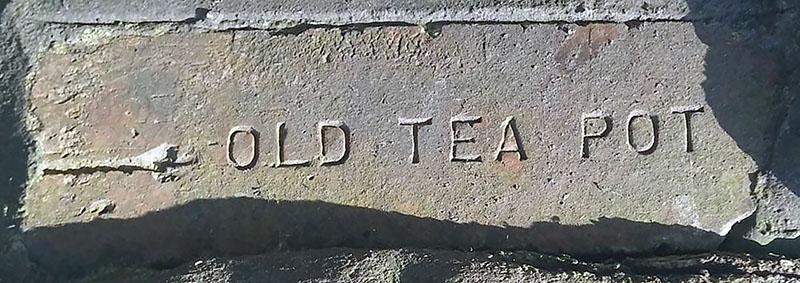
The Old Teapot Brickworks was opened in 1880 as the St. Helens Brick and Tile Works. After a number of name changes around 1900 as the Liverpool and St.Helens Brick Co., it was purchased by Wood and Co. During the 1920s, J. J. Bate acquired the company which was rebranded as The Old Teapot Brickworks. As well as bricks the business made teapots, fireplace tiles and vases.Production was greatly reduced during the 1950s and the works finally closed about 1967. Photo by John Fletcher Snr.
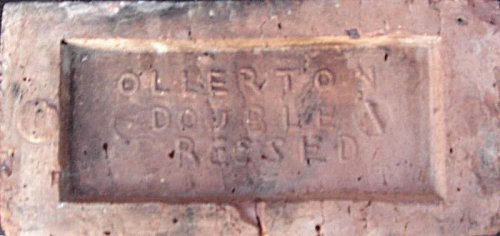
Photographed by Simon Patterson in North Nottinghamshire.
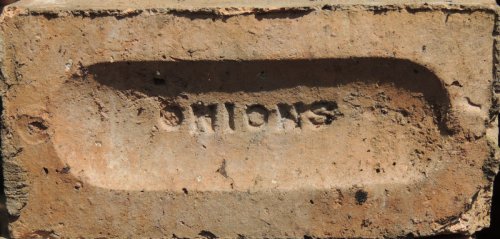
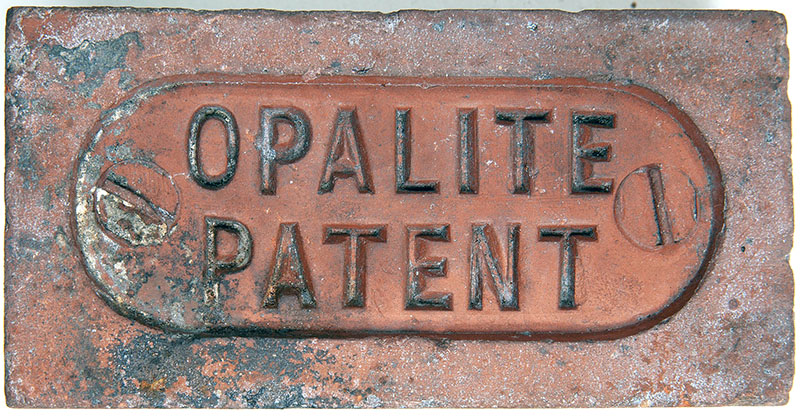
This miniature brick will have been made on contract ofr one of the companies associated with the Opalite Patent. An 1895 notice warning against infringement was issued in the name of The National Opalite Glazed Brick and Tile Syndicate of London and the Lancashire and Cheshire Opalite Glazed Brick and Tile Company Limited. The patent referred to the making of glazed bricks, tiles, slabs, wallings, ceilings. The process seems to have been licensed from the Syndicate to regional companies. In 1896 there was The North-Eastern Opalite Glazed Brick And Tile Co., Ltd as sole licensees for Northumberland, Durham and Yorkshire.They offered all kinds of glazed work for public and private buildings, Old and new brickwork glazed.
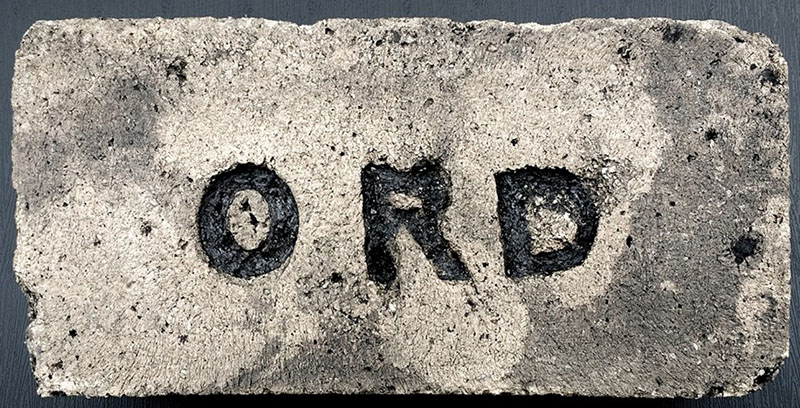
In 1858 R Ord is listed as a firebrick manufacturer in Sunderland. Photo by Chris Tilney.
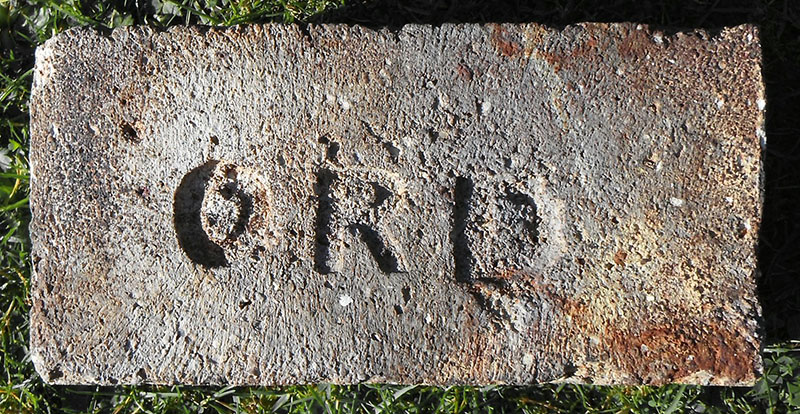
Photo by Ian Suddaby.
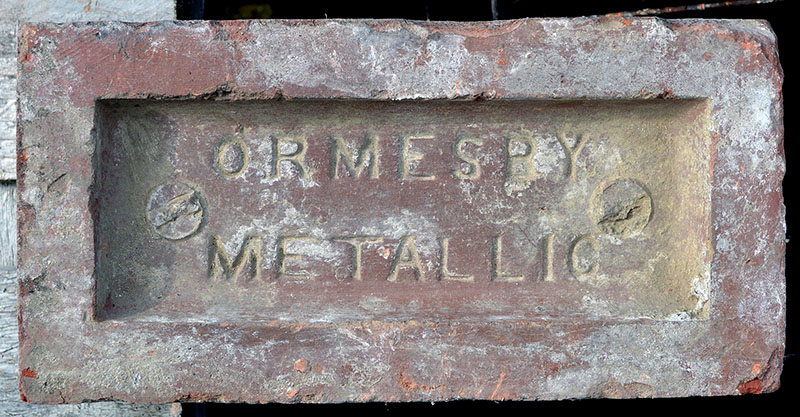
Photo by Frank Lawson.
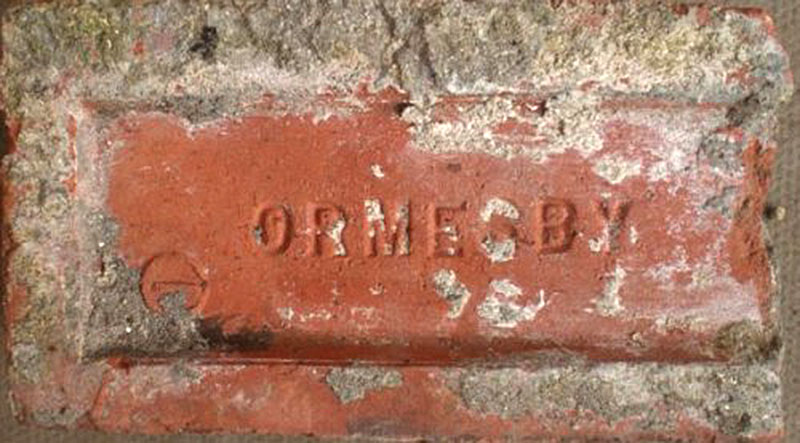
Ormesby Metallic Brick Co., Ormesby, Middlesbrough.
In 1902, a brickworks owned by the Ormesby Metallic Brick Co. was established but this company lasted only until 1913. Between 1913 and 1916 the brickworks operated under the ownership of J. Crossley & Sons, a well-known local builders merchants and brick supplier. In 1916 the site was bought by the Cleveland Magnesite and Refractory Co. who would go on to purchase the neighbouring Normanby brickworks two years later. Info by Frank Lawson, photo by Alwyn Sparrow.
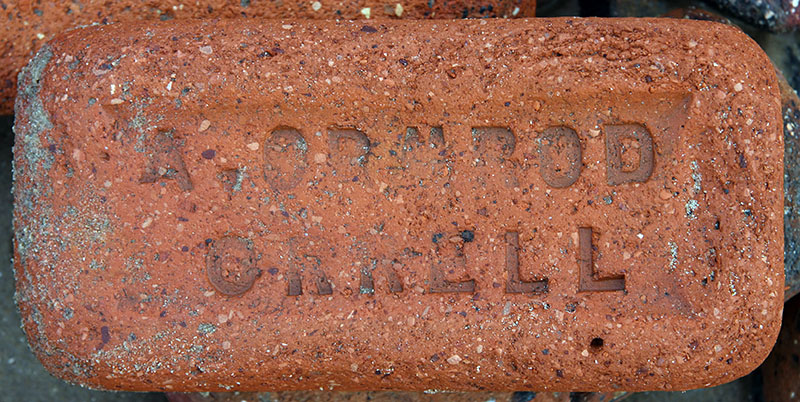
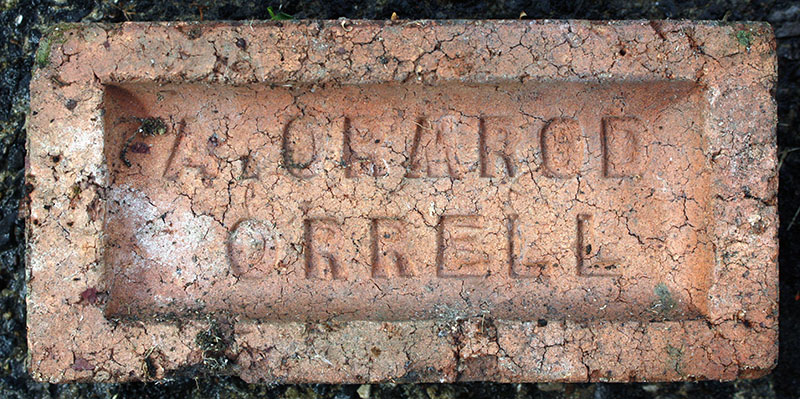
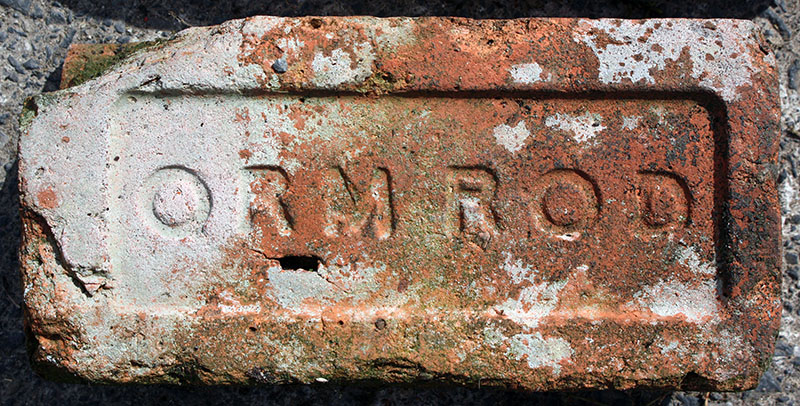
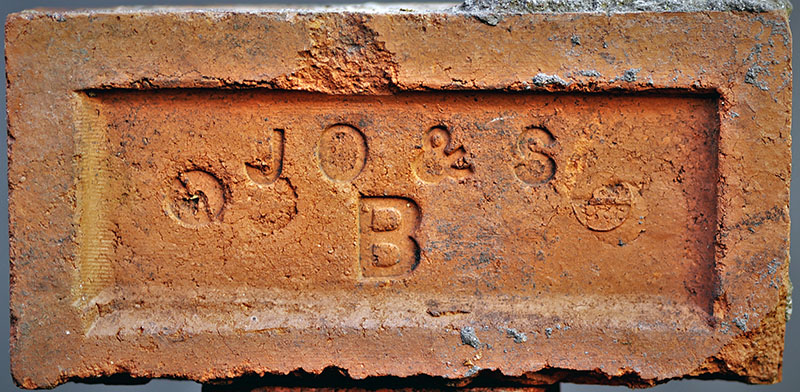
James Ormrod & Sons, Bolton. Photo by Henry Lisowski.
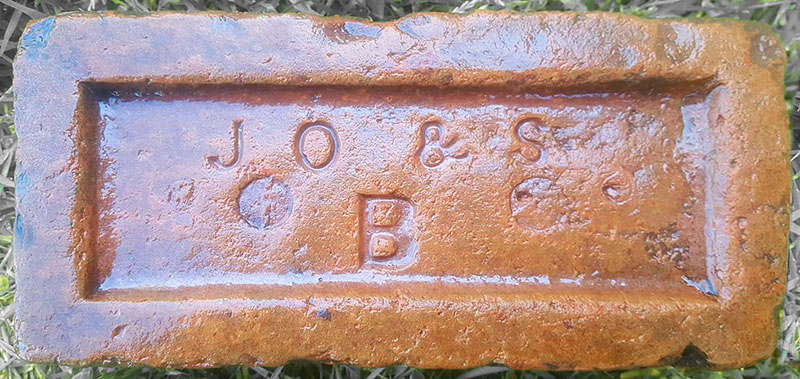
Photo by Jason Stott.
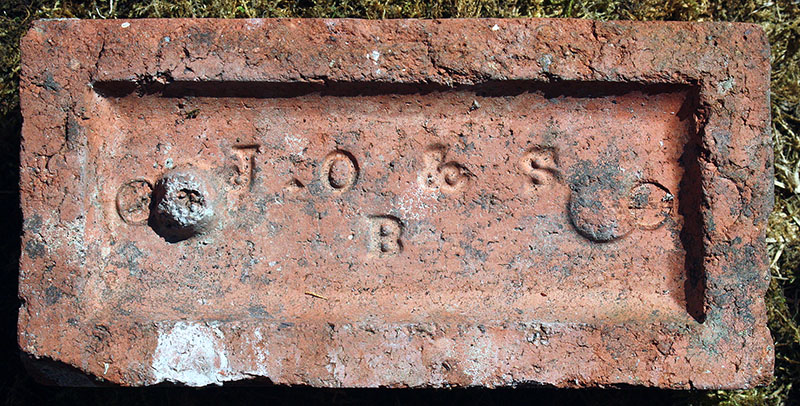
Photo by David Kitching.
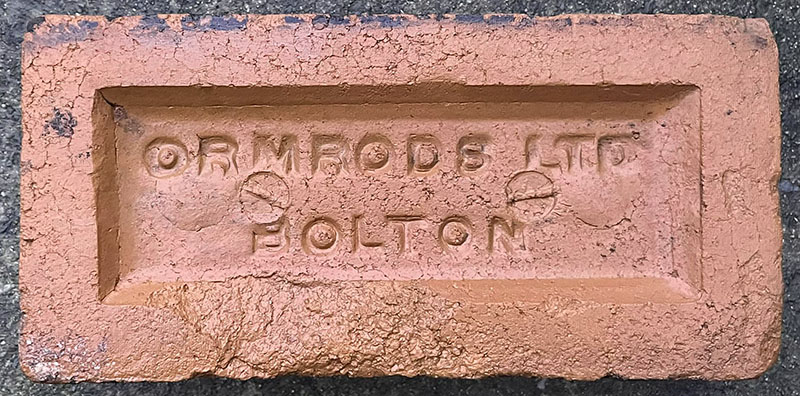
Photo by Phil Burgoyne.
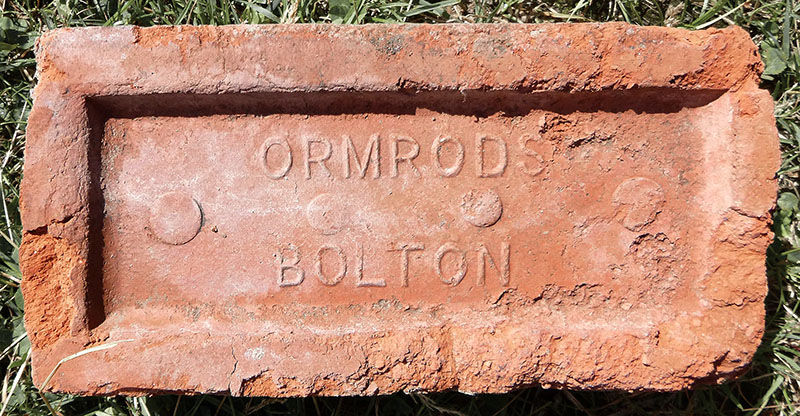
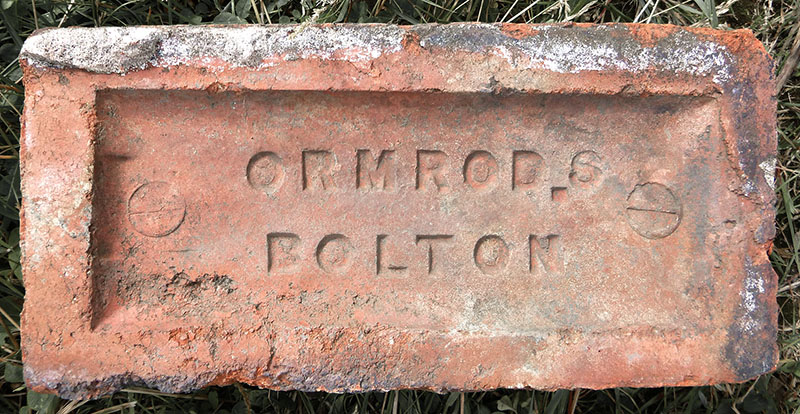
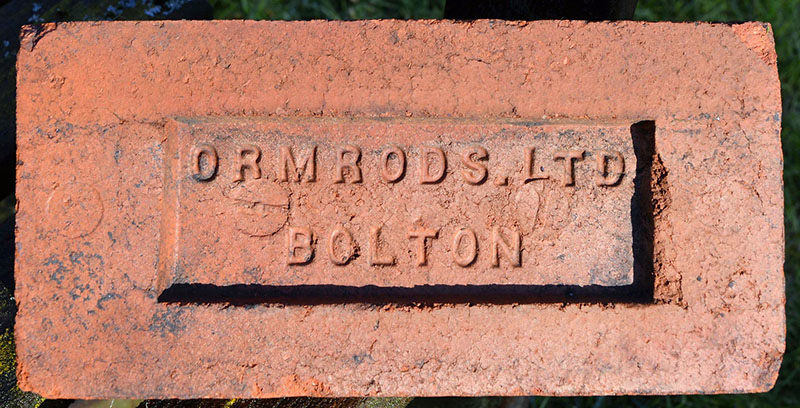
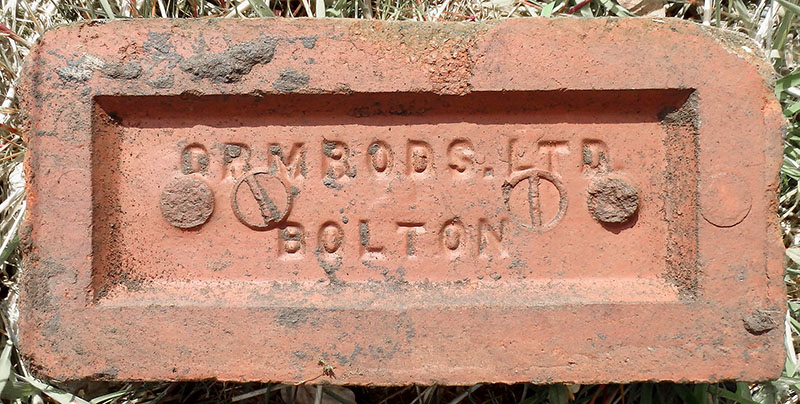
James Ormrod and Sons, Shipton Brick and Tile works, Bolton.
Listed in Kelly 1901. Photos by courtesy of the Frank Lawson collection.
The Ormrod Bros. - Peter,James and William - owned individually
and jointly several brickworks in the greater Bolton area in the
latter half of the 19th century. Some of these were: Shipton
Brick & Tile works, Chorley Old Road, Heaton Brickworks, Markland Hill Lane, and Eskrick Steet Brickworks, Brownlow Fold. Info by Colin Driver.
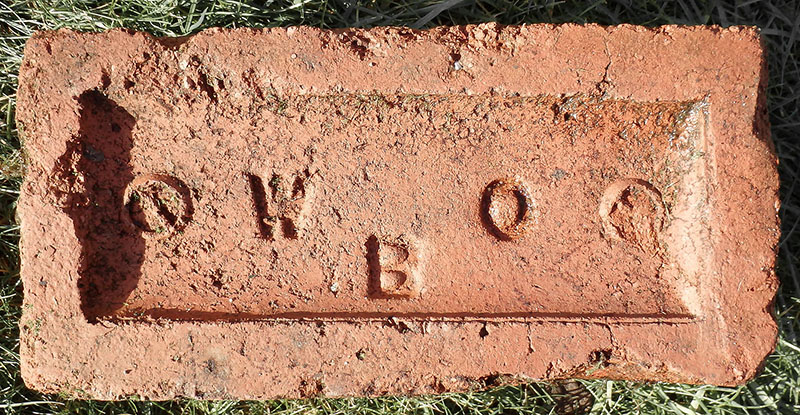
William Ormrod, Shipton Brick & Terra Cotta Works, Chorley Old Road, Bolton. Bolton Trade Directory 1888. Photo by Frank Lawson.
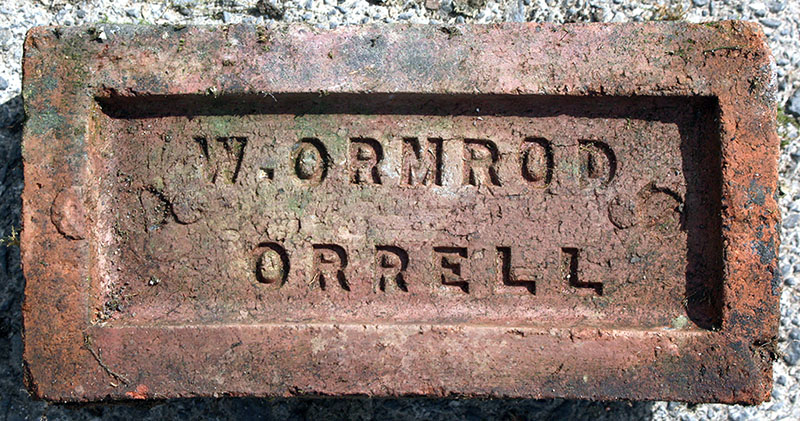
William Ormrod, Orrell & Winstanley Brickworks, Orrell, Wigan. Photo by David Kitching.
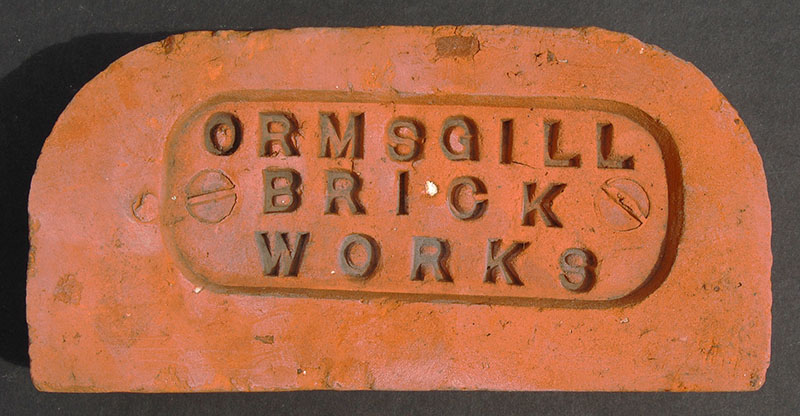
Made by the Ormsgill Brick Co, Ormsgill Lane, Barrow in Furness. The date of production was c1875 - c1920 and possibly owned for a time by the Furness Brick Company. Info Angus Glasgow and image PRBCO.
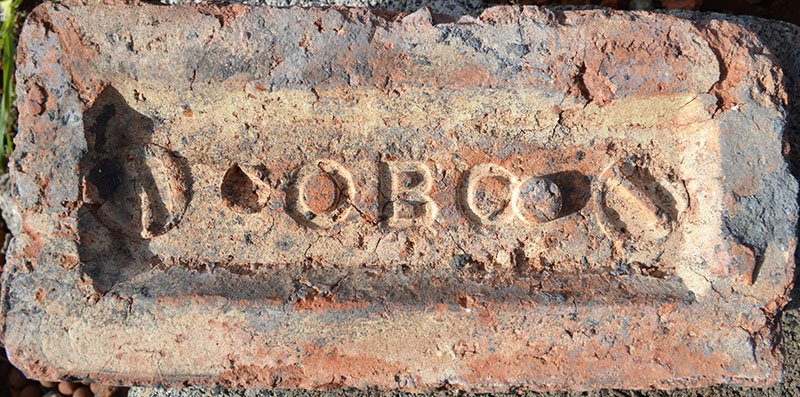
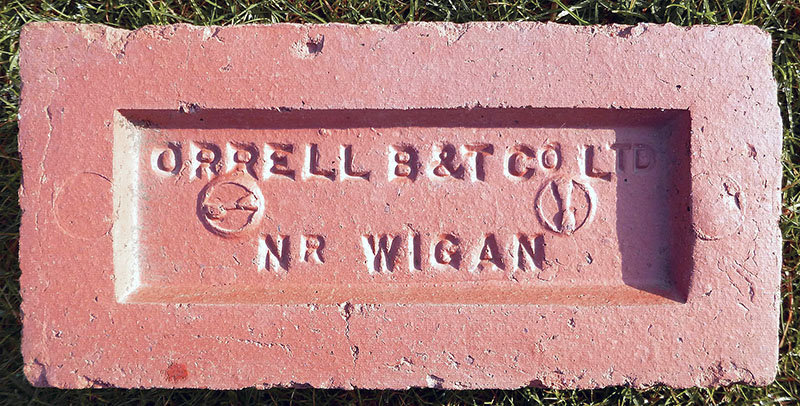
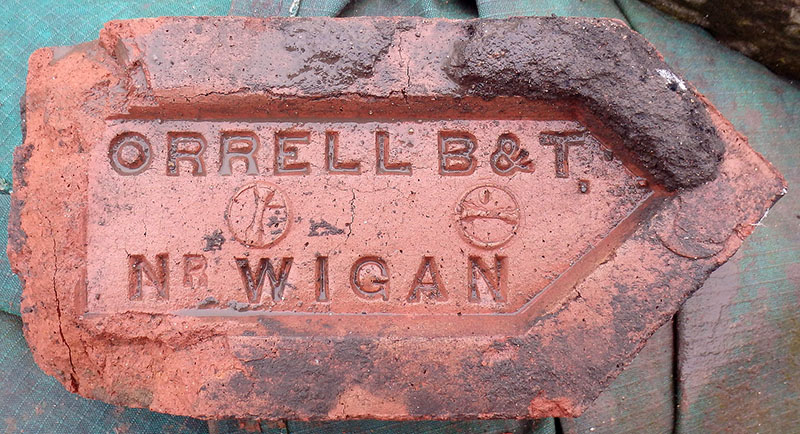
Photos by Frank Lawson
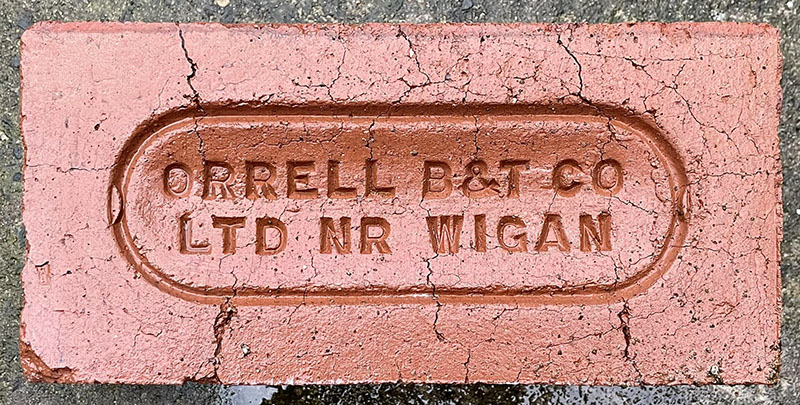
Photo by Phil Burgoyne.
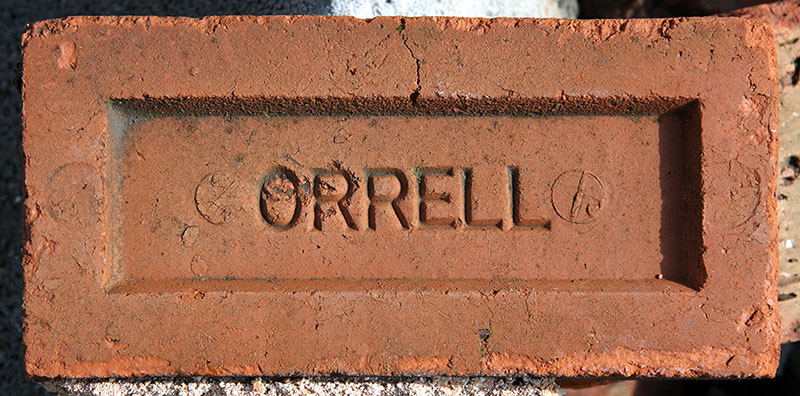
Photographed on the seashore at Crosby, Merseyside. ORRELL BRICK & TILE COMPANY LIMITED, At an Extraordinary General Meeting of the above-named Company, duly convened, and held at 13 Chorley Old Road, Bolton, Greater Manchester on 9th August 1978, the following Special Resolution was duly passed: That the Company be wound up voluntarily, and that Alan Blinkhorn of 13 Chorley Old Road, Bolton, Greater Manchester be and he is hereby appointed Liquidator for the purposes of such winding-up." W. Southern, Secretary. Info by Frank Lawson. Photo by David Kitching.
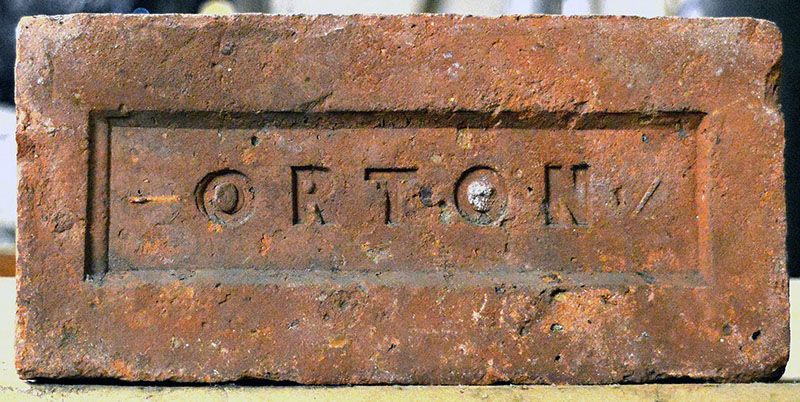
H. Orton, brickmaker, Kings Newton, Melbourne, Derbys. P.O.
Directory 1855 edition. Info by Martyn Fretwell & photographed at Derby Silk
Mill Museum by Frank Lawson.
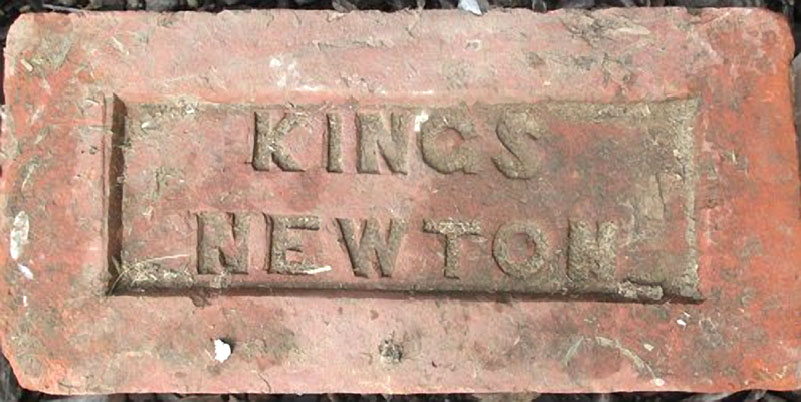
Reverse of Orton brick. Photo by Mike Shaw.
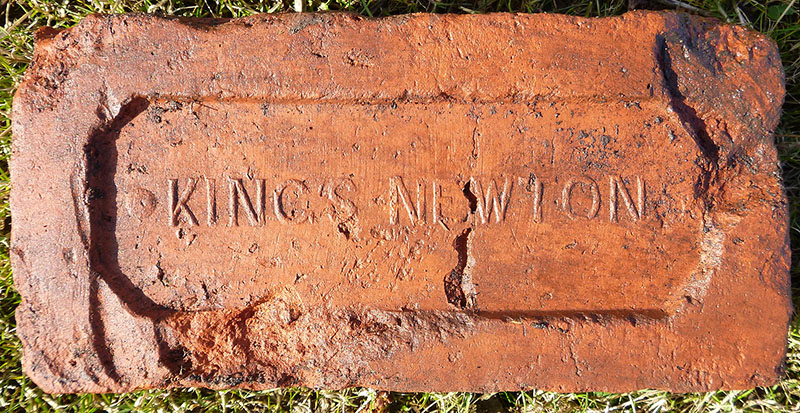
.jpg)
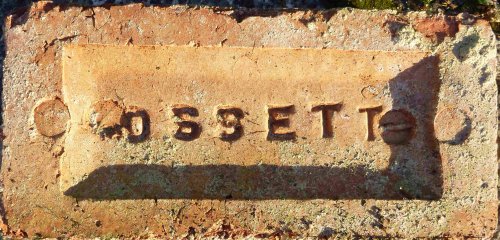
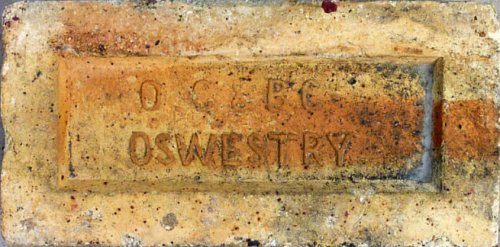
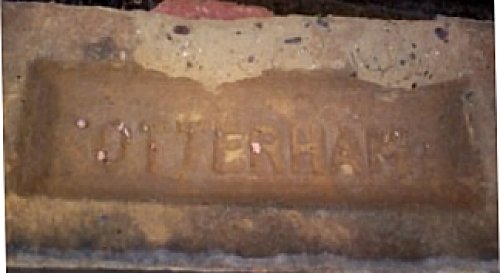
Made at Otterham quay in Kent and spotted by Vicky in Oxford.
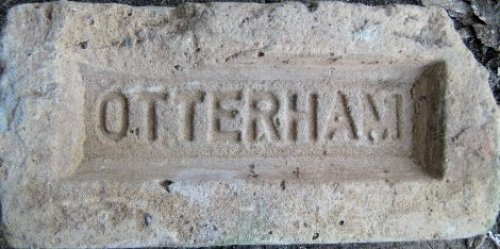
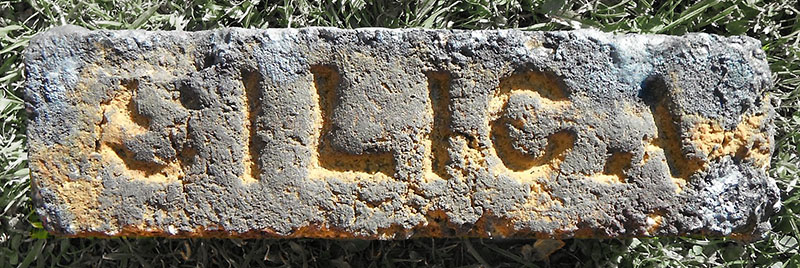

Found at the Dalzell Steelworks site and probably a General Refractories product from their Oughtibridge works near Sheffield, formerly owned by Charles Bramall Ltd. Photos by Ian Suddaby.
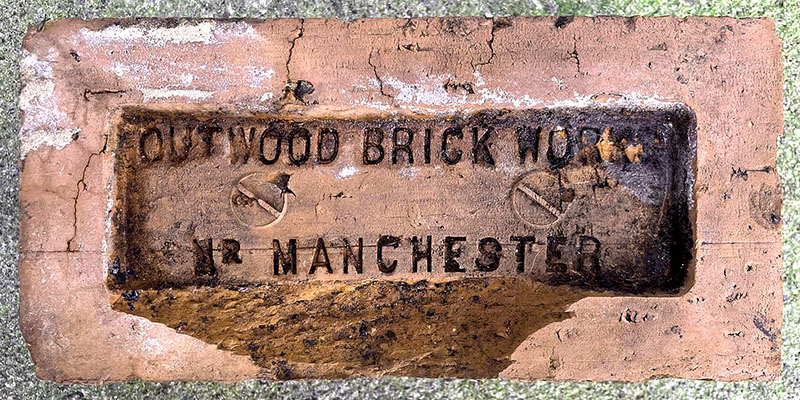
Photo by David McNicholas.
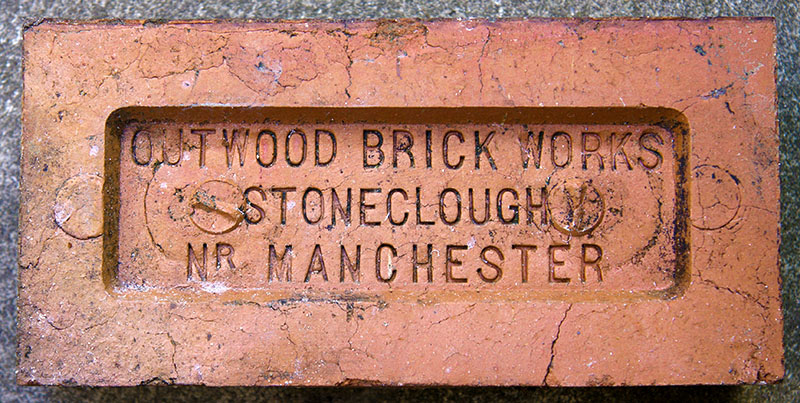
This brickworks with its colliery was located between Radcliffe and
Outwood near Manchester. The colliery closed in 1931 and was
followed by it's brickworks, coal yard, power station and associated
railway. The land was first acquired by Lancashire County Council
then Greater Manchester Council in the 1970's and was later
transformed between 1994 and 1999 by Bury Council into the Outwood
Forest Park. Info supplied by Martyn Fretwell.
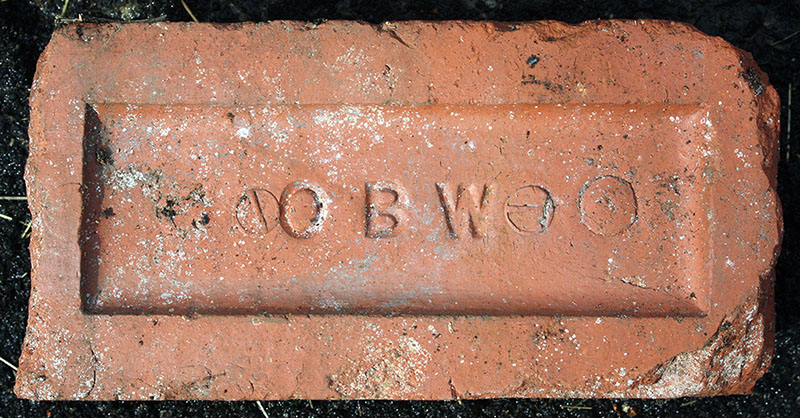
Photos by David Kitching.
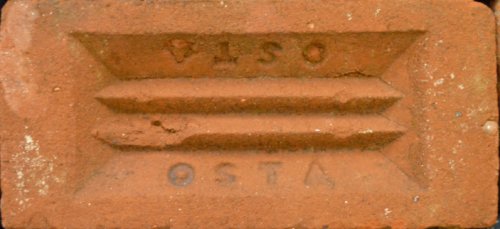
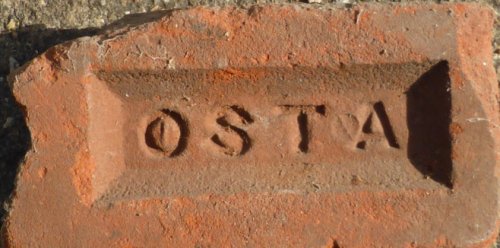
O.ST.A. stands for Owen, St. Albans. Joseph Fenwick Owen
started this works in 1899. His son, also named Joseph Fenwick Owen,
followed his father at this works until it closed around 1941.
Kelly's 1902 to 1937 editions records this works as Hill End, St.
Albans & was next to Hill End Railway Station. The Owen family
operated a 2nd works at Ayot's Green, Welwyn between 1912 &
1941. Then a 3rd works at Gustard Wood, Wheathampstead which is
listed in Kelly's 1922 to 33 editions. The family were also builders
based in Wheathampstead. Also see Ayot entry. Photo & Info by
Martyn Fretwell.
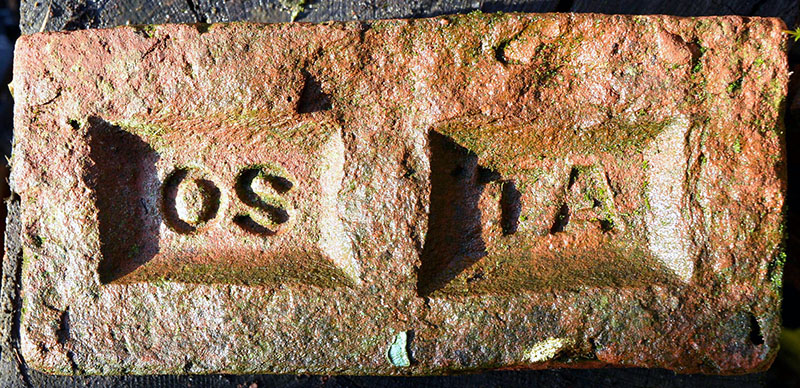
Photo by Frank Lawson.
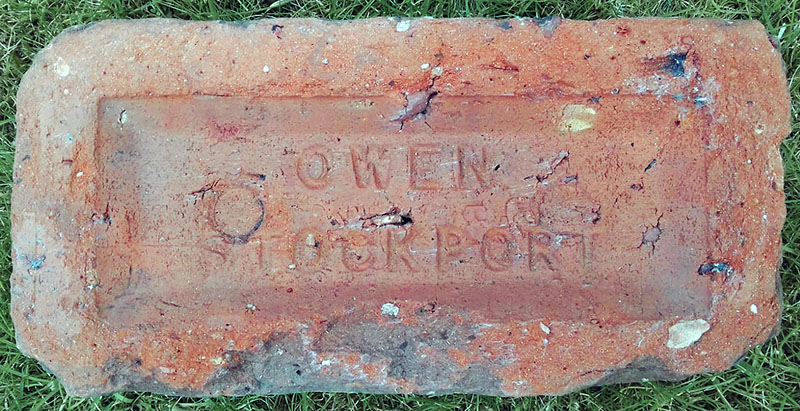
The brickworks was off Cow Lane, Hempshaw Lane, Stockport. The 1895 map shows a brick field and 1910 a brickworks. In 1928 J R Owen Ltd is listed but all was gone by 1933. Photo by Steve Biddulph.
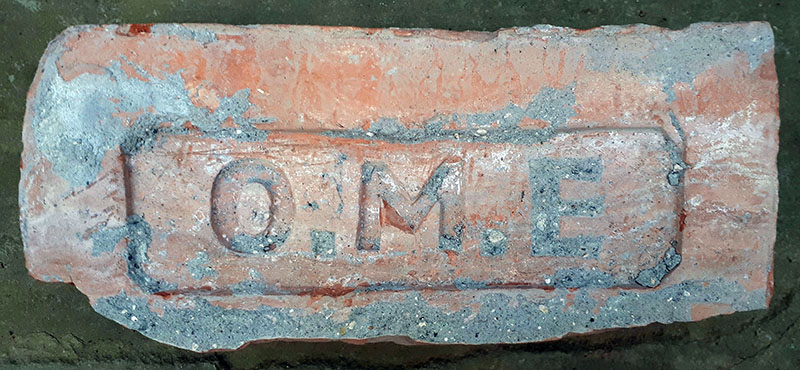
The Owners of the Middlesbrough Estate developed Saltburn in the 19th century
as a place to live and have summers away from Middlesbrough. Photo by Saltburn Countryside Volunteers.
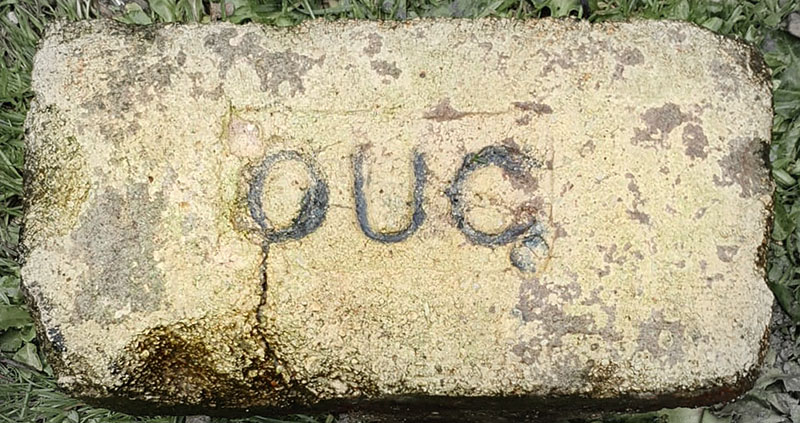
Photo by Stephen Pinder.
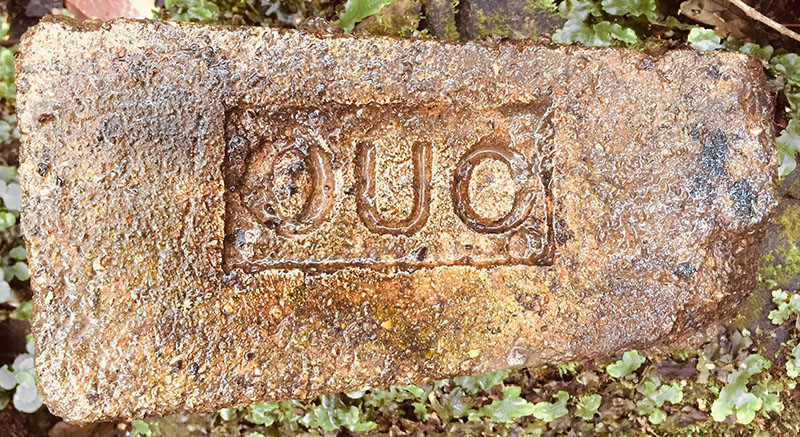
Photo by Stephen Tait who found this brick at Sacriston, County Durham. Identifying the maker has proved to be challenging but the most likely answer is 'Owners of Urpeth Colliery'.
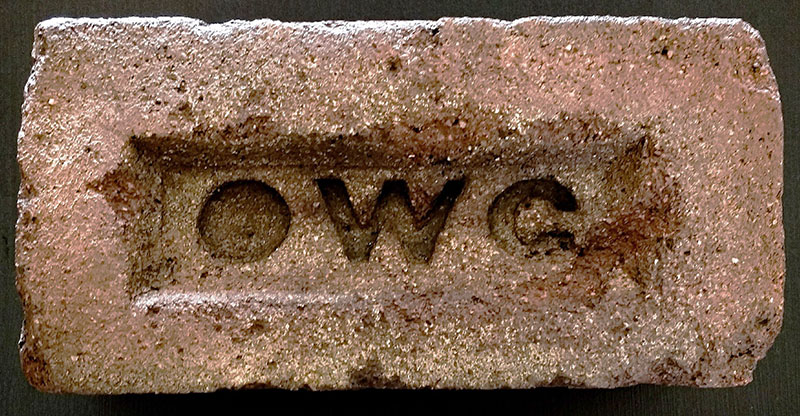
Found at the former site of Throckley Colliery, which was on the north bank of the river Tyne, west of Newcastle. It is believed that the initials may represent Owners of Wearmouth Colliery. Photo by Chris Tilney.
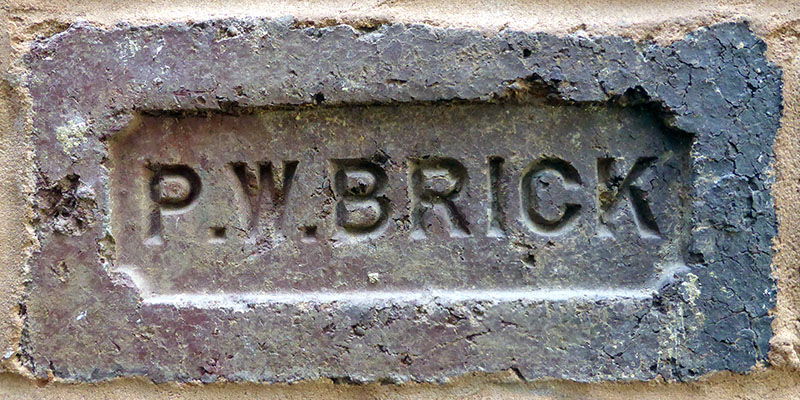
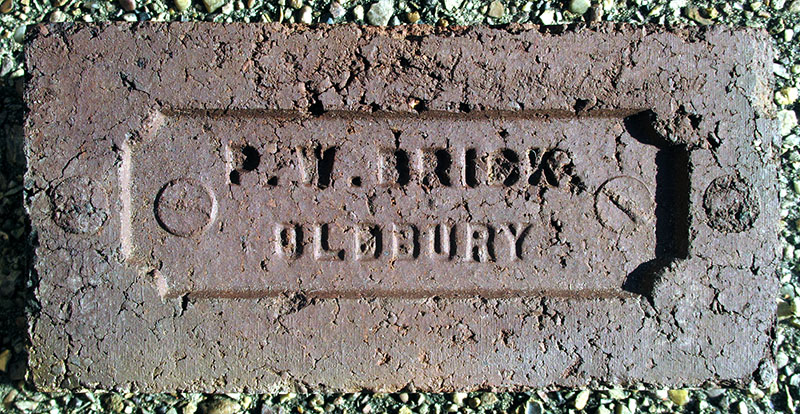
Birmingham Daily Gazette - Thursday 18 October 1928. New Companies.
P.W. Brick Co., Ltd. - Capital £4,600. Manufacturers of bricks, tiles and building material of all kinds, etc. Directors: G. H. Webb and A. L. Parker.The business was struck off the joint stock register in 1938. Photos by Martyn Fretwell.
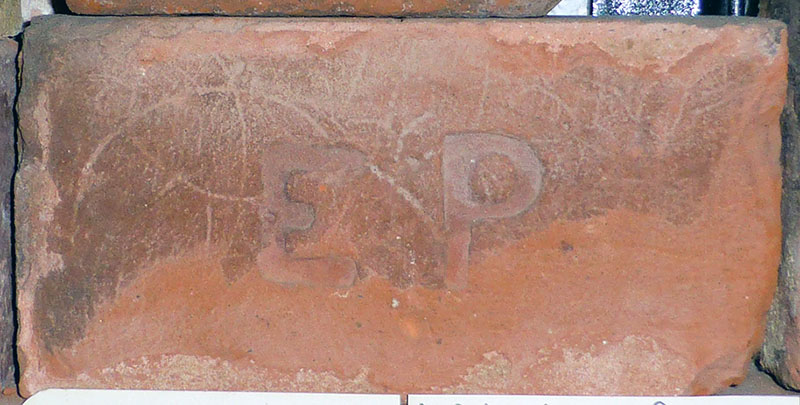
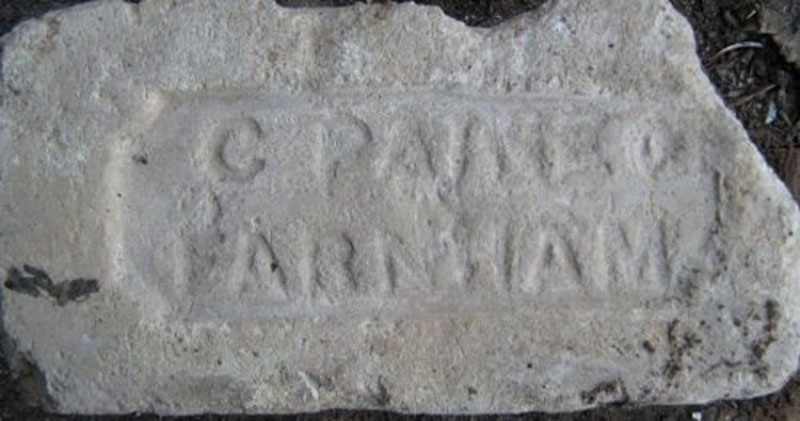
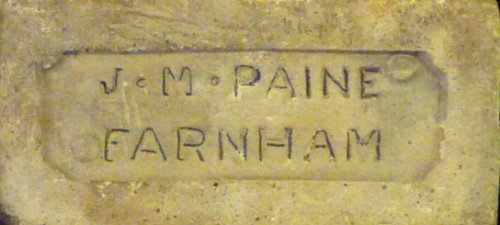
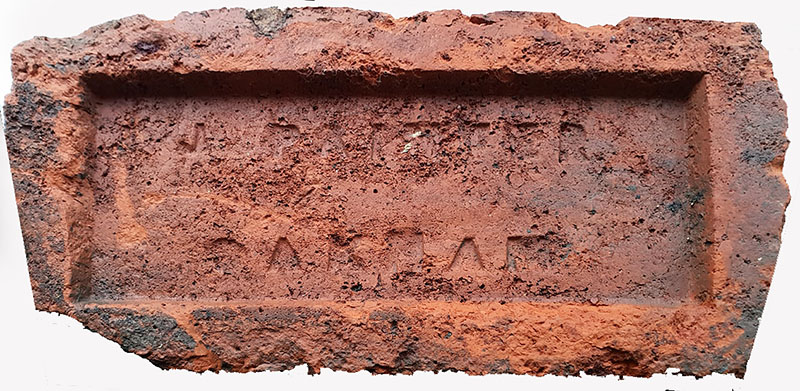
Slater's Directories of Rutland for 1850 and 1858 list Painter, John, brickmaker, Ashwell Rd, Oakham. This brickyard had a longer history and one of the kilns survived until 1987. Some of the later history and brief details of the kiln can be found here. Photo by Grahame Appleby.
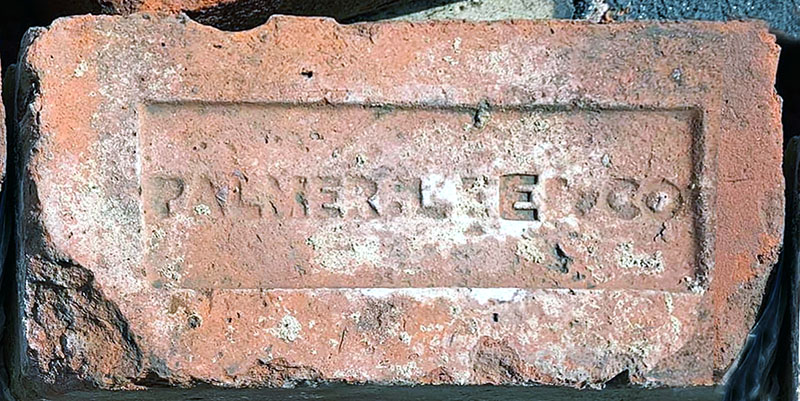
Palmer Lee & Co were saw millers in Worcester. They were bankrupt in 1865 and assets auctioned off. Photo by Richard Hodges.
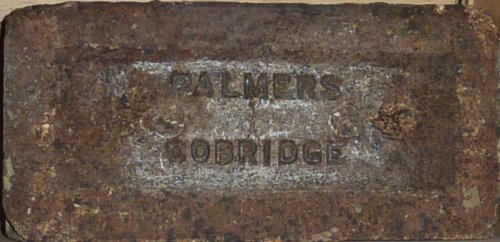
William Palmer & Sons, Leek New Road, Cobridge, Buslem are
listed in Kelly's 1904 to 1940 editions. William had a second works
at Davenport Street, Longport (see below) & this works is
recorded in Kelly's 1912 & 1916 editions. Info by Martyn Fretwell,
photo by David Kitching.
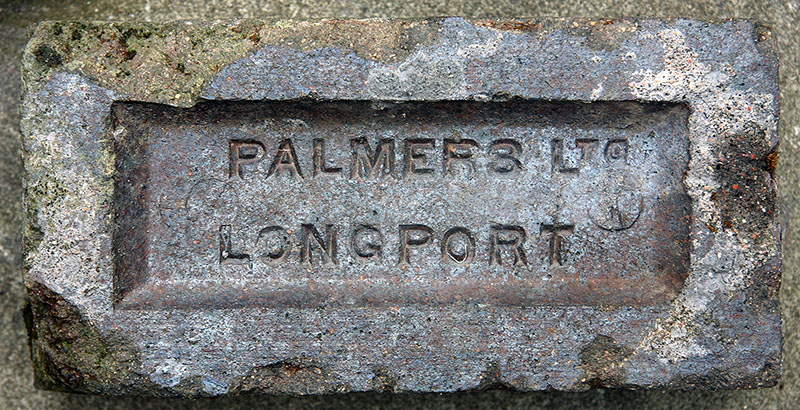
The brickworks of William Palmers is listed at Davenport Street, Longport in trade directories from 1907 to 1912. Photo and information by David Kitching.
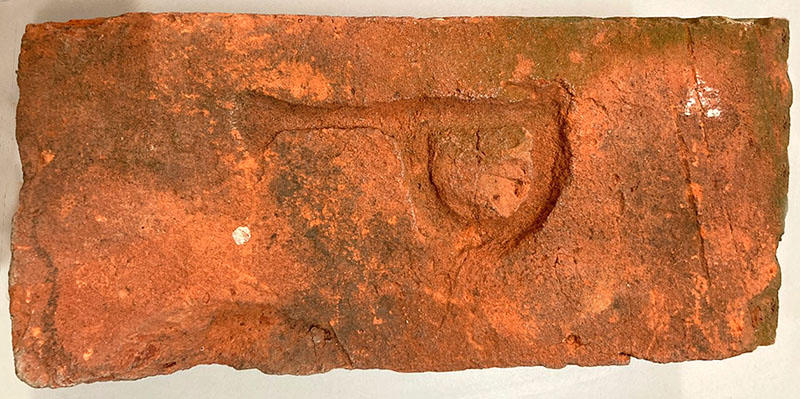
P - Palmerston. Thought to be from a works in the vicinity of Romsey, Hampshire. Photo and info by Richard Newman.
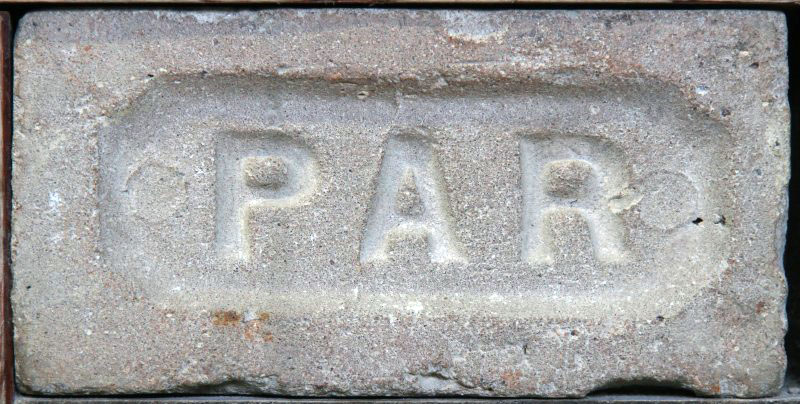
Par Harbour brickworks SX076532. Photo by David Kitching, part of
the collection at Wheal
Martyn China Clay Museum.
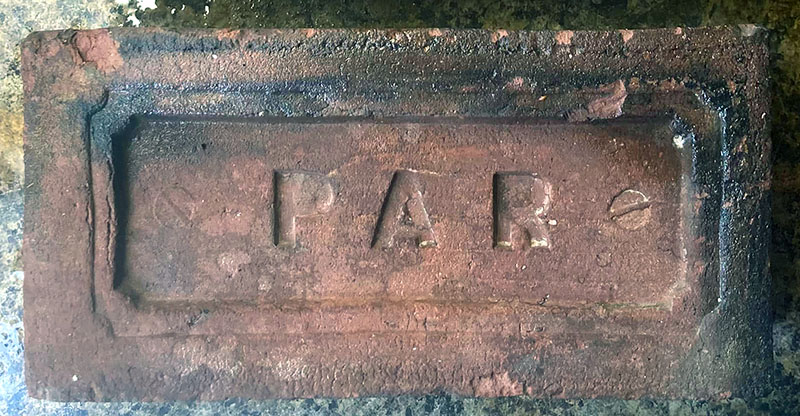
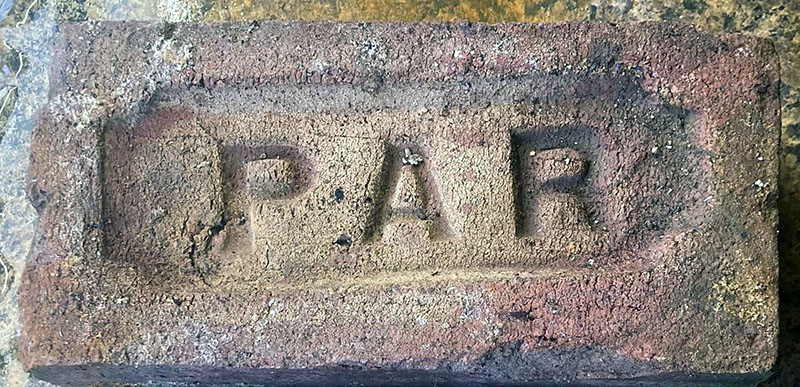
Photos by Ian Williams.
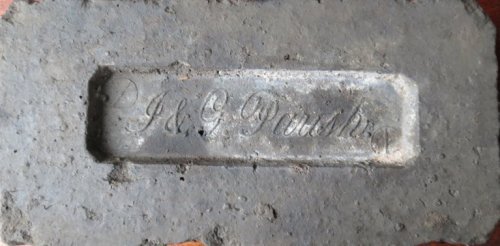
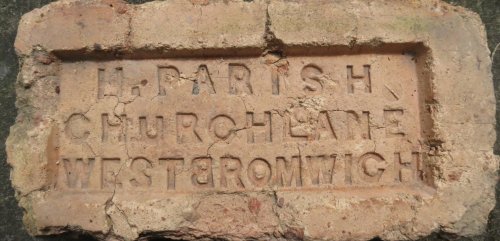
Henry Parish a Coal Master is listed as owning a brickworks on Church Lane, West Bromwich in Kelly’s 1868, 72 & 76 editions & this brickworks & his Hall End Colliery were situated on land behind the Nags Head Inn which Henry was also the owner/publican at. It appears from a newspaper article that with the sale of Samuel Chavasse's Church Lane colliery taking place at Henry Parish’s Nags Head Inn in May 1866 it resulted in Henry purchasing the colliery. We then find sons Joseph & George Parish went into partnership with Joseph running the colliery & George the brickworks & George is listed as brickmaker in Kelly’s 1876 & 1880 editions at Church Lane. The 1881 census is the last record of George being a brickmaker in West Bromwich. The brothers were also dealers in lime. Info by Martyn Fretwell & photos by William Whitehead.
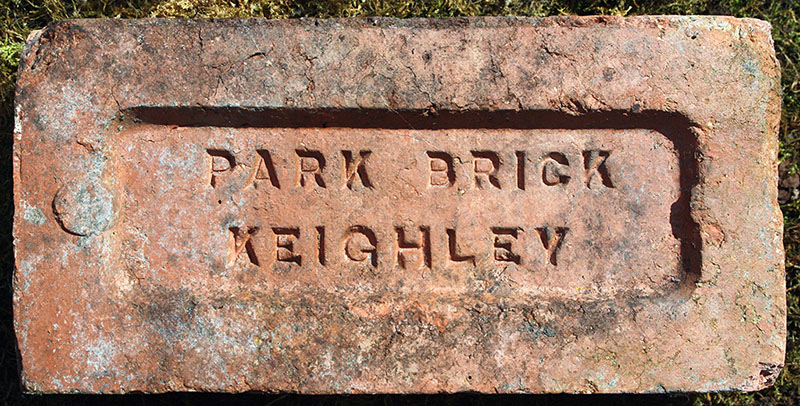
This brick works survived until quite recently. In 1879-1880 a Thos Cullingworth, Parkwood St, Keighley is listed as owner. In an 1881 West Riding trade directory and the 1884 Craven Commercial Directory the owners of the works are given as Cullingworth & Grace, Parkwood Street or Park Lane, Keighley. Thanks to Derek Barker for the information.
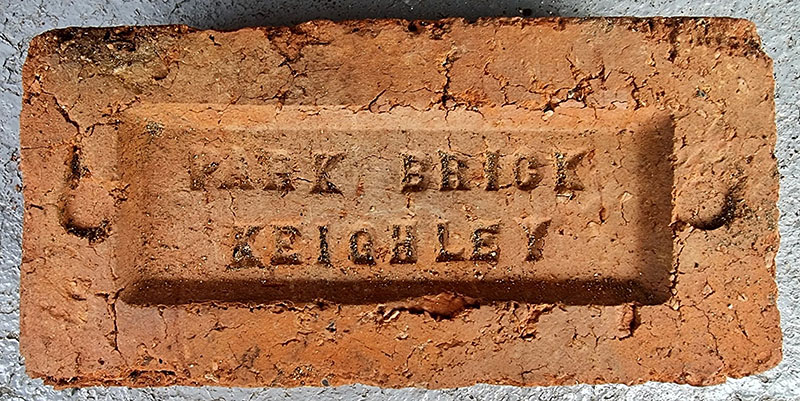
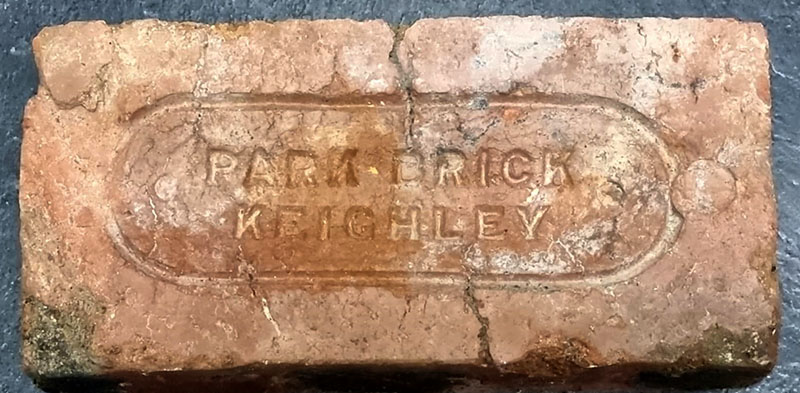
Bricks found by Evan Fox.
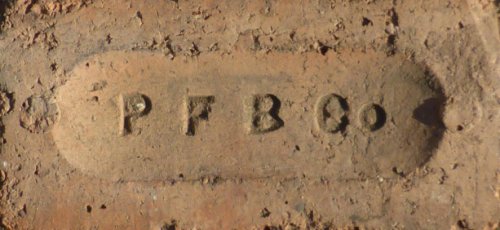
Park Foundry Brick Co. Belper, Derbys. is listed in Kelly's 1899
& 1900 editions. This brickworks is shown next to the foundry on
maps dated 1898 & 1913. The buildings & claypit are still
shown on the 1938 map, but not marked as such. The company had been
started in 1856 by the Smedley Brothers, who were primarily iron
masters making stationary steam engines, boilers & heavy
castings & may have only made bricks for their own & local
use, first at a brickworks next to their Eagle Works & then at
their Park Foundry Works from 1898. The Company also produced cast
iron streetlight columns & is best known for making the seaside
piers at Brighton & Morecambe. Brick production may have
finished by 1940 & after a takeover in 1949 the Park Foundry Co.
was renamed Parkray, producing the 'Siesta' solid-fuel boiler for
the home. Photo & Info by Martyn Fretwell.
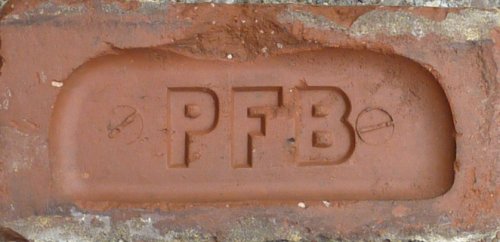
Found in Derbyshire by Martyn Fretwell.
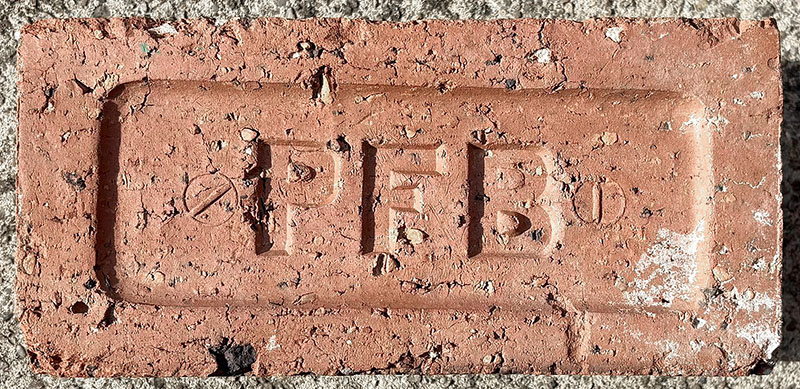
Photo by Phil Burgoyne.
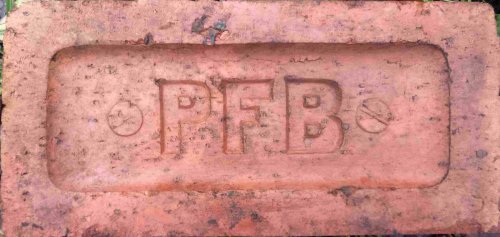
From the Phil. Sparham collection, photo by Frank Lawson.
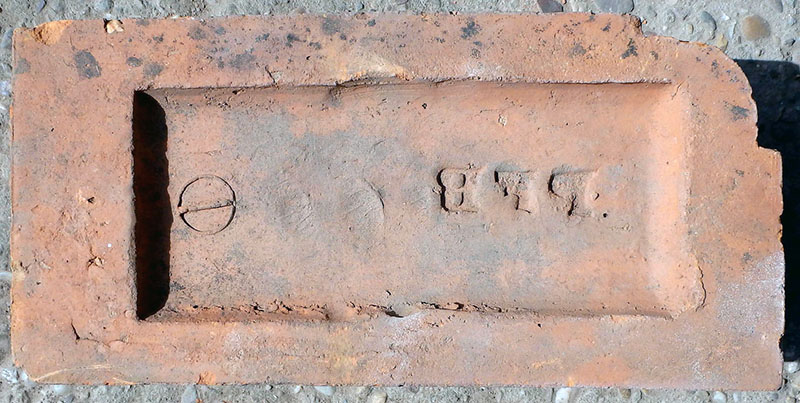
Photo by Frank Lawson.
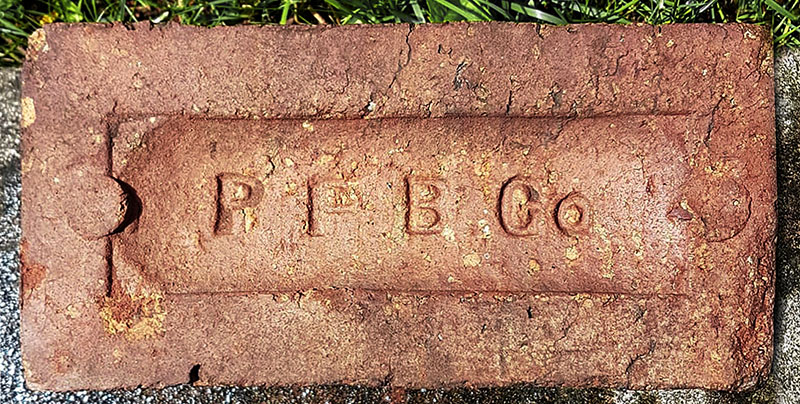
Photo by Martin Jackson.
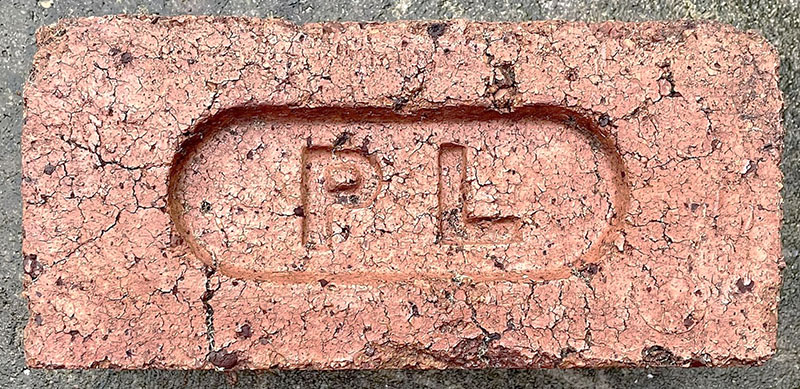
These bricks are found in the south of Wigan Borough around Bryn, Abram and Leigh. They are thought to be made at the Park Lane brickworks of Messrs Dean and Smith which was just south of Maypole Colliery. It seems to have been established by 1900 but does not appear on the map surveyed 1891-2. The works was connected to the colliery railway. It seems to have been disused by the 1940s. Photo by Phil Burgoyne.
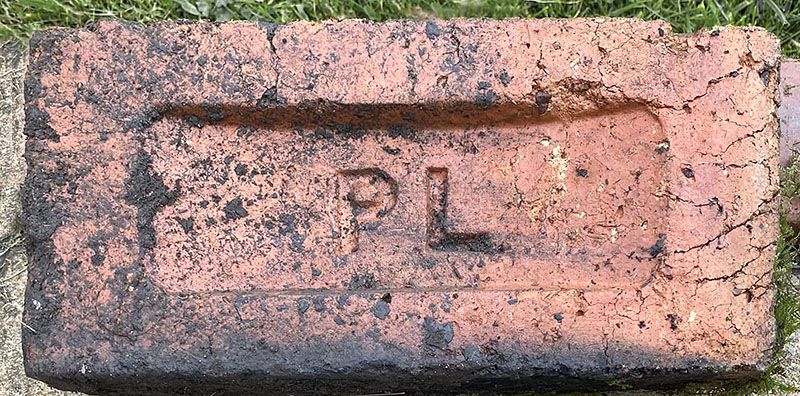
Photo by Elaine Hill.
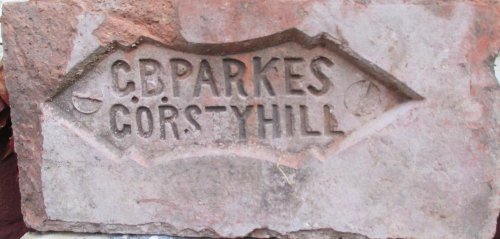
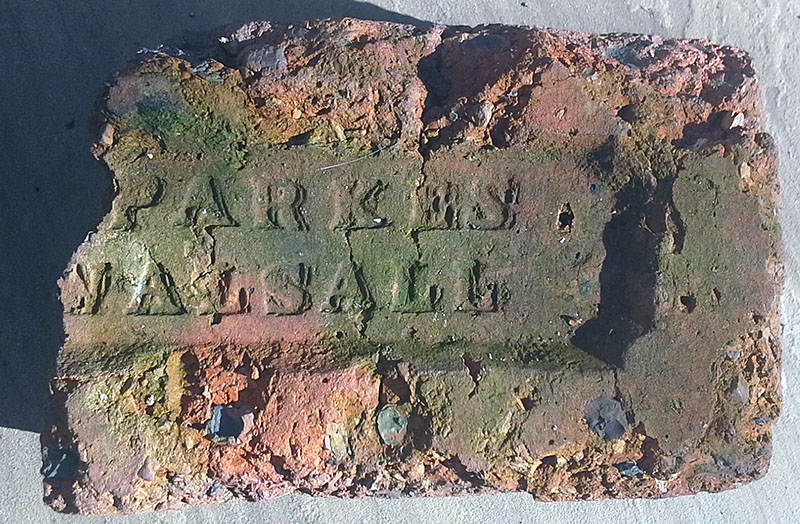
Kelly's Directory 1876 - 92. Frederick Parkes, North Walsall brickworks & sand & gravel beds, Bloxwich Road, Walsall. Parkes was also a colliery owner at Tipton. He attempted unsuccessfully to sell the brickworks and surrounding land for development in 1881:
There is a First-class BRICK PLANT, with all necessary Engines, Machinery, Ovens, large Drying Shed, Weighing Machine, Manager's House, and, if required, all necessary Tools, Horses, Carts, Boats &c., may be taken to; the whole of which are in first-class conditon and in full working operation. There is sufficient clay lying upon the surface to make from ten to fifteen millions of good building bricks, which are in great demand.
Photo by Angel Rose.
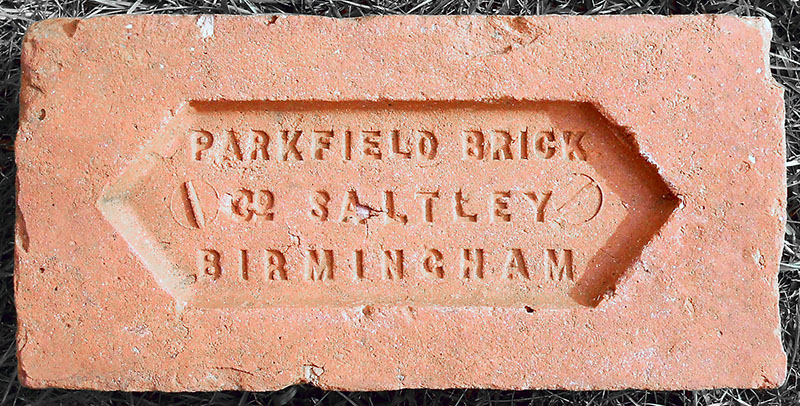
The Parkfield Brickworks situated just south of Adderley Park
railway station on Bordesley Green Road was opened in the 1880's & operated as the Parkfield Brick Co in the name of Clare P. Bond who was the wife of the real owner John Bond. The company is
listed in Kelly's 1890 to 1905 editions & this is followed by
the listing of the Parkfield & National Brick Co. in the 1908
edition. The works closed in 1908. Also in this 1908 entry for the
company there is a second works listed at Keeley Street/Watery
Lane which also belonged to John Bond
up to Kellys 1905 edition. John Bond also owned the Globe Brickworks until 1875 when he
sold it a consortium who formed the Globe Brick Co. It appears that John and Clare Bond emigrated to the United States in 1908 after selling both works to firm of Contractors Pattinson & Wells who seem to have continued to operate the brickworks for a short while. All was cleared away by 1913. Info
by Martyn Fretwell, photo by Ray Martin.
See also the entry for National Brick Works.
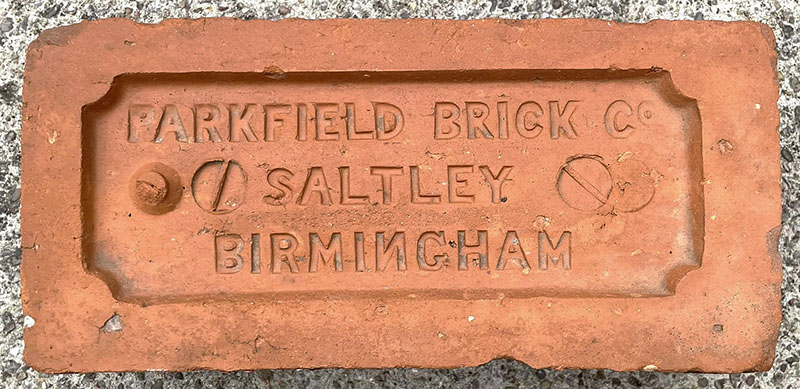
Photo by Phil Burgoyne.
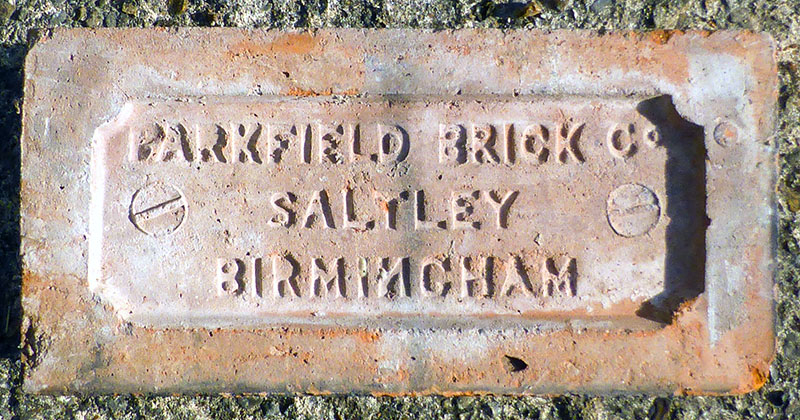
Photo by Martyn Fretwell courtesy of the Bill Richardson Collection
at Southwick Hall.
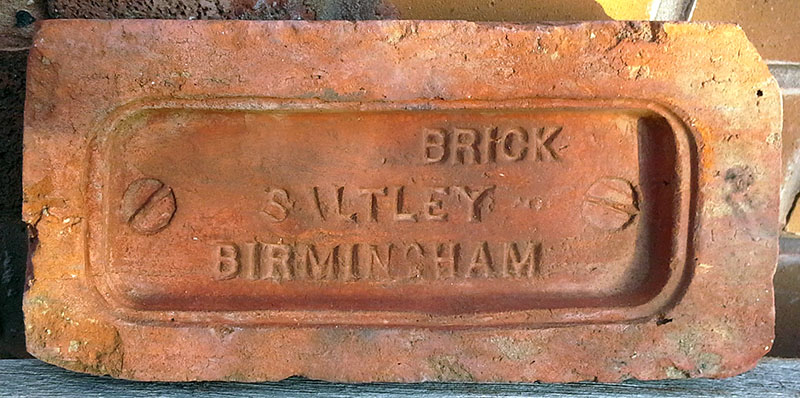
This is almost certainly a product of the Parkfield works when operated by Pattinson & Wells. The stamp is identical to that used on Parkfield Brick Co products but with the words Parkfield and Co removed. Photo by Angel Rose.
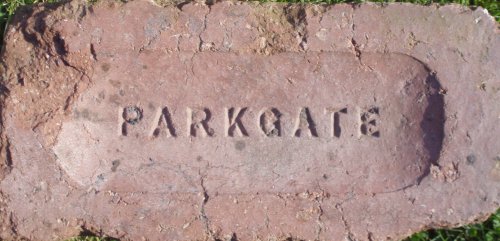
Parkgate Brickworks, Parkgate, Rotherham. Photo by courtesy of the Frank Lawson collection.
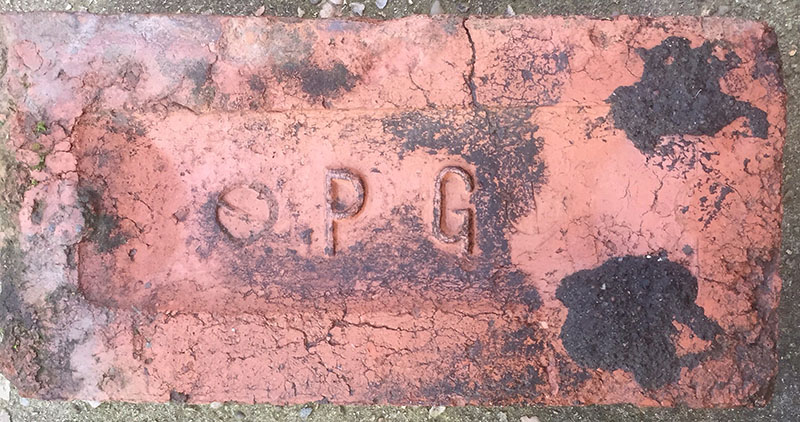
Photo by Antony Meadows.
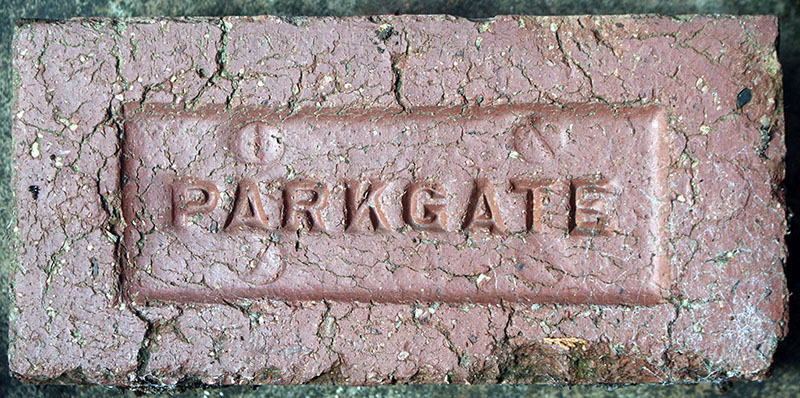
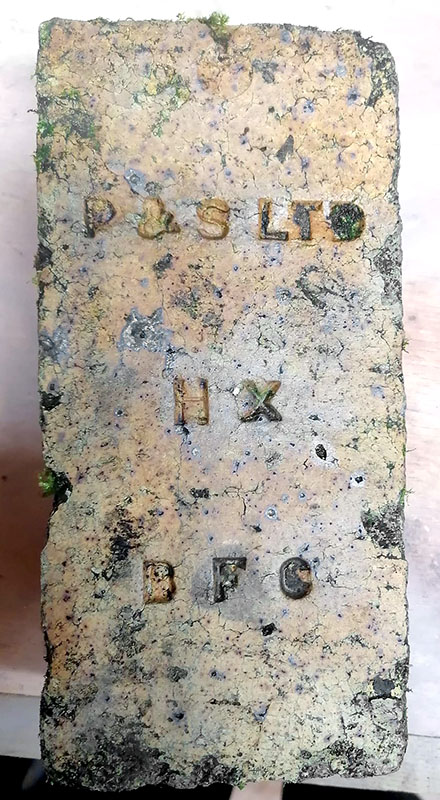
P & S, H X, B F. (Parkinson & Spencer, Halifax, Bradford Fire Clay). Made by Parkinson & Spencer, Ambler Thorn, Halifax. Listed from 1917 in trade directories and still operating as Parkinson & Spencer Refractories in August 2012. Photo by Thomas Hayman.
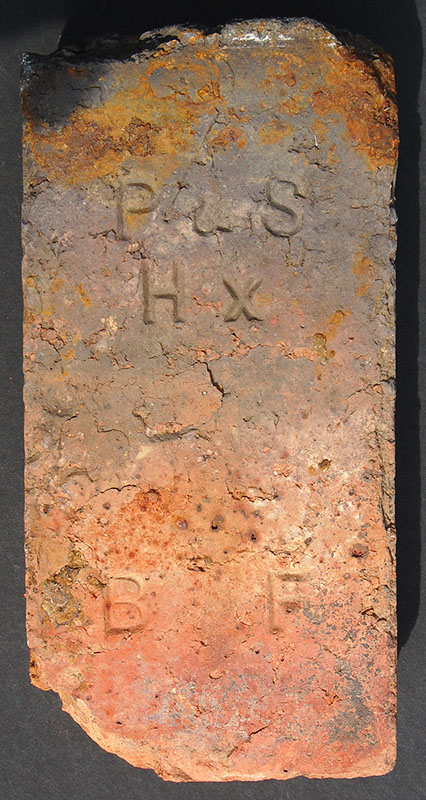
Photo by PRBCO.
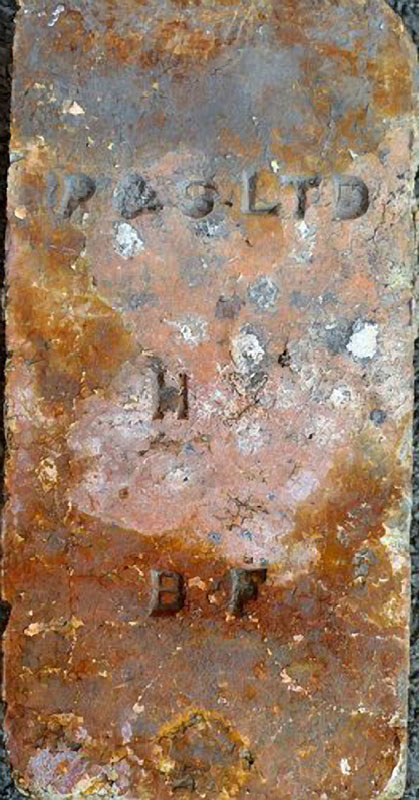
Photo by Alan Davies.
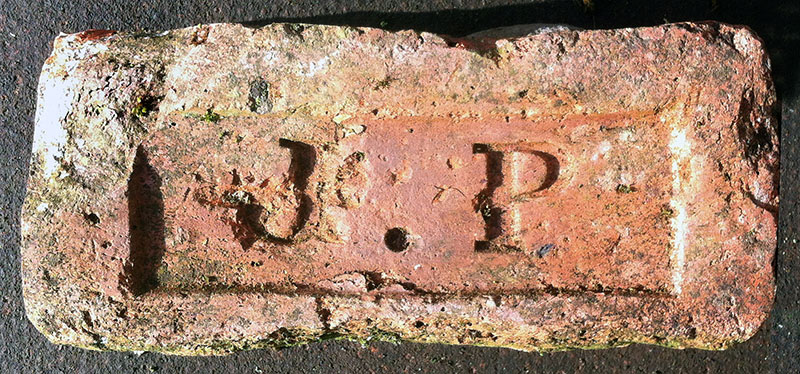
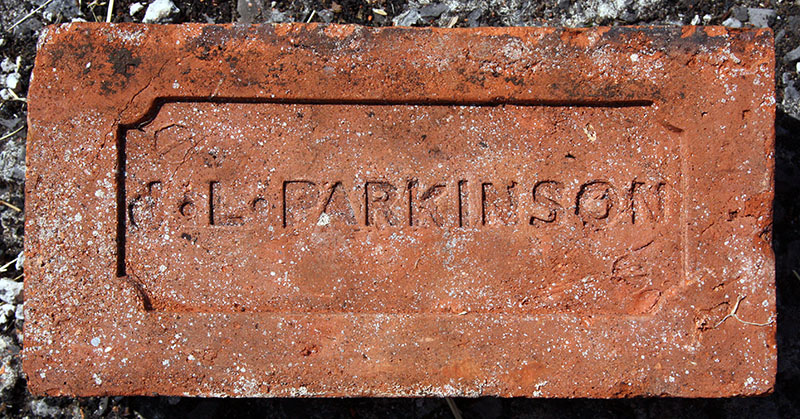
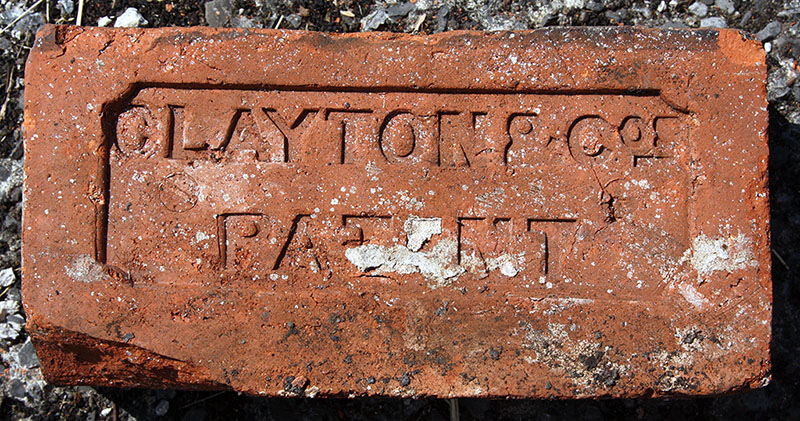
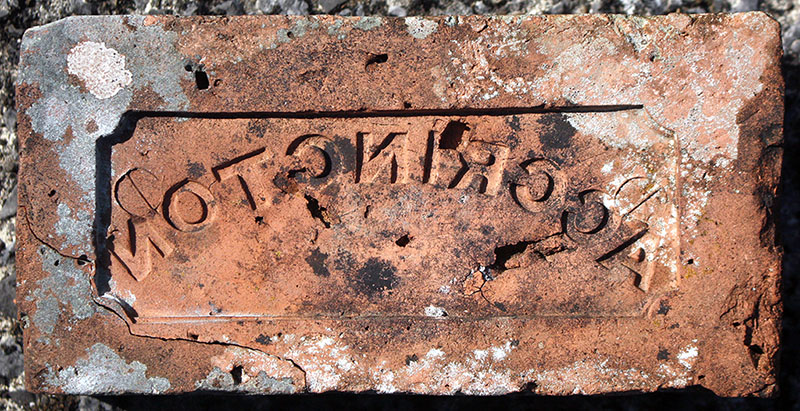
William (father) and Joseph (son) Parkinson had the brickworks in the Flaxmoss area of Helmshore from 1865 - 1879. William was "from a family of brickmakers who were active in various towns including Blackburn & Accrington" . Joseph went bankrupt at Helmshore in 1879. Further research suggests the Accrington works was on Hyndburn Road. Photos by David Kitching, info by Colin Driver.
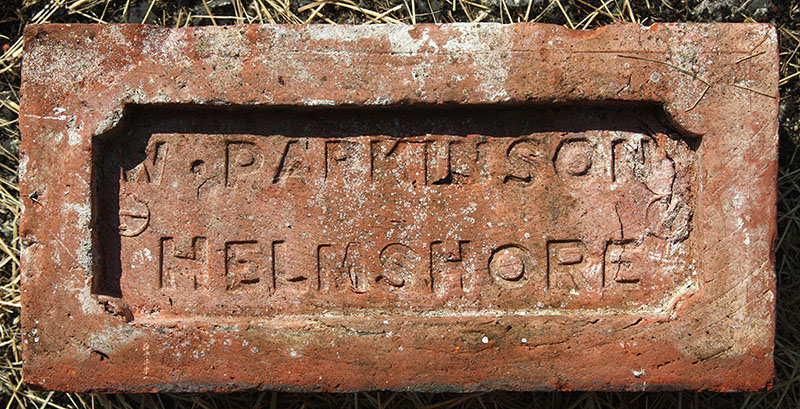
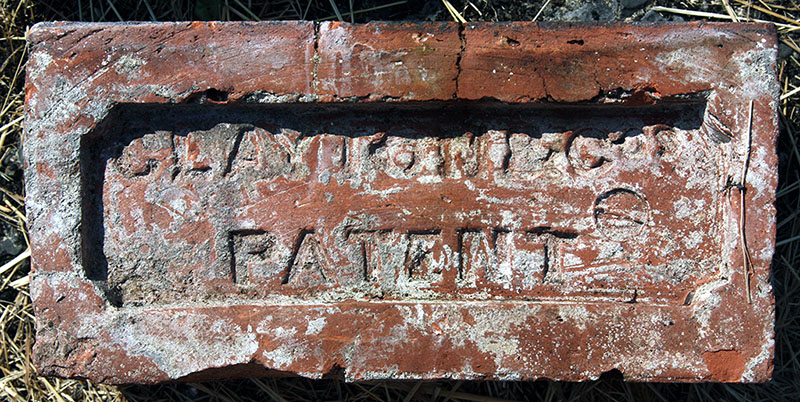
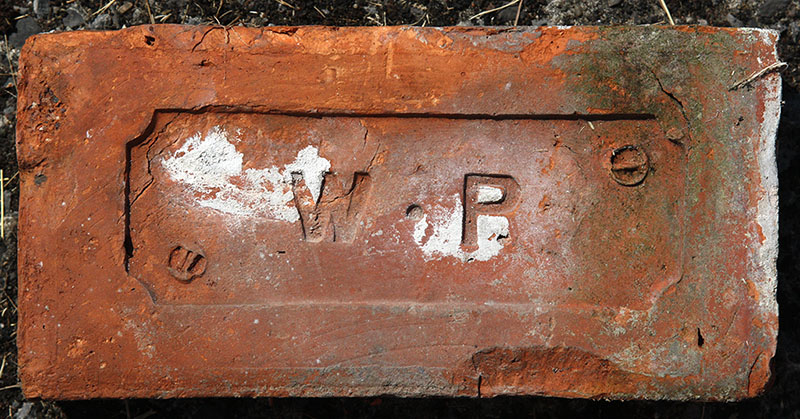
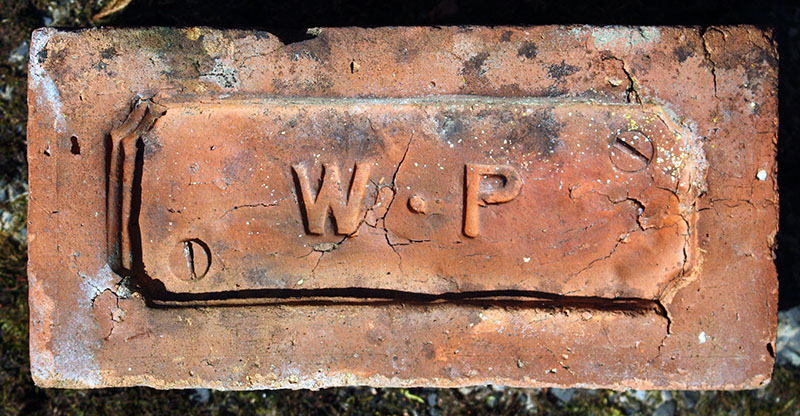
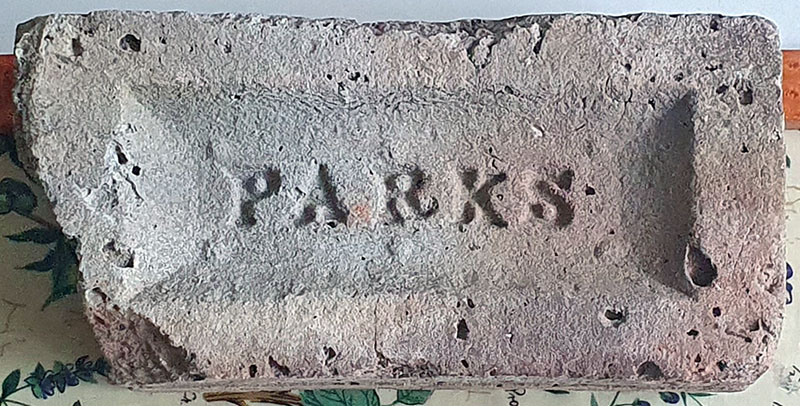
Horris Parks established his Woodside Green works, Croydon before 1861. Parks is listed in Kelly’s 1867 & 1878 editions with the home address of Pembury Villa, Portland Road, South Norwood, but his brickworks was situated off Dickinson Place, Woodside. The 1871 census has Horris Parks as a Brickmaker employing 10 men and his son (also Horris Parks) as a Brickmaker employing 7 men, 2 boys. By 1881 Horris senior was retired and Horris junior was a brick manufacturer employing 21 men and 10 boys. Parks also owned a second works on Mitcham Road, Croydon from at least 1889. After finding one of his foremen was "milking the books”, Horris Parks took his own life on the 3rd of April 1909 by hanging himself in one of the drying sheds at the Woodside Works. The Coroners verdict of suicide whilst being of unsound mind was recorded. This Woodside works was then purchased by Edward Handley who then operated this Dickinson Place works as the Woodside Brick Co. Info by Martyn Fretwell & photo courtesy of the Edward Handley Collection.
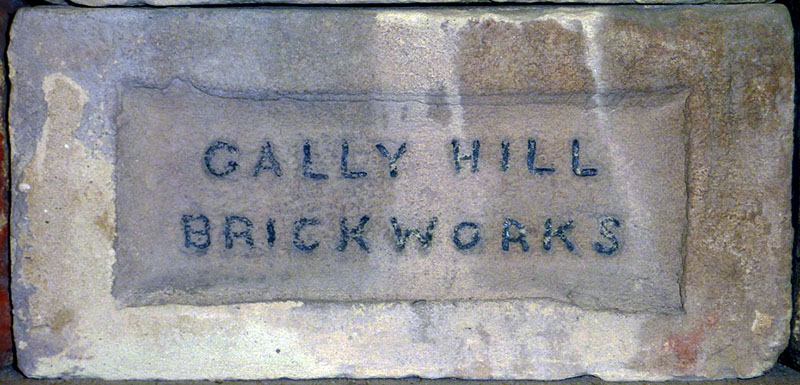
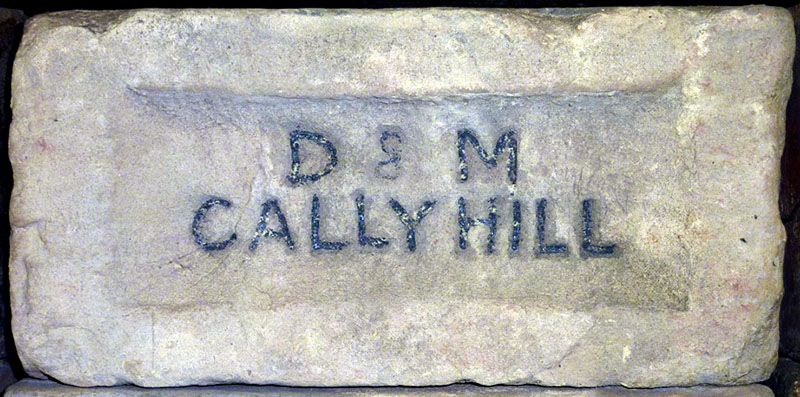
Parks & Marshall are listed in Kelly’s 1885 edition at Crookham, Farnham. The Gally Hill Brickworks, Coxheath Road, Church Crookham, Hants is shown on the 1894 OS map. The
1909 map records this works as the Old Brick Works, today Woodland Rise occupies this former
brickworks site. Also on the 1909 map a new brickworks is shown as the Crookham Brickworks, next to
the Basingstoke Canal. The firm of Parks & Marshall advertised their white and red facing bricks from Gally Hill in a newspaper advert of 1883.
Potential customers were referred to H Parks at an address in South Norwood. Photos by Martyn Fretwell and info by Martyn Fretwell and Mark Cranston.
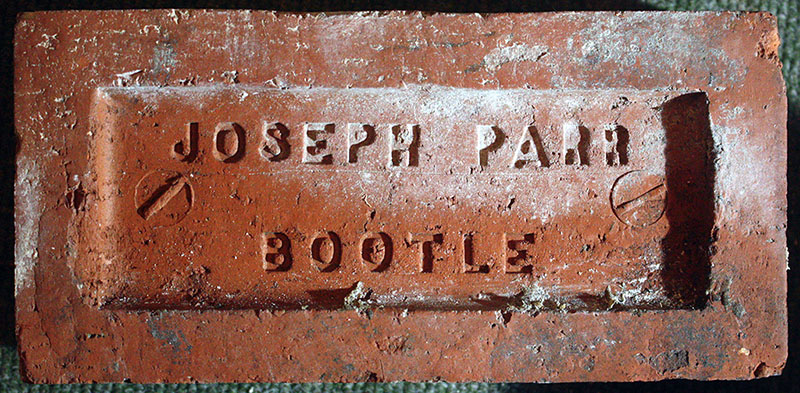
Joseph Parr is recorded as a builders' merchant in the 1894 Kelly's Directory with premises at 242 Strand Rd, Bootle on the corner of Litherland Road. He is also recorded as a builders' merchant in the census from 1881 to 1901. I suspect that he did not actually manufacture bricks but bought them in with his name on. The lettering on the reverse probably represents Davies Brothers, Abenbury Works at Wrexham as the real manufacturer.
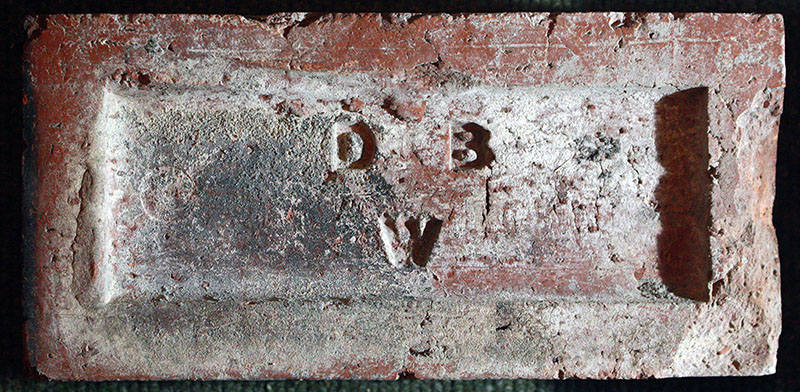
Reverse of Joseph Parr, Bootle.
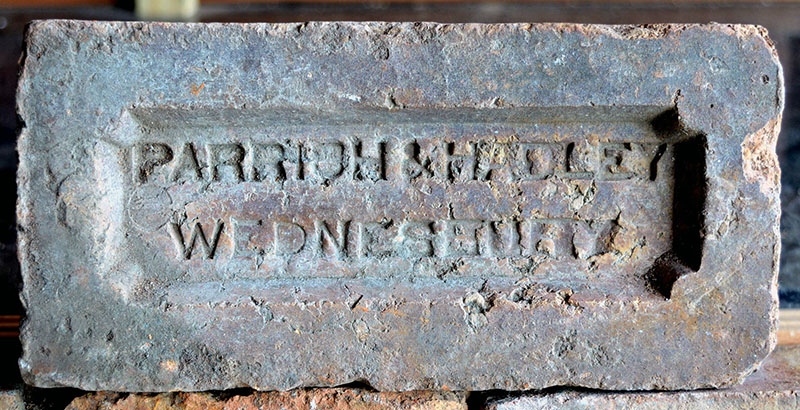
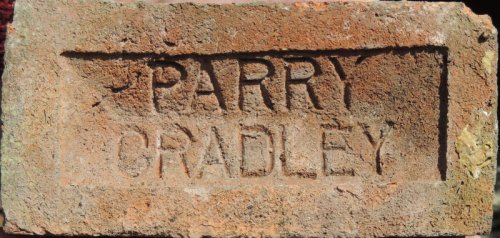
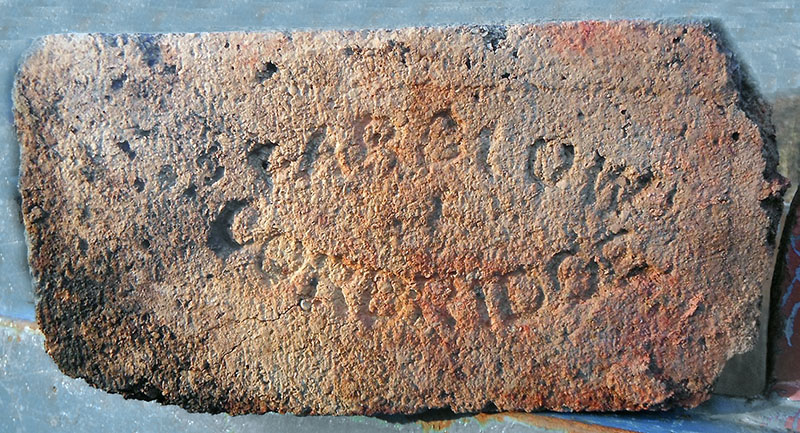
Joseph John Parslow & Co, Corbridge. The works, close to Corbridge Station, seems to have had a number of names including Corbridge Fire Brick Works, Station Road Fire Brick Works and Dilston Fire Brick Works. Photo and info by Ian Suddaby.
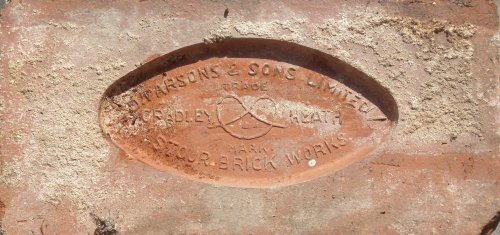
D Parsons, Stour Brick Works. Seen at the Black Country
Museum.
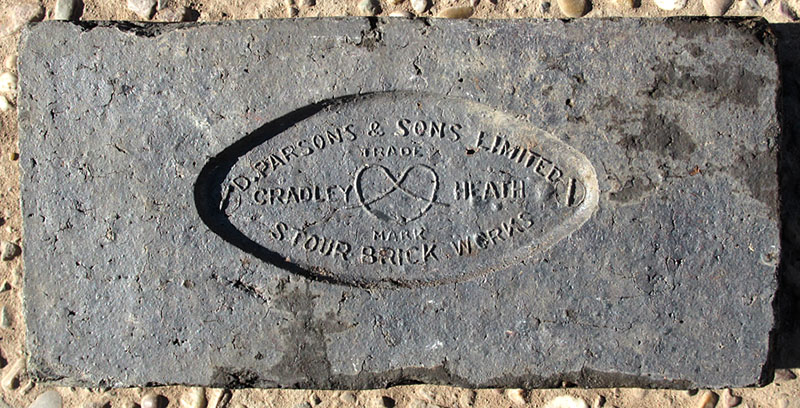
Photo by Martyn Fretwell.
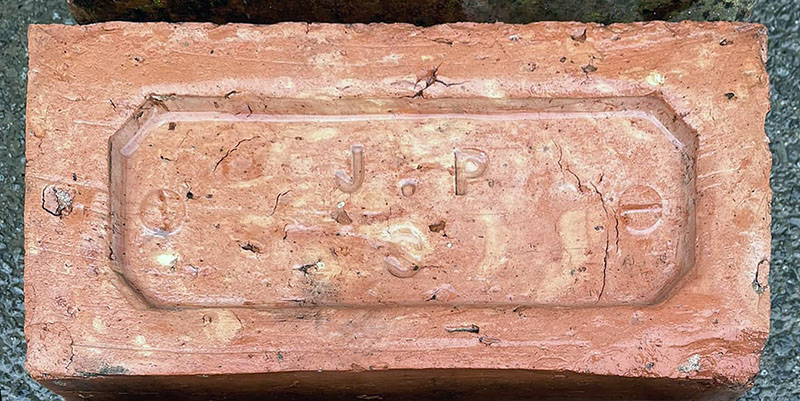
Photo by Nel N Julie Moore.
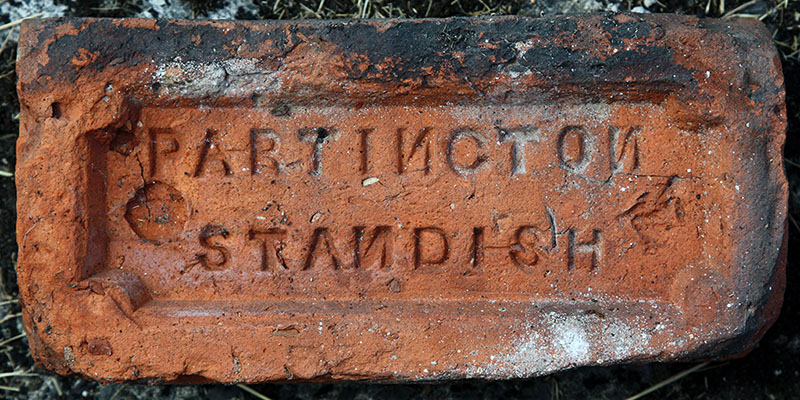
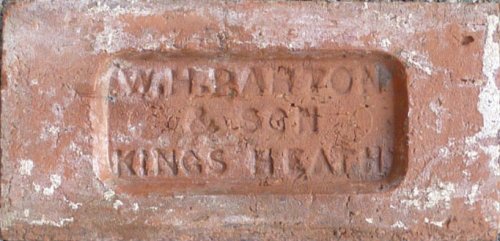
W.H. Parton & Son is recorded at High Street &
works at Kings Heath, Birmingham in Kelly's 1899 & 1900
editions & then there is a gap in directory entries until
Kelly's 1913 & 15 editions at the same address. Photos &
Info by Martyn Fretwell.
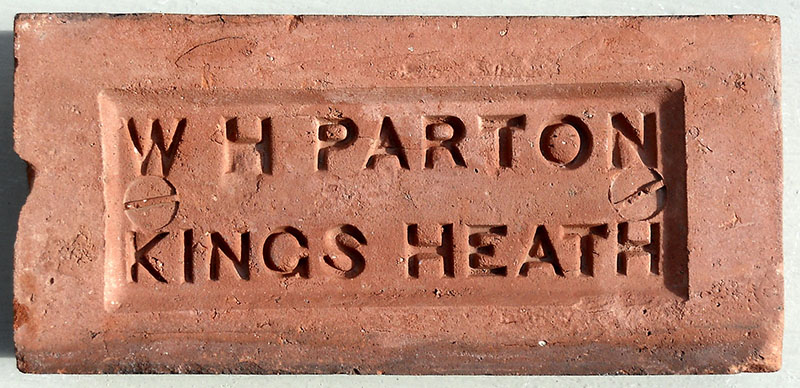
Photo by Ray Martin.
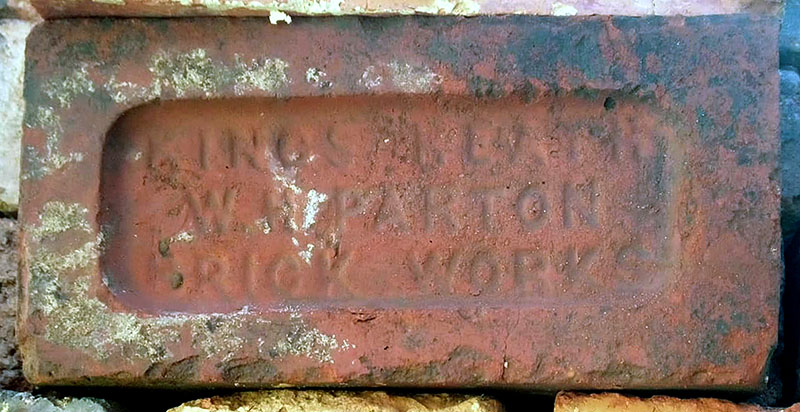
Photo by Phil Packwood.
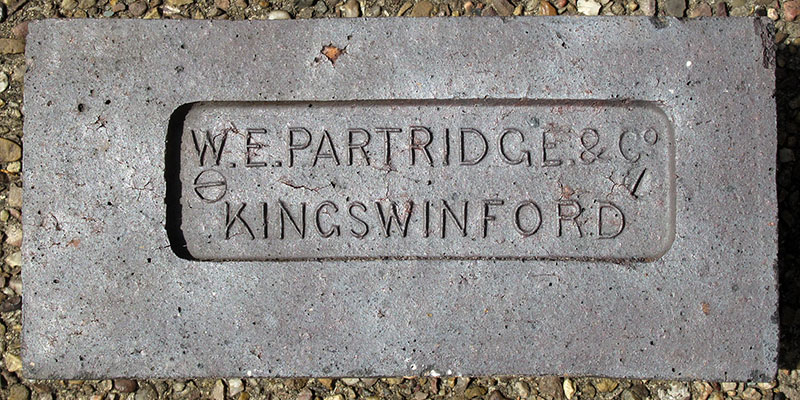
William Edward Partridge is listed in Kelly's from 1872 to 1904 editions at Kingswinford, Dudley & after his death in May 1904 the company continued & is listed as W.E. Partridge & Co. in the 1908 edition. Photo & Info by Martyn Fretwell.
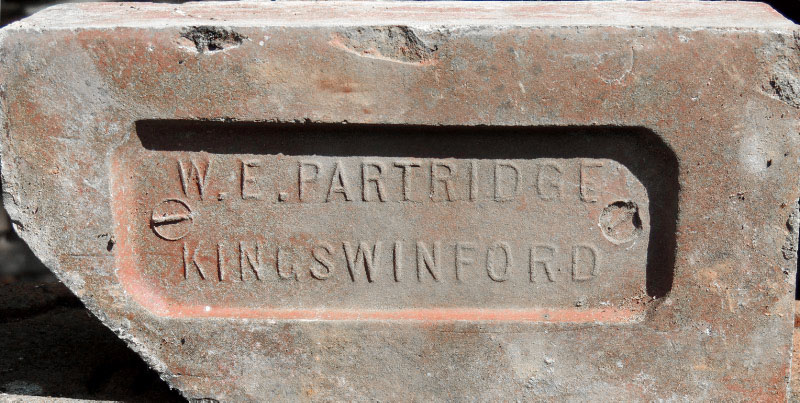
Photo by Colin Wooldridge from the John Cooksey Collection
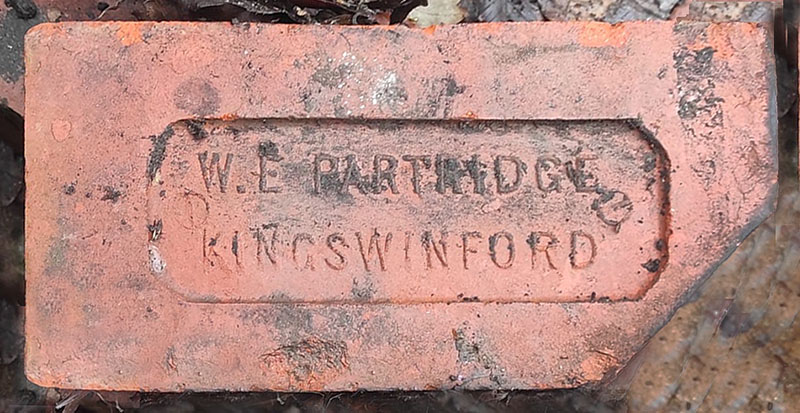
Photo by Jeremy Winter.
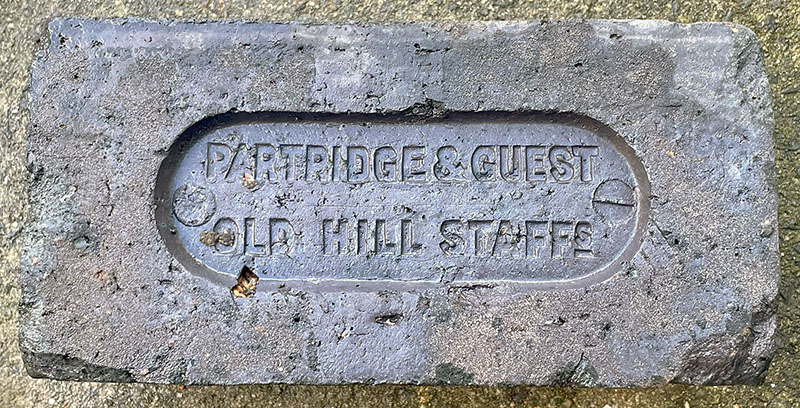
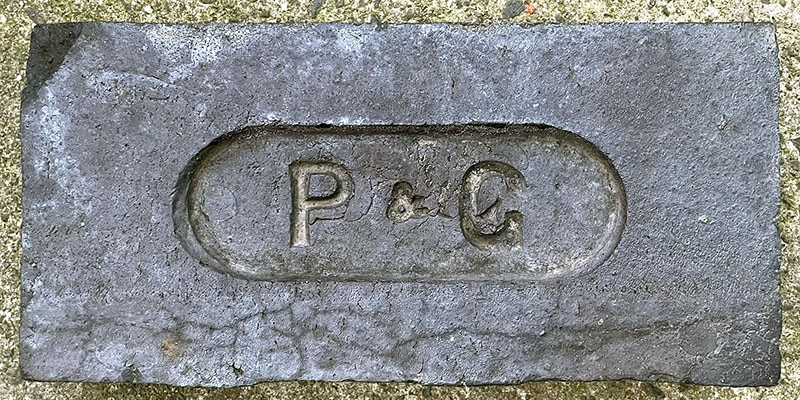
Photos by Phil Burgoyne.
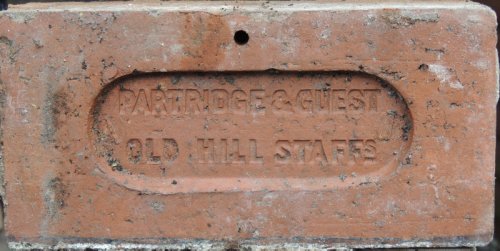
This company started life as Partridge, Guest & Raybold (blue & red) Old Hill, Rowley Regis (see below) and is recorded in Kellys 1860 to 1872 editions. After Raybold had left the company, it was renamed as Partridge & Guest (blue & red) in Kelly's 1880 edition at Powke Lane, Old Hill, Rowley Regis until the 1900 edition. The 1904 & 1908 editions records the same name & address but just blue bricks. Then in the 1912, 16 & 21 editions, same name & address, but now blue bricks, stable bricks & garden tiles. 1936 is the last entry for Partridge & Guest. Info by Martyn Fretwell & photo by Colin Wooldridge from the John Cooksey Collection.
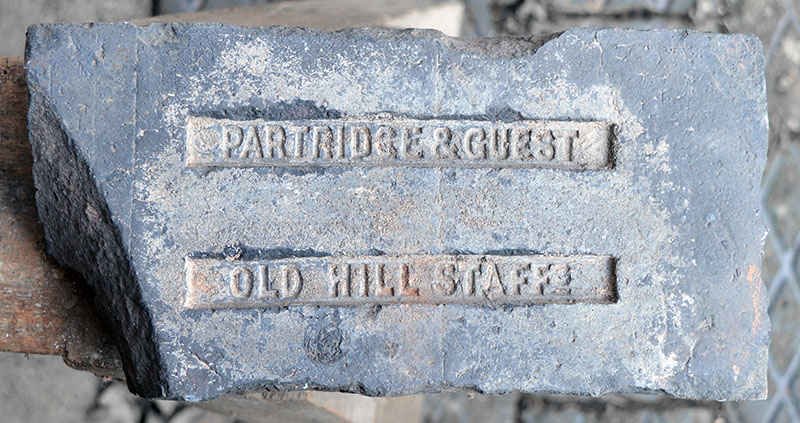
Photos by Frank Lawson.
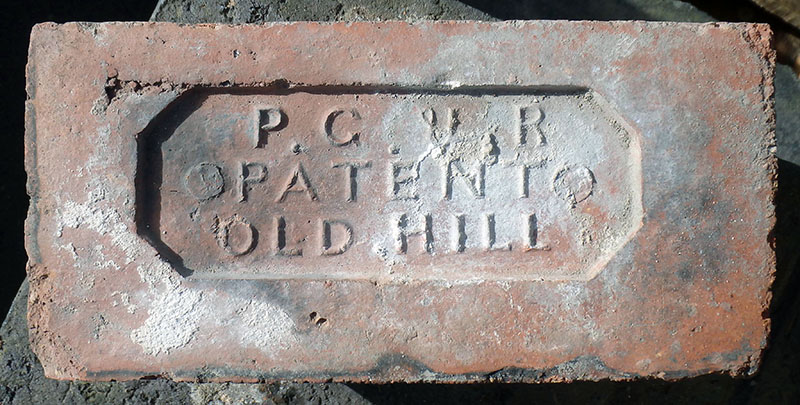
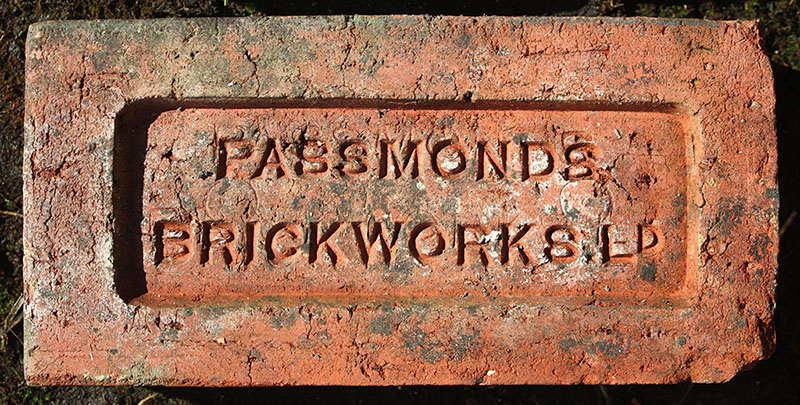
Passmonds Brickworks Ltd., Passmonds, Rochdale. Photo by David Kitching.
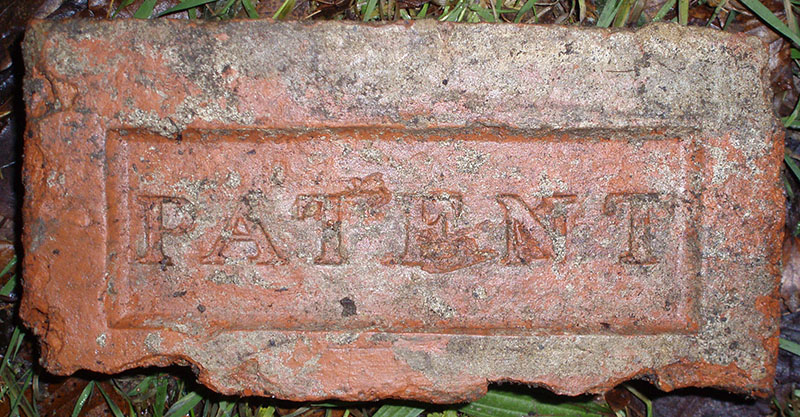
Photo by courtesy of the Frank Lawson collection. Made on a 'Patent' brick making machine.
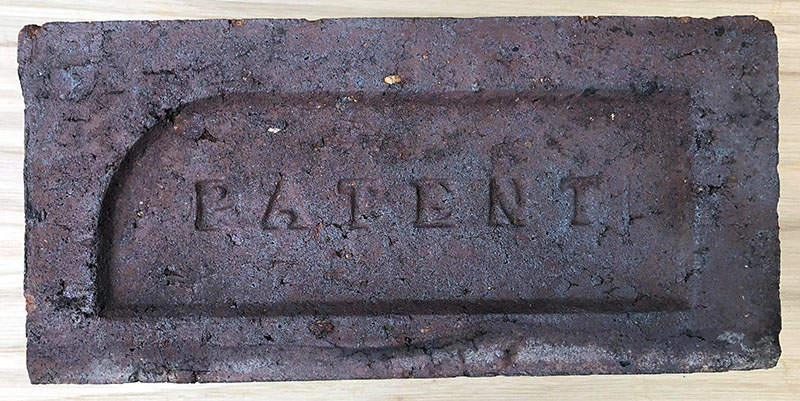
This is likely to be from one of the Potteries brick manufacturers. It was found during the demolition of the Royal Stoke Infirmary, Stoke on Trent. Photo by Greg Julian.
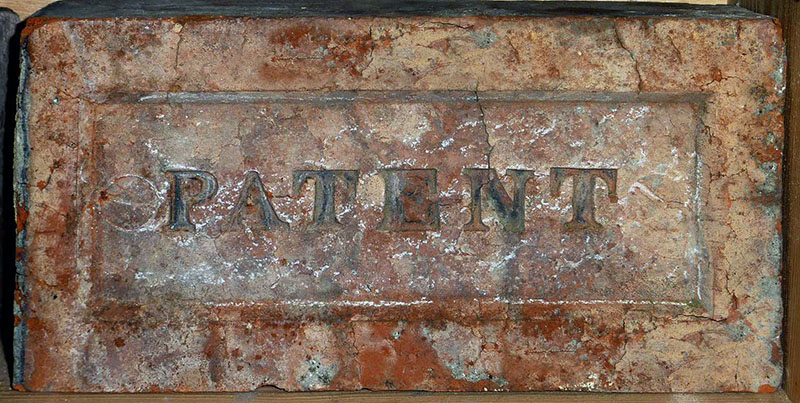
Another North Staffordshire brick marked Patent. Photo by Martyn Fretwell.
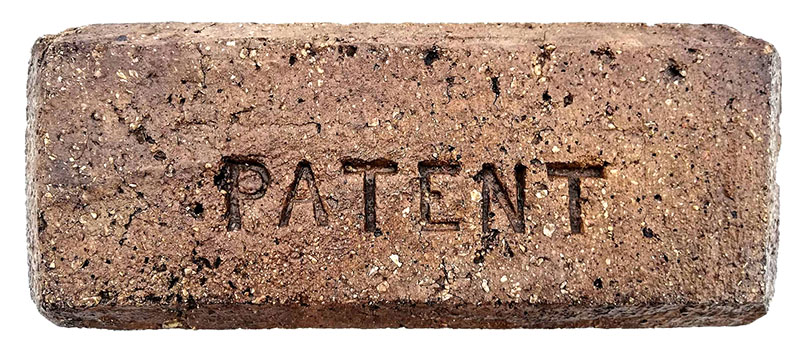
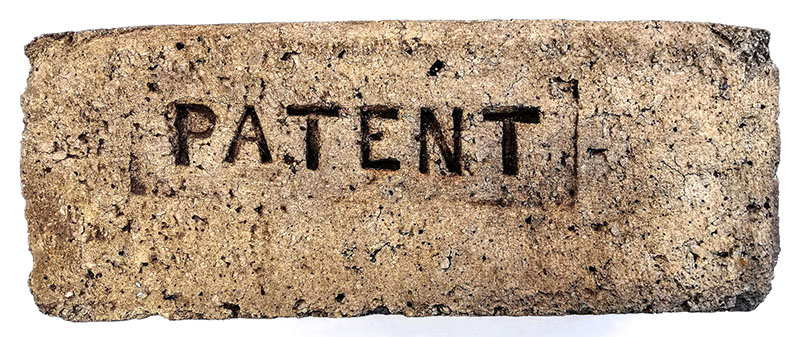
Found in Northumberland and thought to have been made at the Heddon brickworks. Photos by Chris Tilney.
Made by Jabez Thompson, Northwich
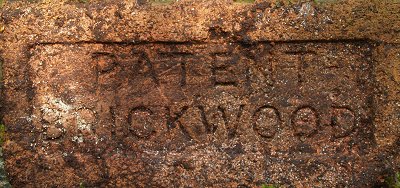
Photographed by Gwyn in the ruins of Penrhyn Quarry hospital, Bethesda, Gwynedd.
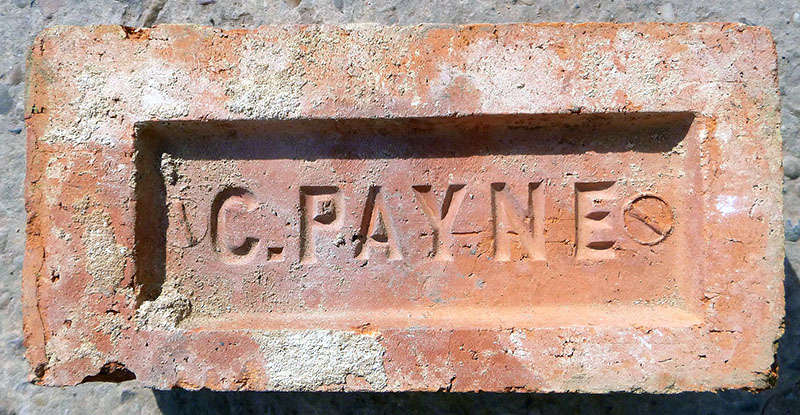
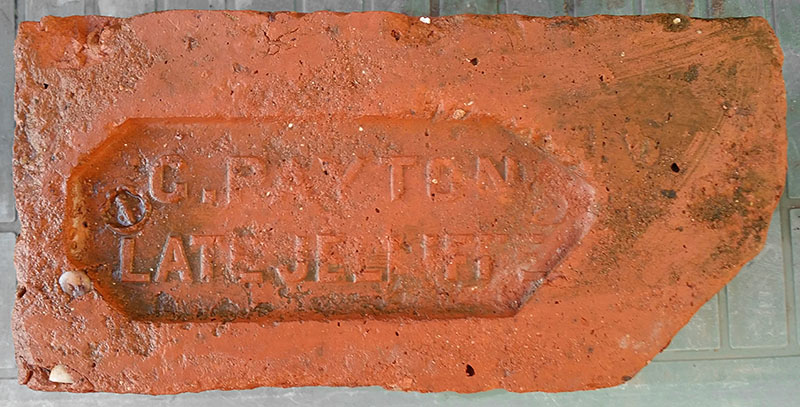
Jelliffe & Mansfield combined their 2 works on Garrison Lane & traded as Atlas Patent Brick Co. In 1861 Jelliffe left the partnership. In 1862 he had passed away. By 1867 Mansfield had sold Jelliffe's works to George Payton. Photographed at Cawarden by Nigel Furniss.
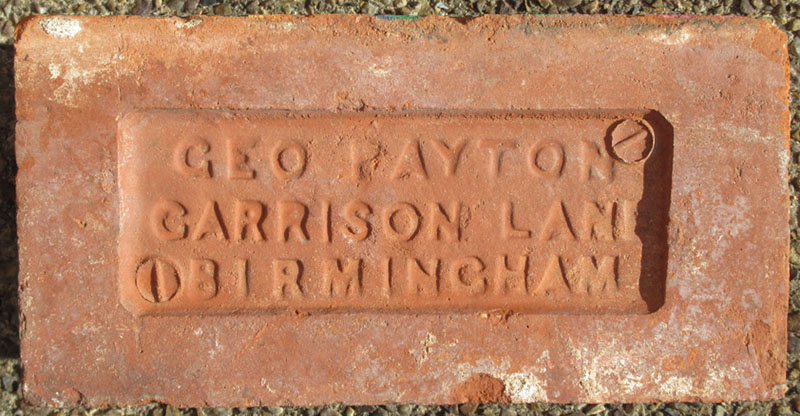
George Payton. Found at North Shropshire Recycling yard by Martyn
Fretwell. Martyn writes :- George Payton is recorded in
Kelly's 1867 & 1868 editions with his works on Garrison Lane
& residing at 442 Coventry Road. Ten years later, the next entry
I have in 1878, records the company as George Payton (exors of)
Garrison Lane. So one can assume George has passed away & the
company is still in production. This entry is repeated in the 1879
& 1883 editions.
Rodney Clark adds: James Payton was owner of Payton bricks, Garrison Lane, Birmingham. James was born in 1791 and died in 1854. His daughter Mary married George Clark and they changed their name to Payton-Clark and George continued to run the brickyard.
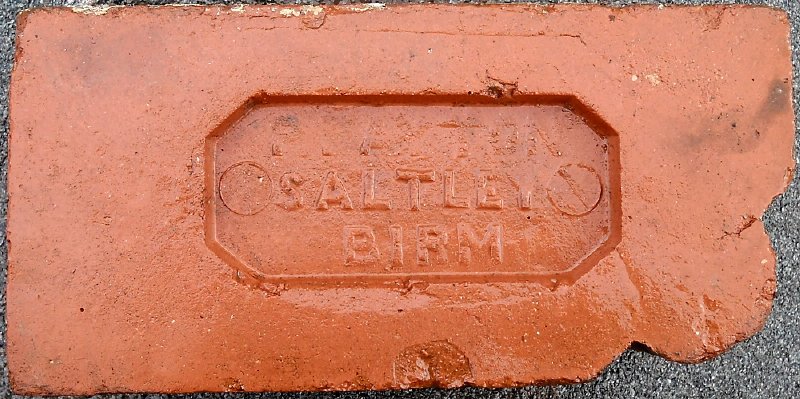
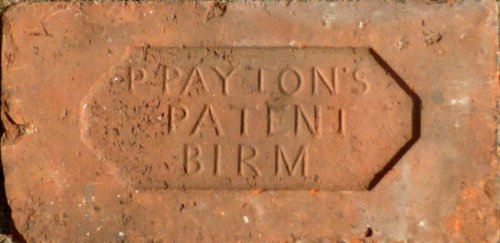
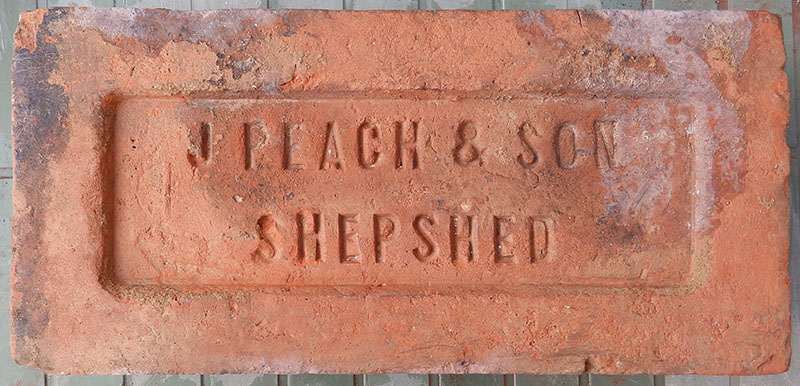
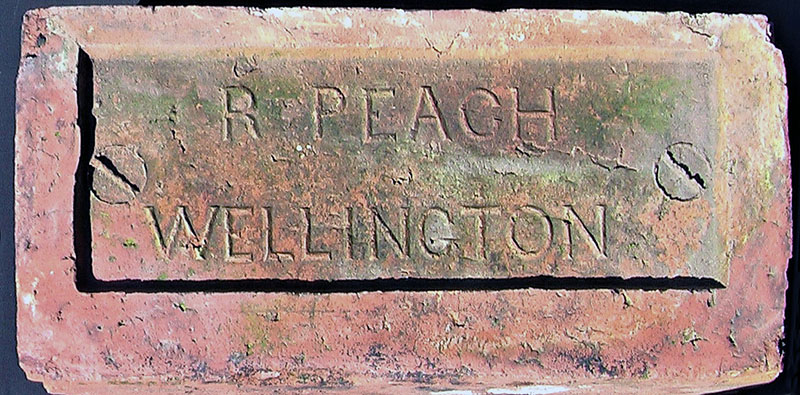
Robert Peach, residence, South Street, Wellington, Somerset. Listed in trade directories from 1866 to 1883. 1851 saw him at West Buckland as a drainage pipe contractor. In 1861 he is in the census living at West Buckland as a brick and tile manufacturer employing 49 men, 15 boys, 4 women, 8 girls. In 1871 he described himself as a brick & tile merchant, whilst in 1881 he is listed as a brickmaker employing 2 men and 1 boy. Photo by Eric Taylor.
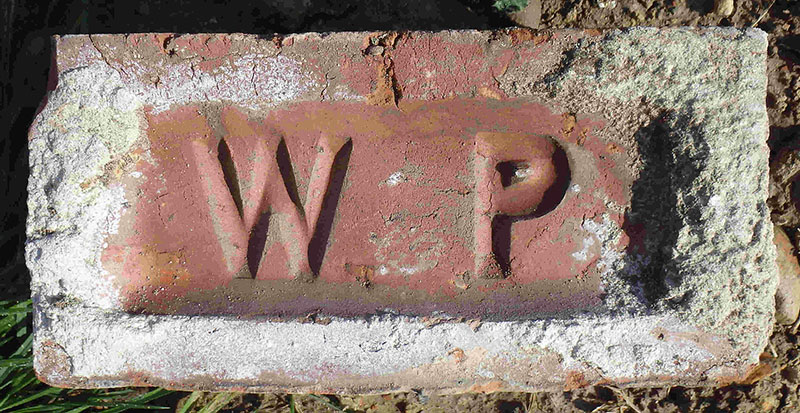
William Peacock snr., Seamer Road, Scarborough, N.Yorks. Kelly's North & East Riding Directory, 1893. Photo by Frank Lawson.

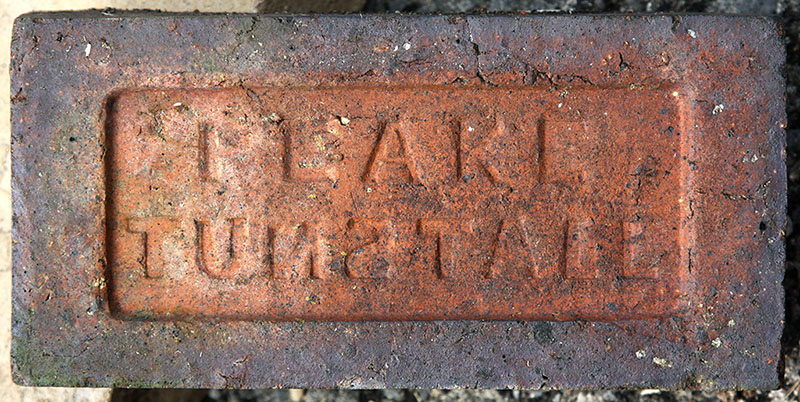
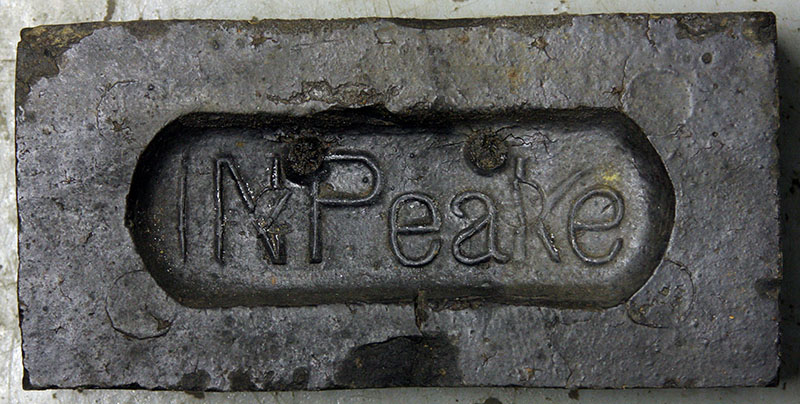
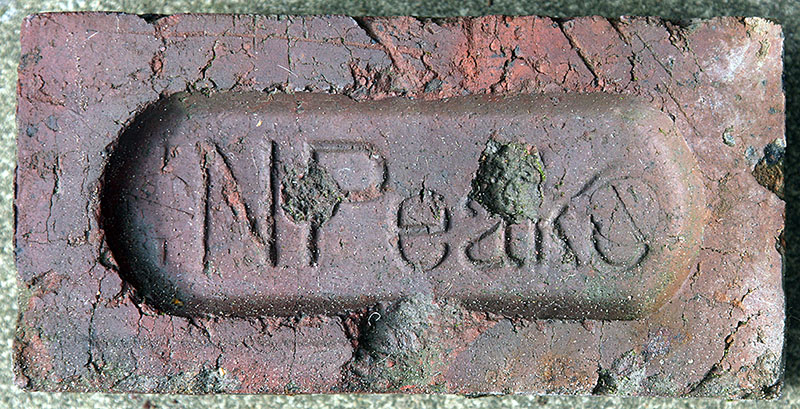
A very long established brickyard which first appears in the trade directory for 1828-29 under Thomas Peake & Co, Tunstall. John Nash Peake 1837-1905 succeeded his father Thomas in running Tunstall Tileries in 1861 & the company name continued under his fathers name. In 1889 it is the executors of the late Thomas Peake and in 1940 it was T. Peake, the Tileries, Tunstall. Photos and information by David Kitching.

Found in the River Tame. Photo by Julie Swindells.
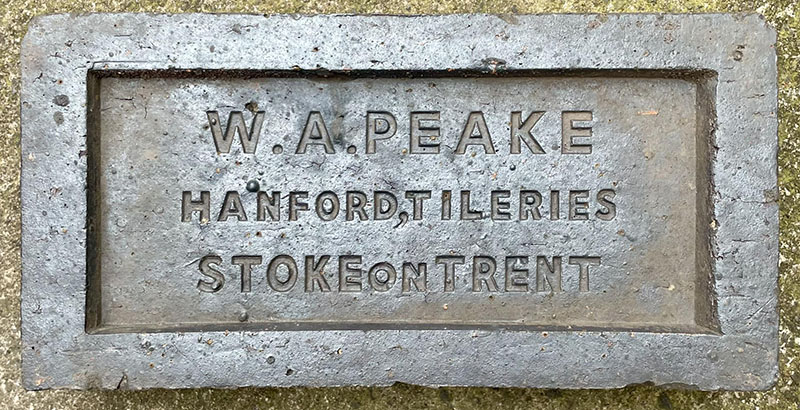
William Adams Peake was at Hanford Tileries by 1872 and the works is listed in trade directories until 1916. Photo by Phil Burgoyne.
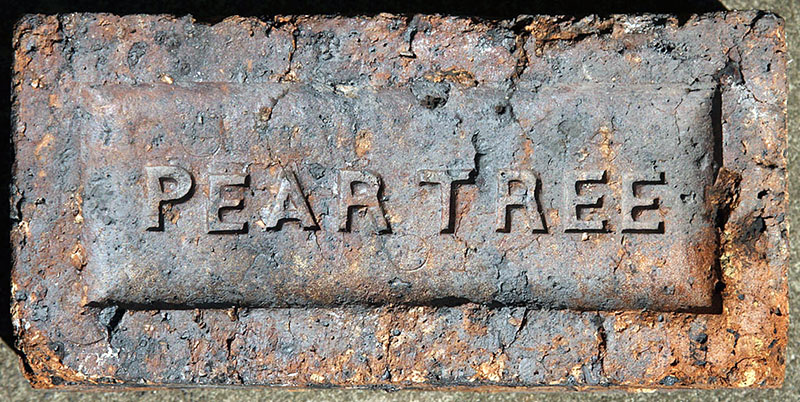
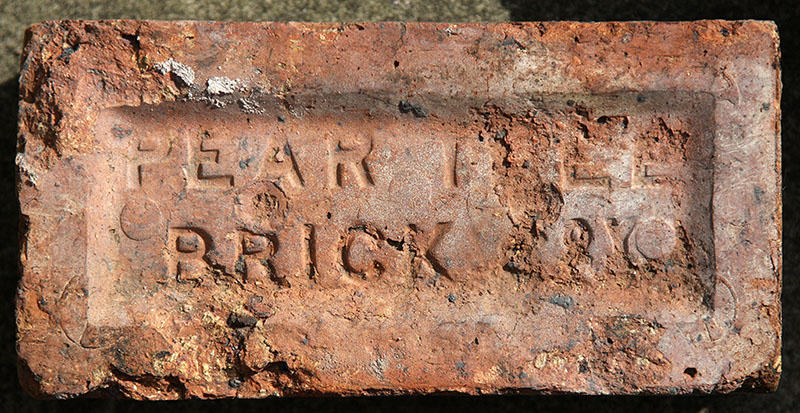
The Pear Tree Glazed Brick and Marl Co, High St, Hanley appear in the 1907 directory. The name derives from the Peartree Pit of the Shelton Collieries which had previously occupied the site. Photos and information by David Kitching.
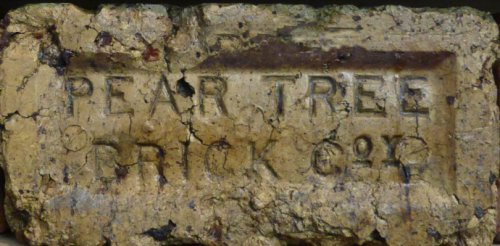
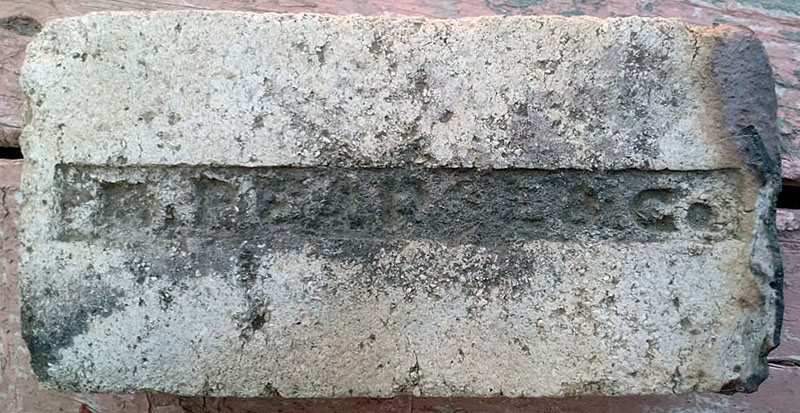
M Pearse & Co were Stockton-on-Tess based shipbuilders and shipping agents in the third quarter of the 19th century. The likelihood is that they exported bricks made for them by another business and stamped with their name. This brick was exported to Chile and used in the copper mines of La Higuera and the Port of Totoralillo (1840-1920), current commune of La Higuera, Chile. Photo by José Ignacio Aguilera Martinez.
Previously Harris & Pearson
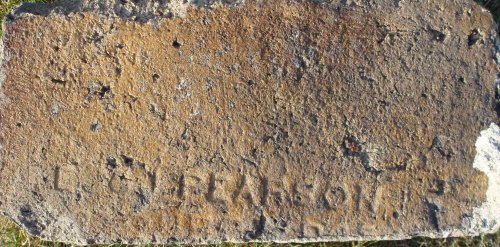
Photo by courtesy of the Frank Lawson collection, made in Stourbridge. One of their metal brick stamps can be seen here.
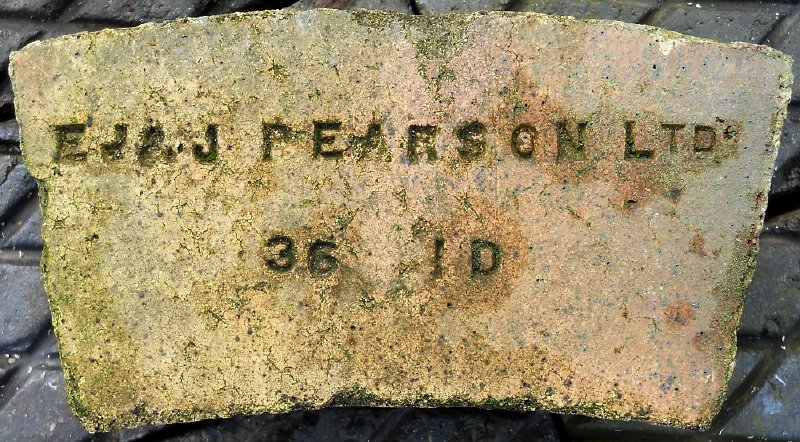
Photo by Ray Martin.
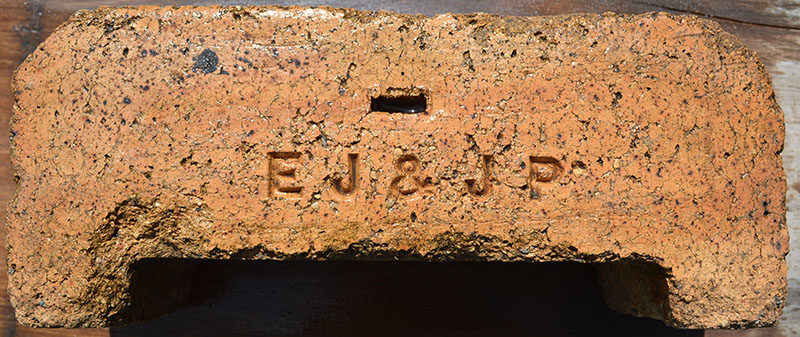
Photo by Richard Cornish.

Found at New Crofton, West Yorks by Frank Lawson.
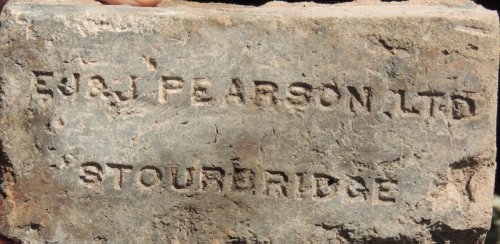
Photo by Colin Wooldridge from the John Cooksey Collection.
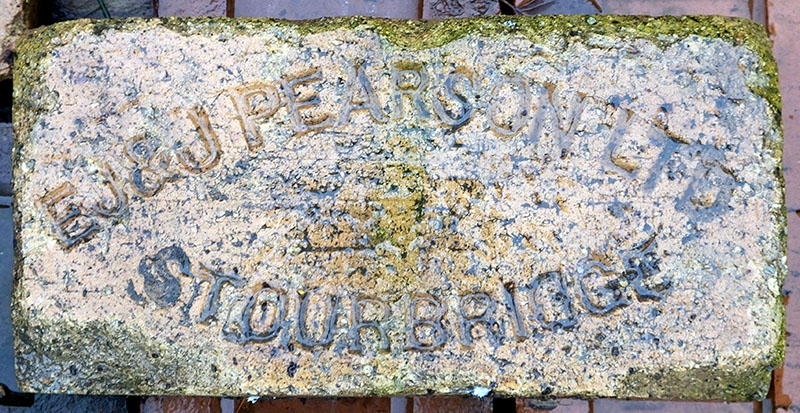
Photo by David Kitching.
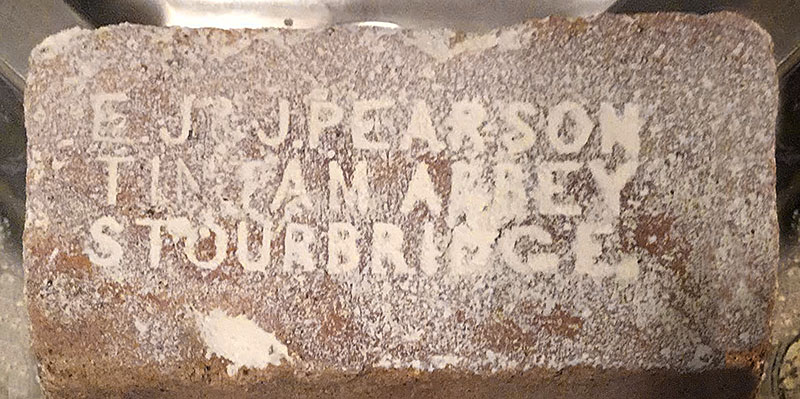
Photo by Alan Hackett.
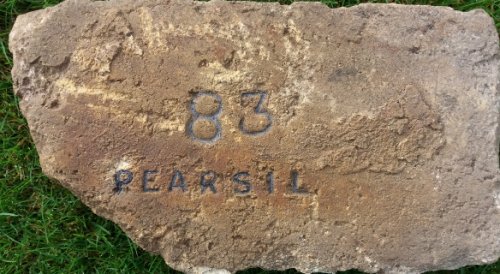
PEARSON (E. J. & J .) LTD., Stourbridge. T.A., 'Firebrick,
Stourbridge'. T.N., Brierley Hill 7201/3 (3 lines). London Agency:
Room 129, 133 Moorgate, E.C.2. T.N., Monarch 4780. Established 1860.
Sillimanite refractories: tank blocks, feeder parts, regenerator
fillings, glasshouse pots, boots, skittles and syphons, pot clays;
fire clay refractories; insulating bricks; air setting refractory
cements; high alumina refractories; semi-silica refractories; ground
fireclays.
Trade Names: Alite; F.R.D.; Groggo; Kaolith; Lermer; P.3.; Pearsil;
Peer Cement; Pulver.
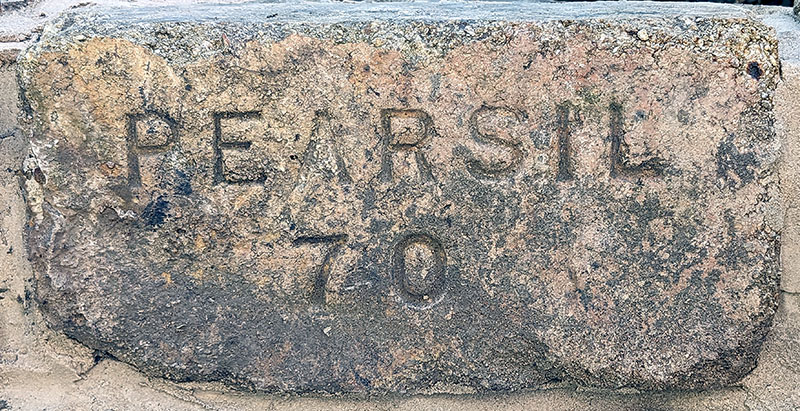
Photo by Andrew Richards.
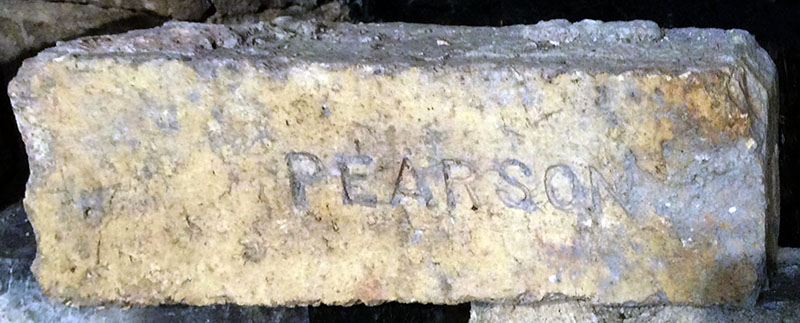
Photo by Rosie.
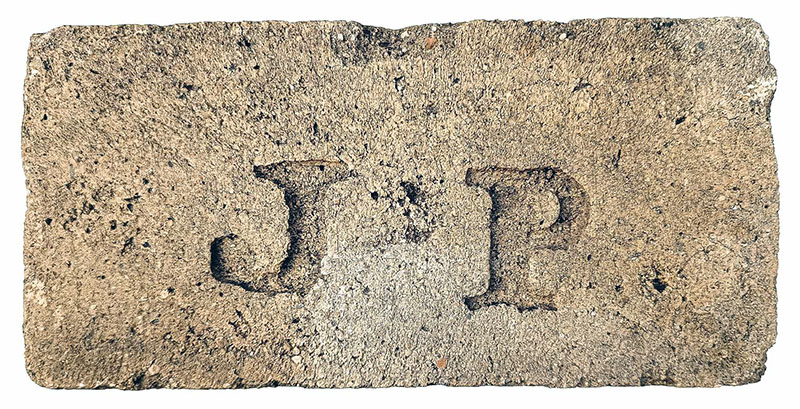
Joseph Pease. Photo by Chris Tilney.
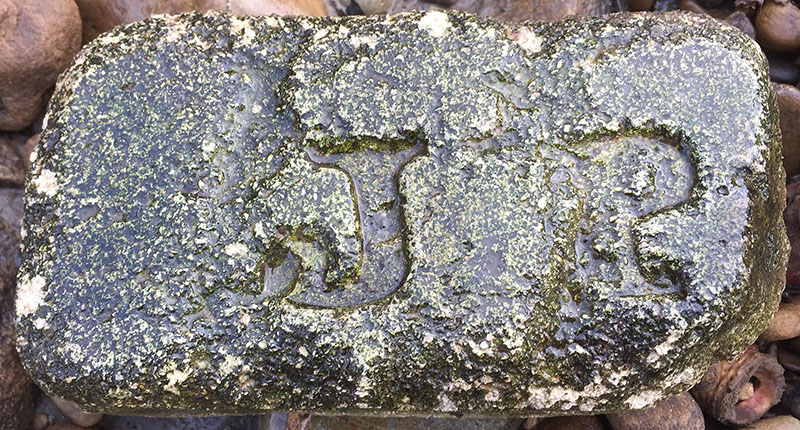
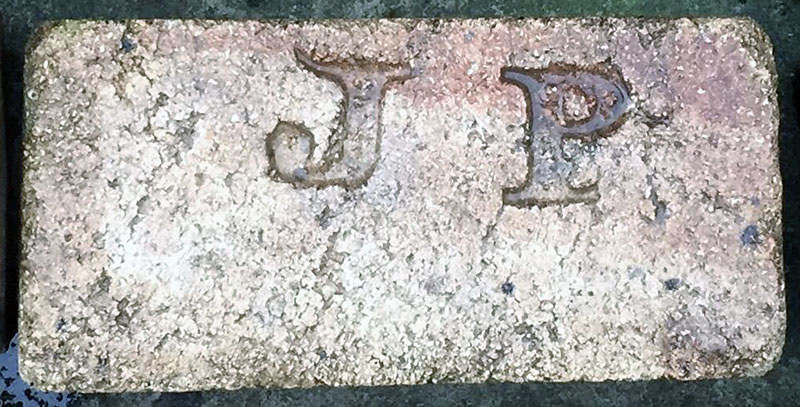
Photos by Steven Tait.
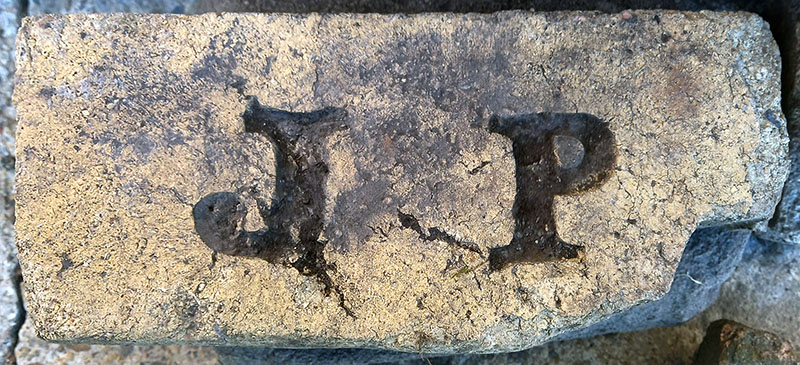
Photo by Steven Martin.
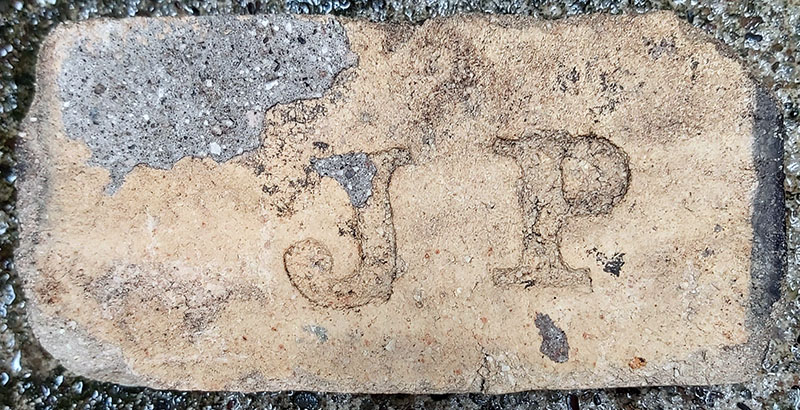
Photo by Judith Wilkins.
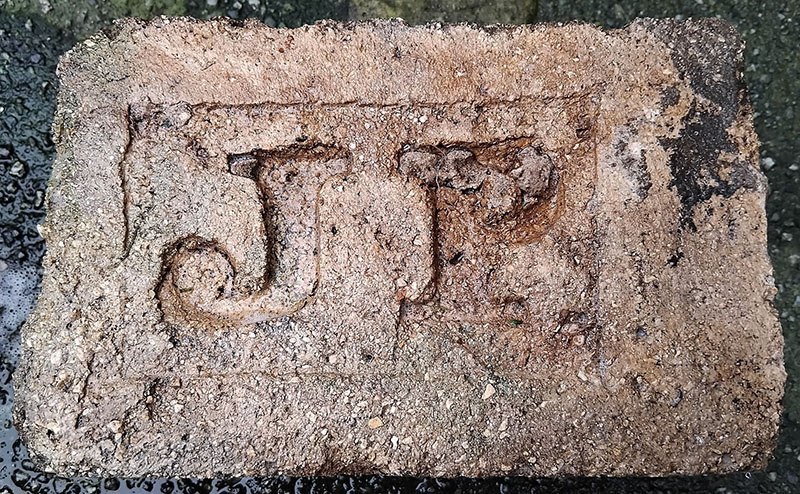
Photo by Phil Sidwell.
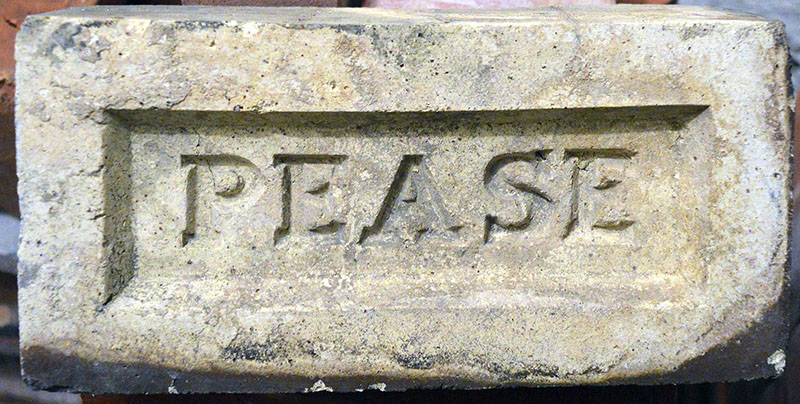
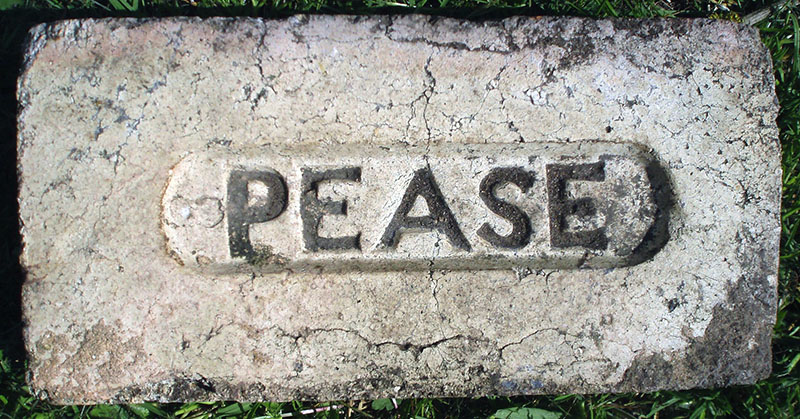
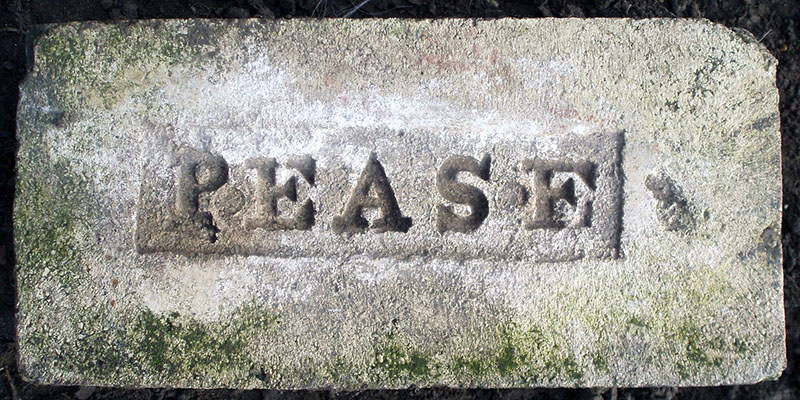
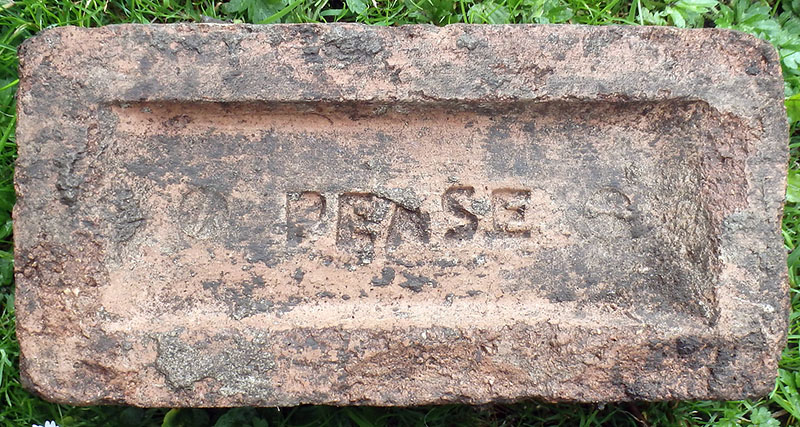
Joseph Pease & Partners, Bowden Close, Helmington Row, Crook, Co.Durham. Joseph Pease and Co colliery owners merged with S W Pease and Co Ironstone and mineral quarry owners in 1882 to create Pease and Partners. They registered as a public company in 1898. Pease and Partners were major industrialists in the South Durham area and operated several collieries and associated coke ovens and brickworks in the Crook area. The brickworks included Bank Foot Fireclay works Crook. Opened in the 1850s. In a report of 1928 fireclay was bring brought by aerial flight ropeway from the Roddymoor pit machines made 7,000 bricks per day. White facing bricks had been made up until 1924. Bricks were dried in steam heated drying flats. Hand moulders made firebricks and specials and white glazed ware mainly sinks. The works closed in 1936. Photos by Frank Lawson
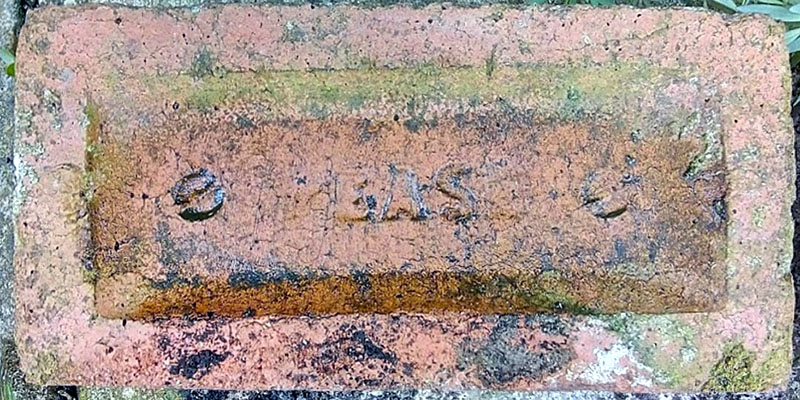
Photo by Don Boldison.
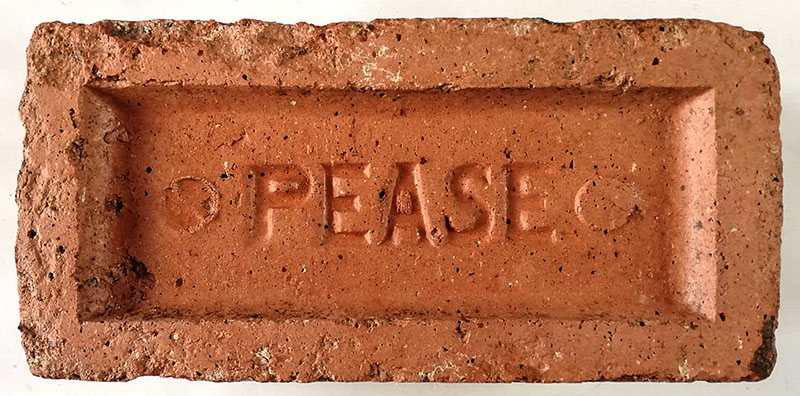
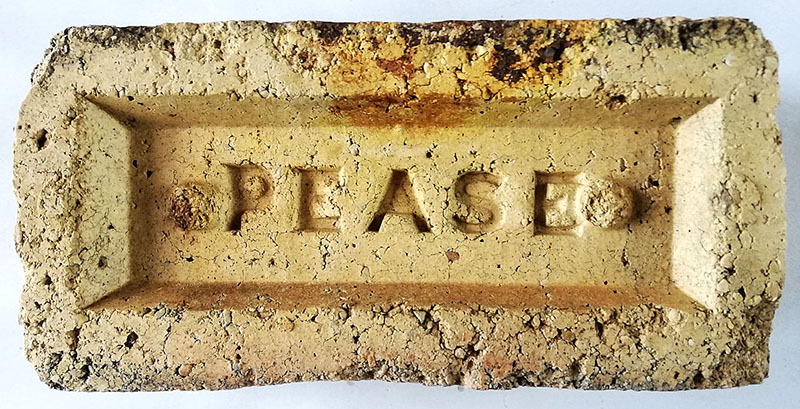
Photos by Chris Tilney.
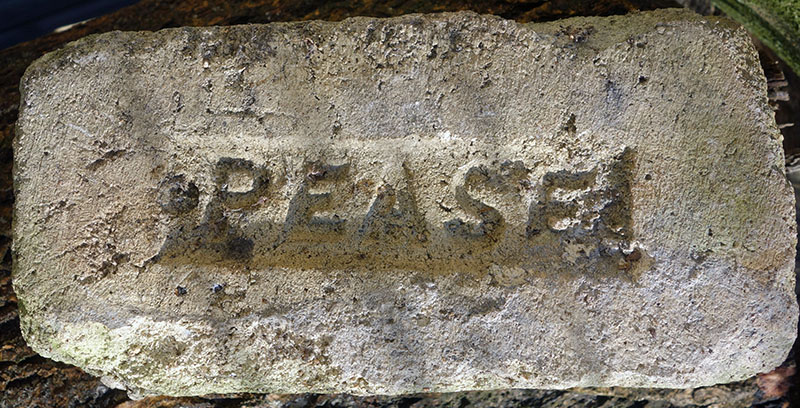
Photo by Ian Hunter.
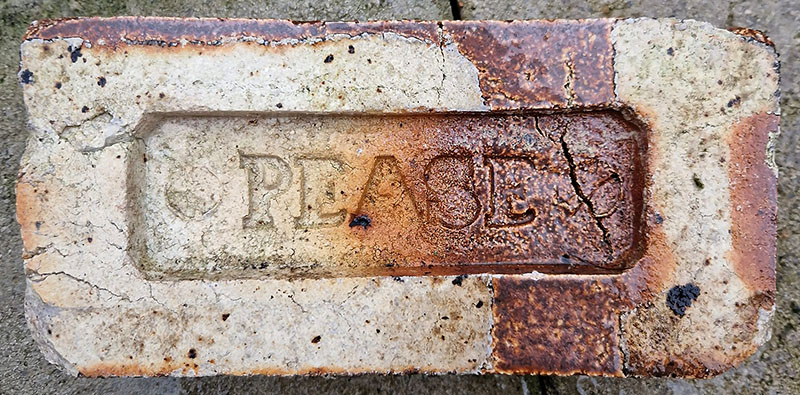
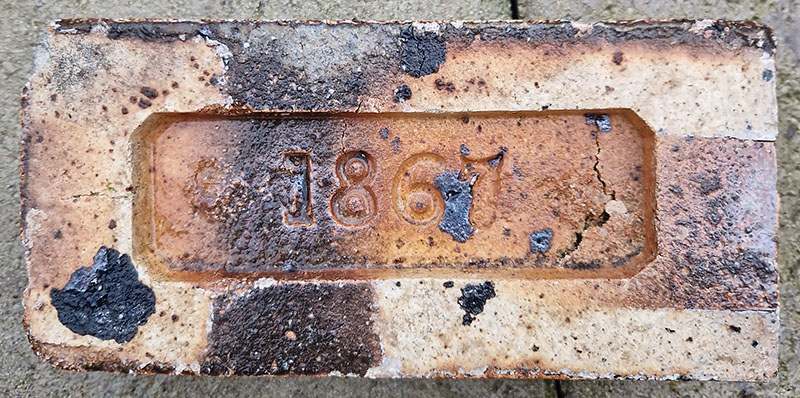
Photos by Elizabeth Robinson.
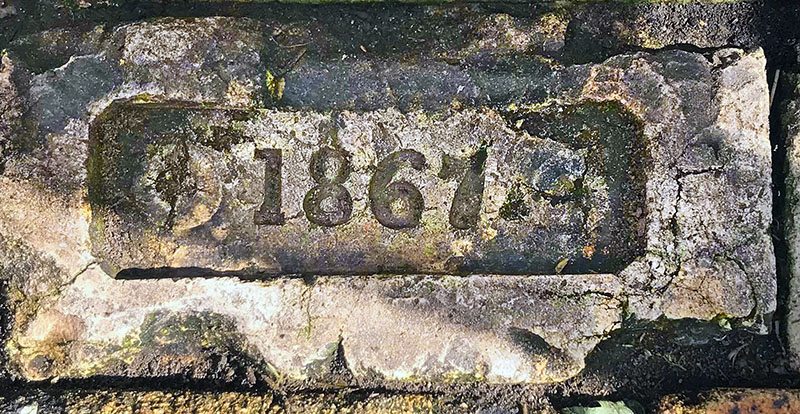
This one is stamped PEASE with the reverse dated 1867. Photo by Steven Tait.
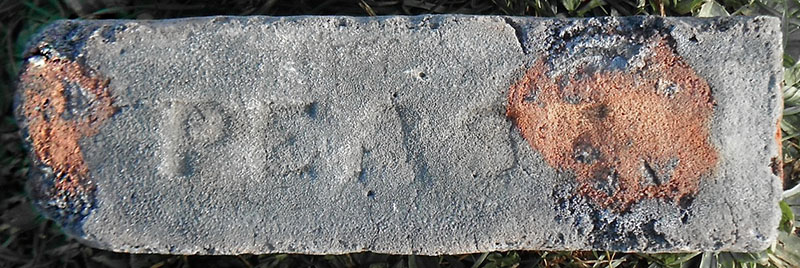
Photo by Ian Suddaby.
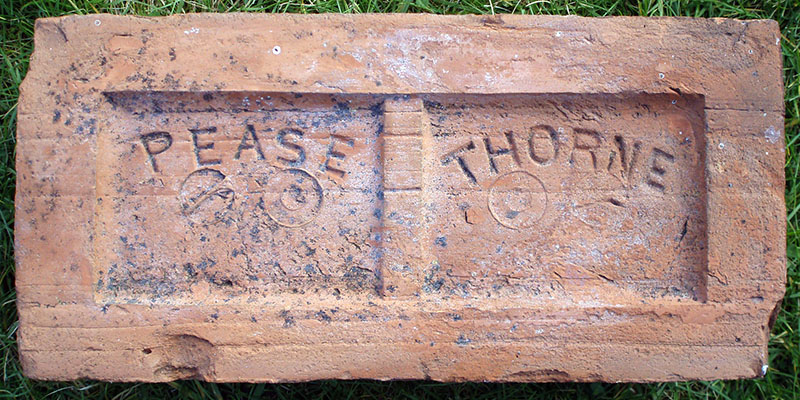
Pease and Partners, a large Co. Durham company also owned Thorne Colliery to the east of Doncaster. Photo by courtesy of the Frank Lawson collection.
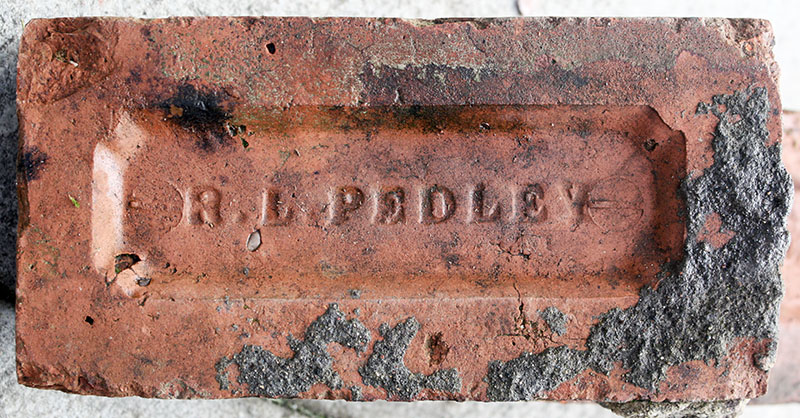
Rice Lewis Pedley made bricks at Meir Lane, Caverswall, just outside Stoke-on-Trent, between 1876 and 1884. Photo by David Kitching.
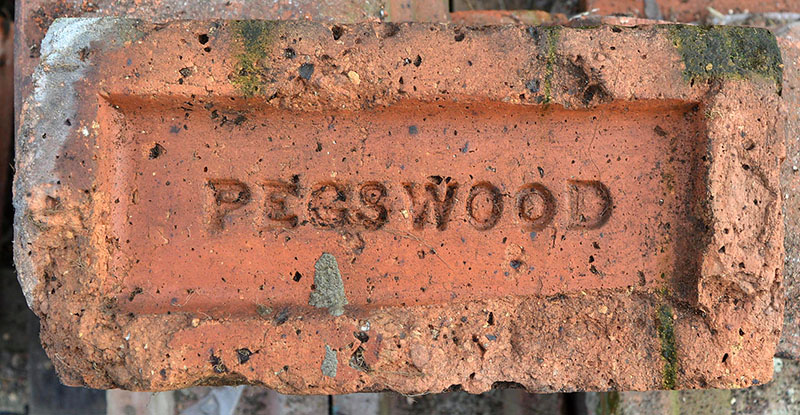
Pegswood Brickworks, Pegswood, Morpeth, Northumberland. Probably associated with Pegswood Colliery which opened in 1868 and closed in 1969. The colliery produced steam coal, household coal and fireclay. There was an earlier long established brickworks at Bothal Park which seems to have produced clay bricks and was closed by the early 1920s. Photo & info by Frank Lawson.
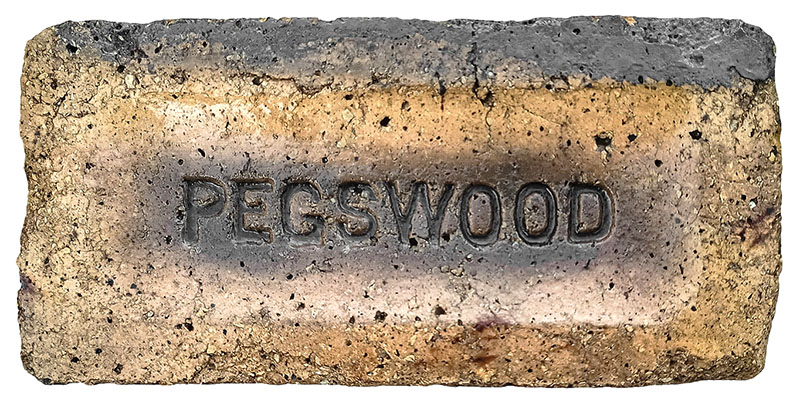
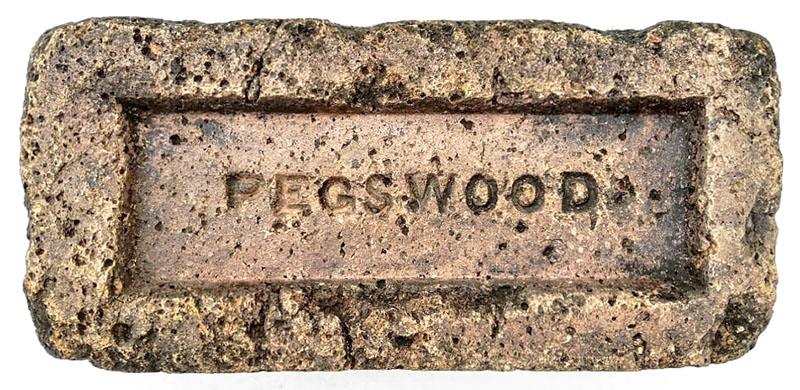
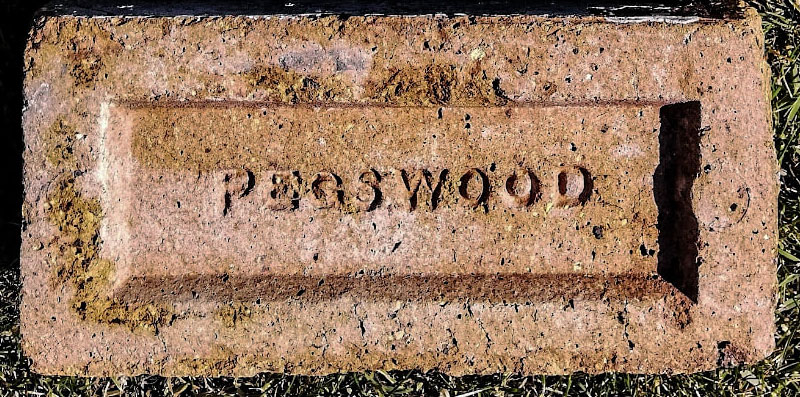
Photos by Chris Tilney.
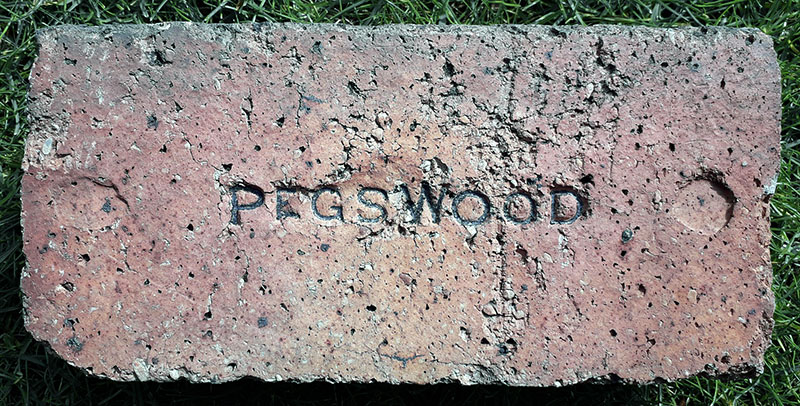
Photo by Mark Cranston.
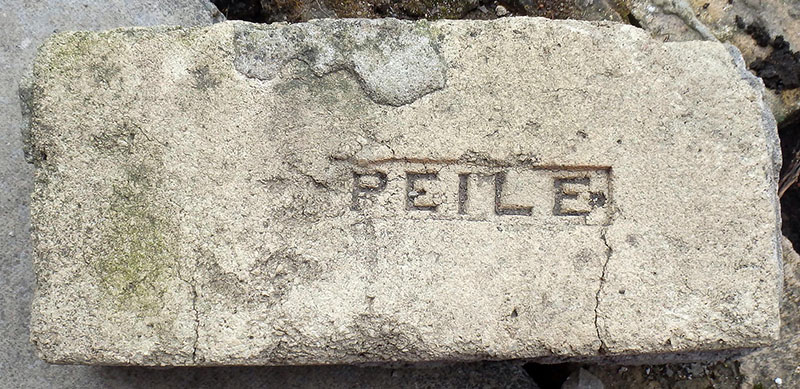
This brick appears to have its origins in the Northumberland /
Durham area. Priestman and Peile were the owners of Victoria
Garesfield Colliery in the 1880's so maybe this brick had some
connection but I can find no positive evidence. Photo and info by
courtesy of the Frank Lawson collection.
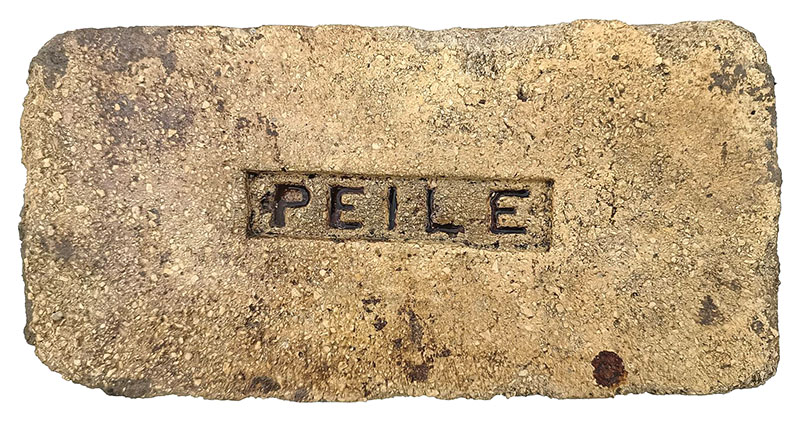
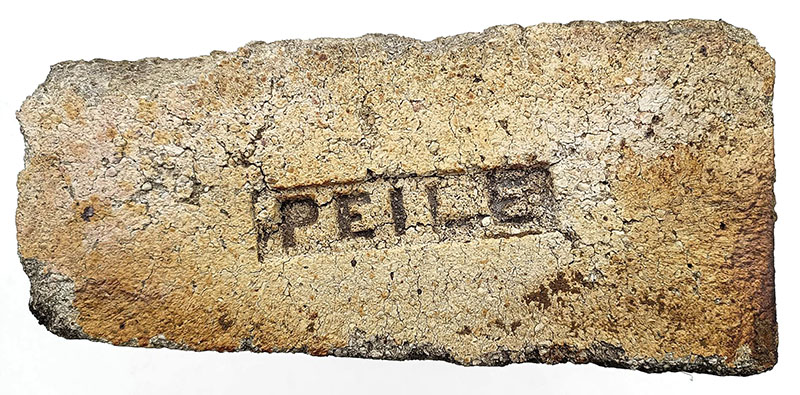
Photos by Chris Tilney.
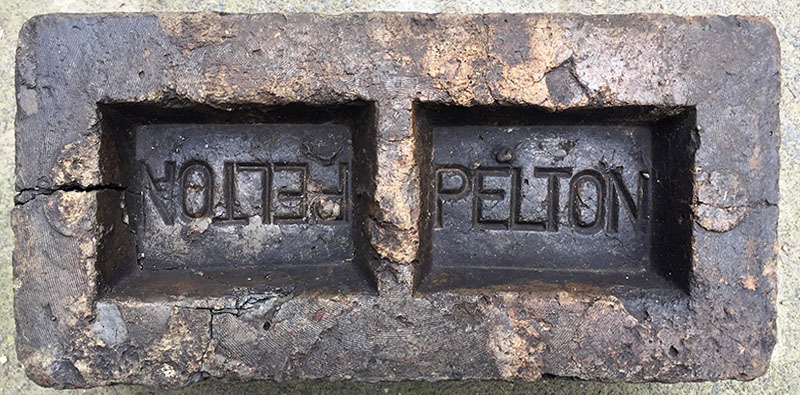
Photo by Steven Tait.
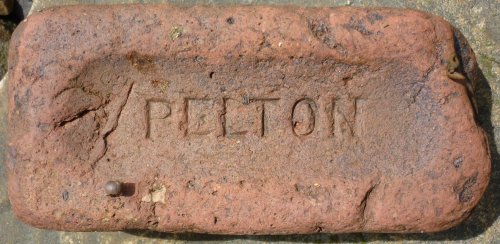
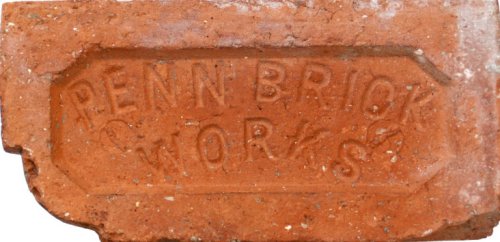
Photo by Bev Parker, link to the Wolverhamptonworks history.
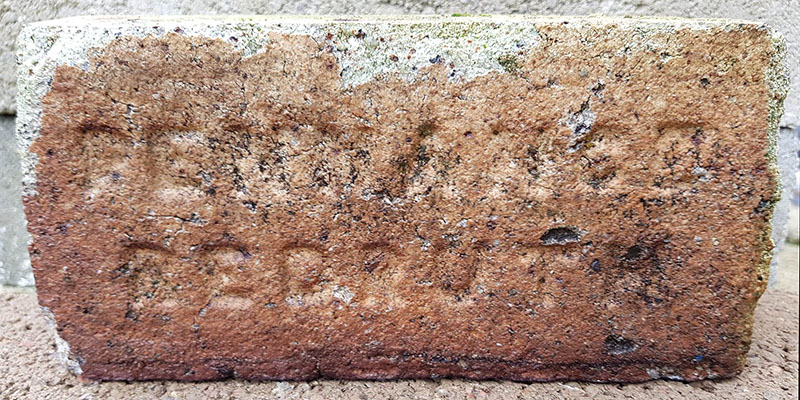
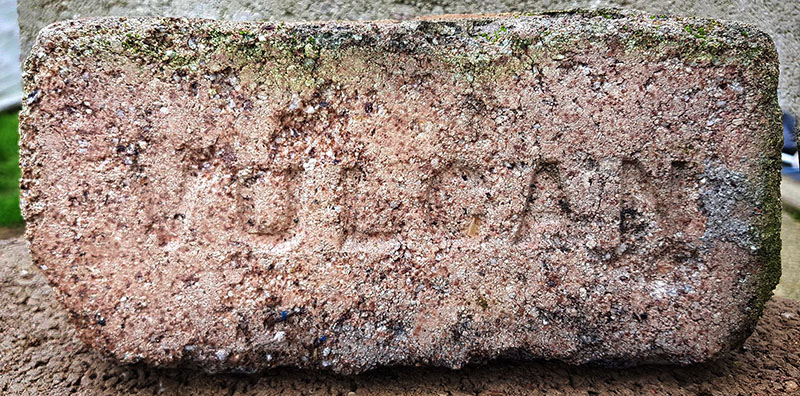
The Pennance Fire-Clay & Brick Company works was at Pennance, Gwennap near Redruth. The works operated from 1874 until around 1910. In 1888 the business was known as the Vulcan Fire-Brick Co. Photos by Clive Humphrey.
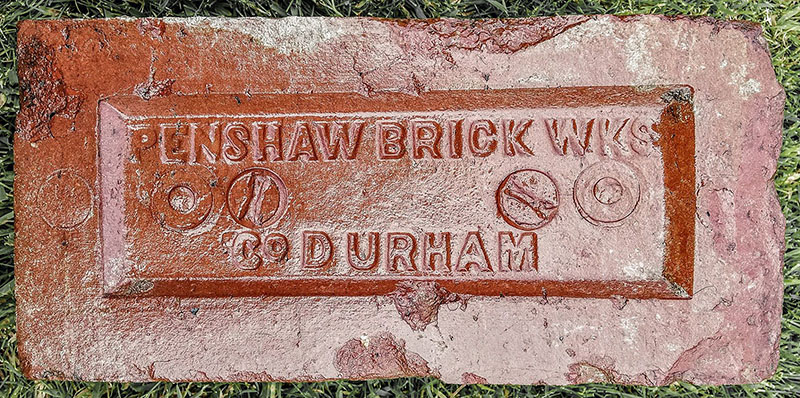
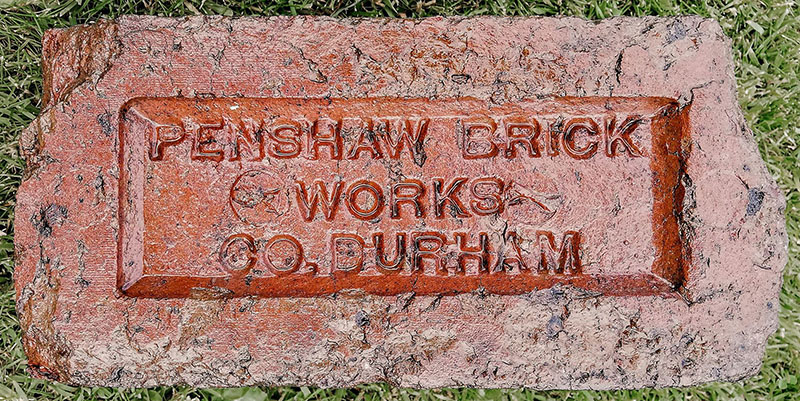
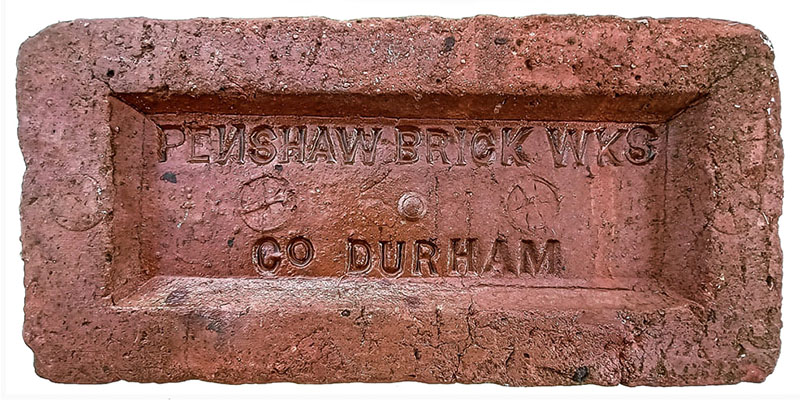
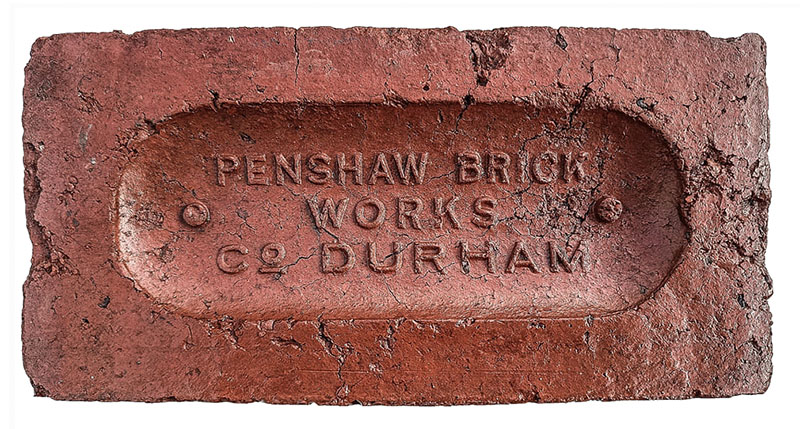
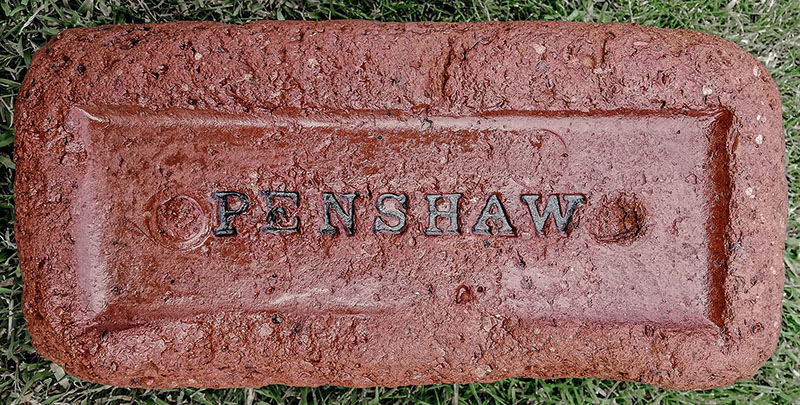
Photos by Chris Tilney.
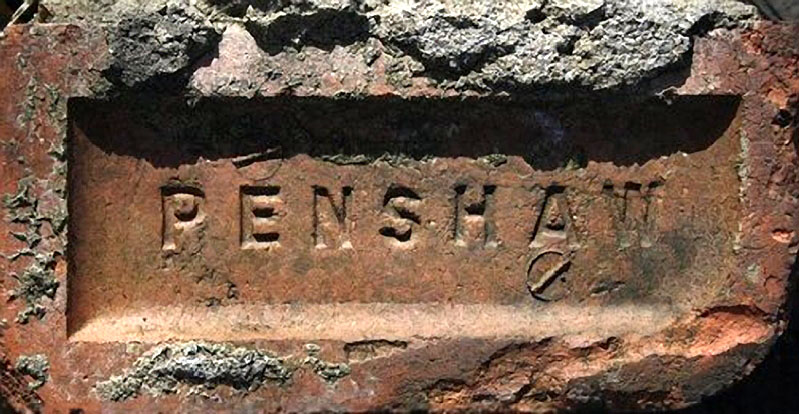
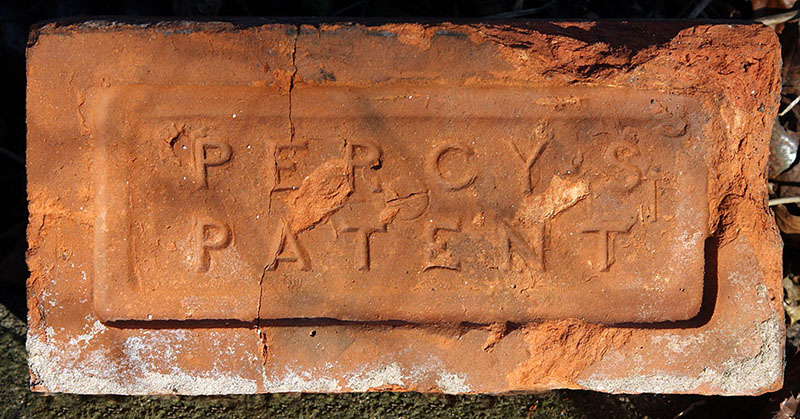
This appears on the back of Rowland, Dukinfield. Patent granted to William Carter Stafford Percy, machinist, of Manchester. Two records: 1) on 29 April 1847 for "improvements in machinery for making and dressing bricks and tiles, and in certain sheds and kilns, in which bricks and tiles are dried and burnt", and 2) on 31 July 1858 for "Improvements in arrangements and mechanism or apparatus for the manufacture of bricks, tiles, pipes, and other articles made of plastic earths." There are further patent details from 11th December 1861: 3104. Machinery for making bricks, tiles, pipes and other articles formed of plastic materials. In July 1853 Percy was successfully sued by Henry Clayton for infringing his patent & this stopped Percy from making his modified machines. Clayton also sought compensation from the profits Percy made on the sale of his machines and this may have been the cause of Percy's bankruptcy in early 1854 when he spent some time in Lancaster Gaol. Photo and information by David Kitching.
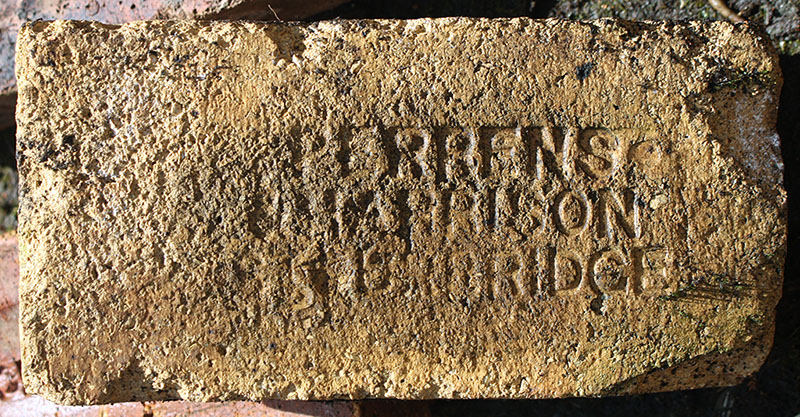
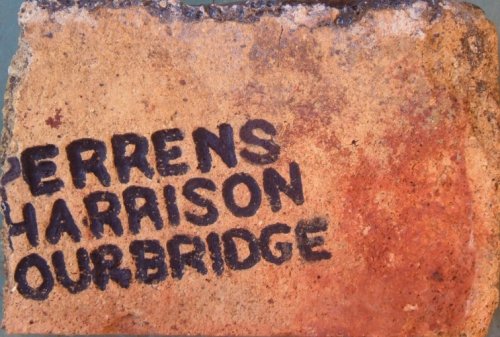
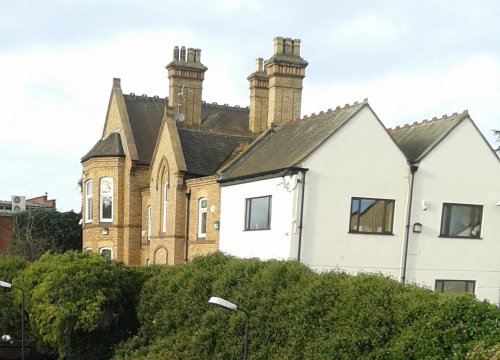
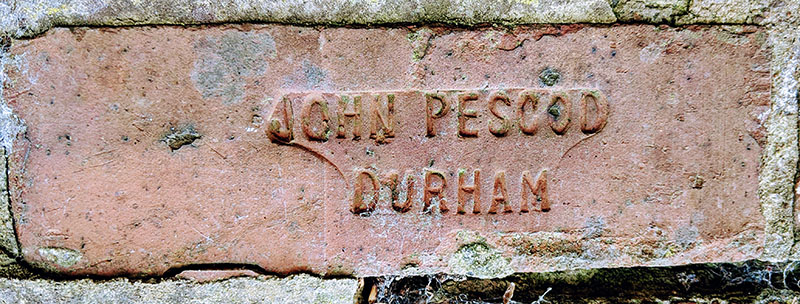
This is in the outside of a yard wall on Wanless Terrace, Durham city. Another can be seen in a house wall on Sidegate. John Joseph Pescod was born in Swallwell in 1825, and in 1851 was making bricks at Brick Flatts, Lanchester, in 1861, and 1871 in Consett, and in 1881 in Durham (living at 85 North Road, now demolished). It's most likely that this brick was made at Aykley Heads colliery, Durham, the current site of County Hall. The pit worked from the 1880s until 1949. Info and photo by Paul Dobson.
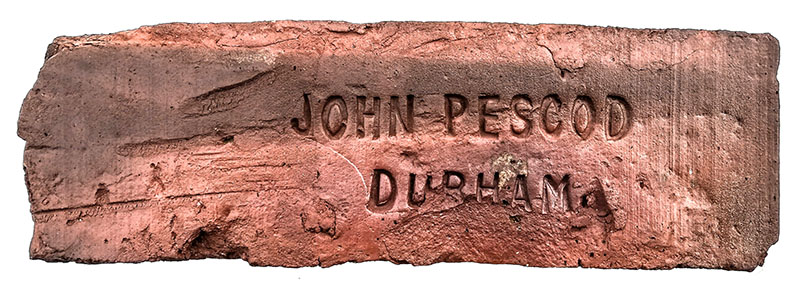
Photo by Chris Tilney.
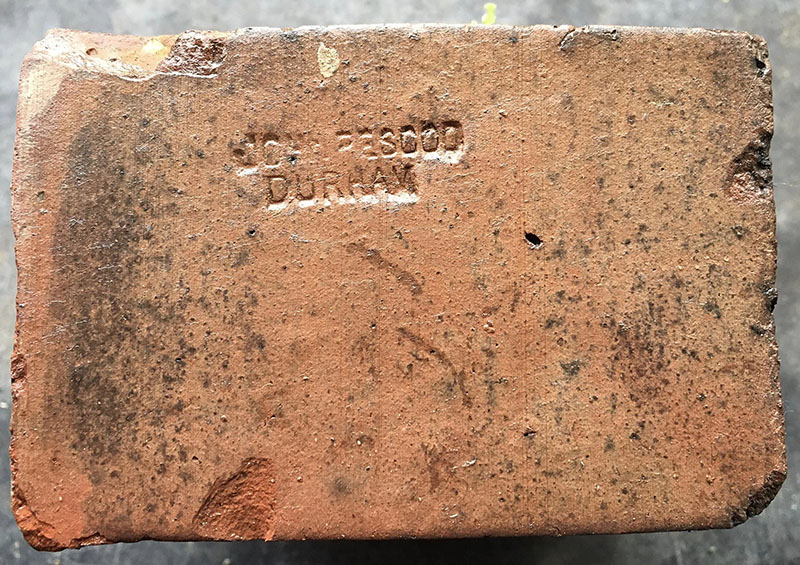
Photo by Steven Tait.
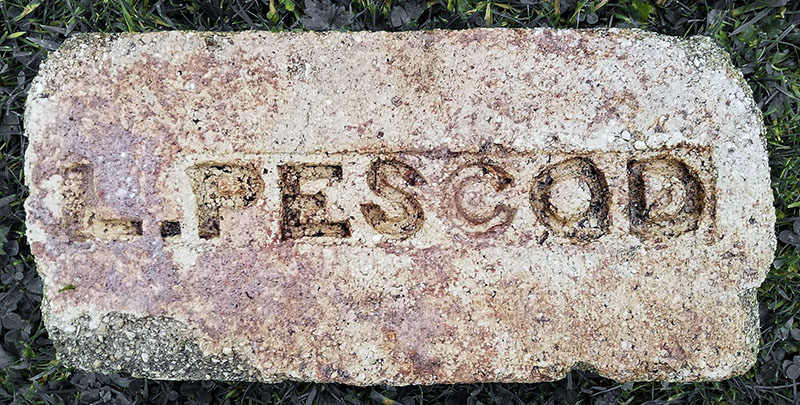
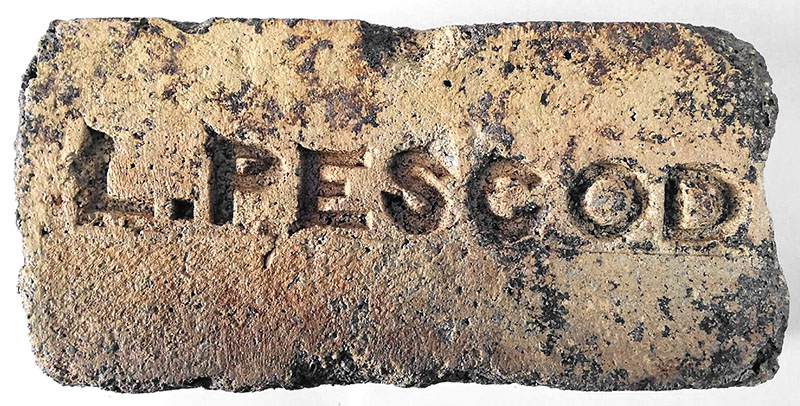
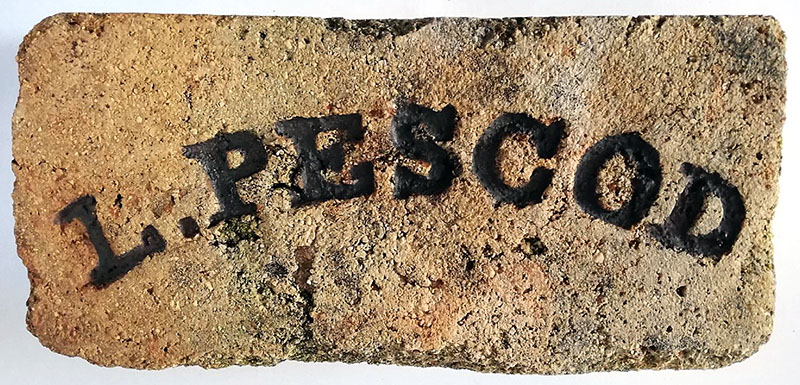
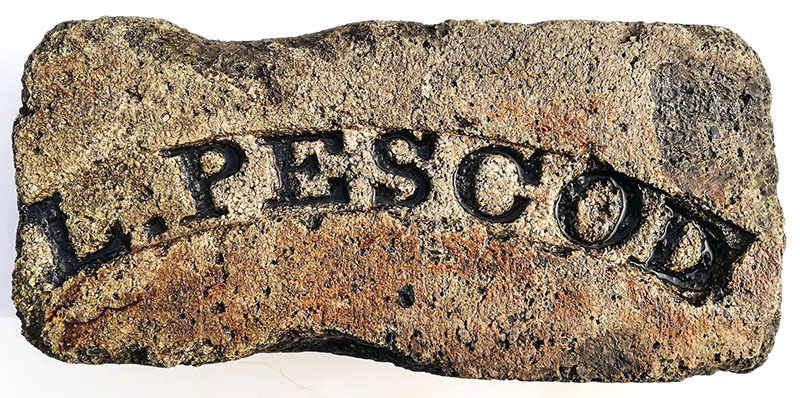
Photos by Chris Tilney.
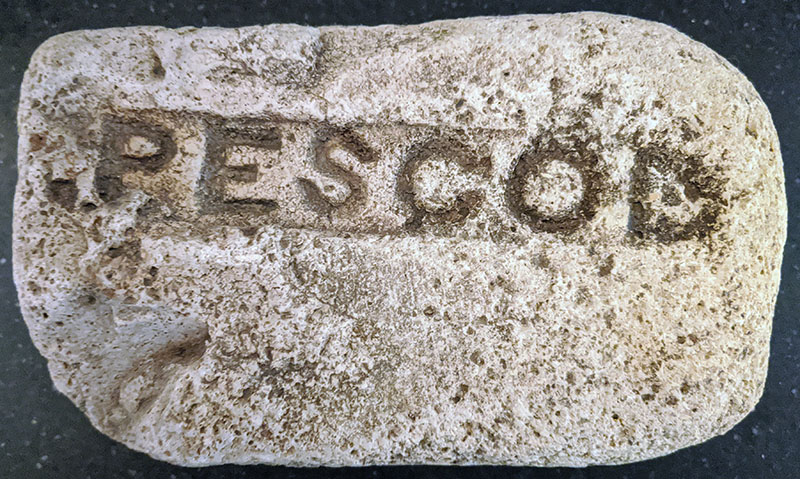
Lancelot Pescod was born in Whickham, Gateshead, in 1817 and in 1841 was making bricks in Blaydon. In 1851 he was living in Wolsingham (Weardale) employing 15 men and 5 boys. In 1851 he resigned from the partnership at Marshall Green Colliery, and died in 1855 in Witton le Wear. Marshall Green opened in 1830 and closed in 1936, and is now the site of an abattoir. His brother John (1811 - 1876) also made bricks, and from at least 1856 was at Wackerfield, near Cockfield. Old maps show the Hilton Tarn Brick and Tile works at Wackerfield. There was also a John Pescod making bricks at Aykley Heads in Durham City, a couple of which can be seen in houses is the city. Photo and info by Paul Dobson.
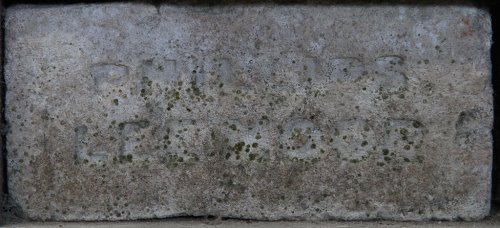
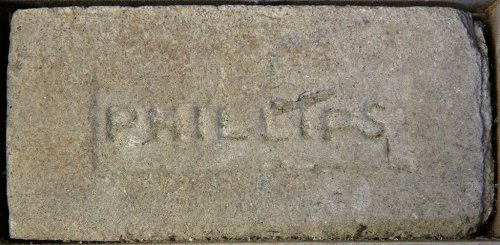
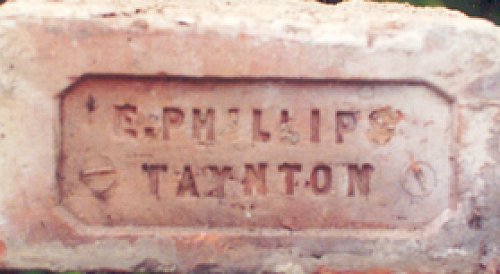

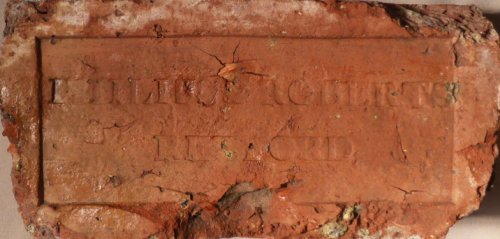
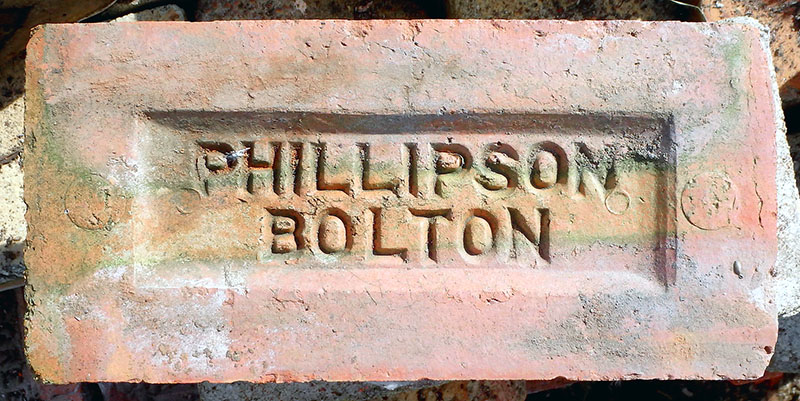
Photo by Frank Lawson.
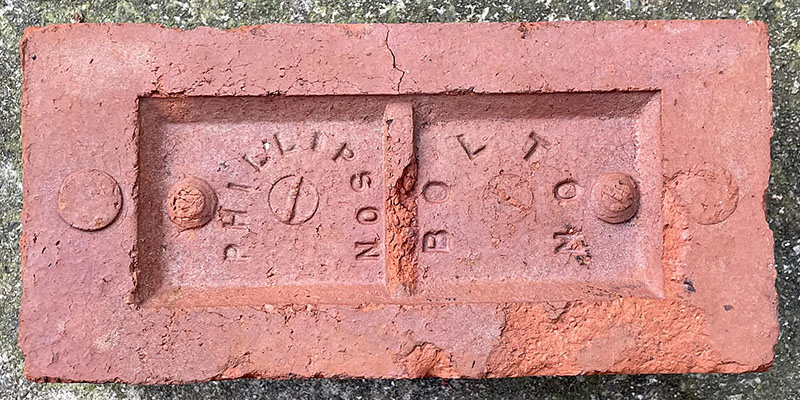
Photo by Phil Burgoyne.
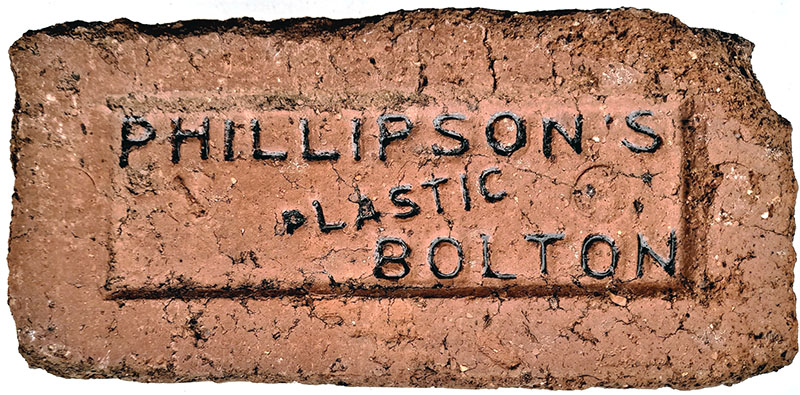
Photo by Lyn Bostock.
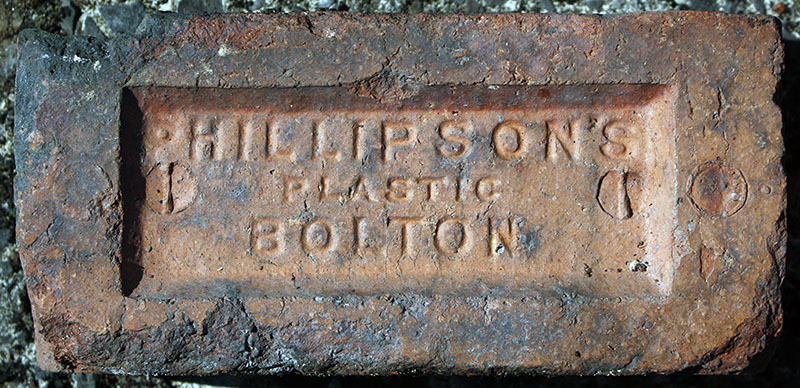
George Phillipson & Sons Ltd., Ousel Nest Brickworks, Chapeltown Rd., Bromley Cross, Bolton, Lancs. Photo by David Kitching.

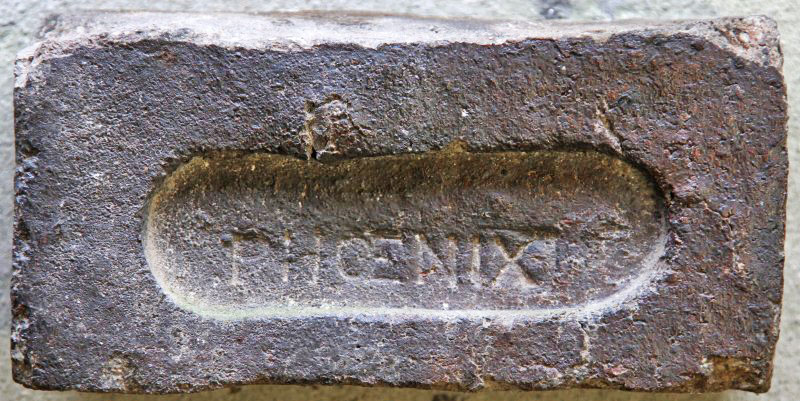
Phoenix Vitrified Paving & Firebrick Works nr Callington
SX395715. Photo by David Kitching, part of the collection at Wheal Martyn China Clay
Museum.
Photo by Ian Williams.
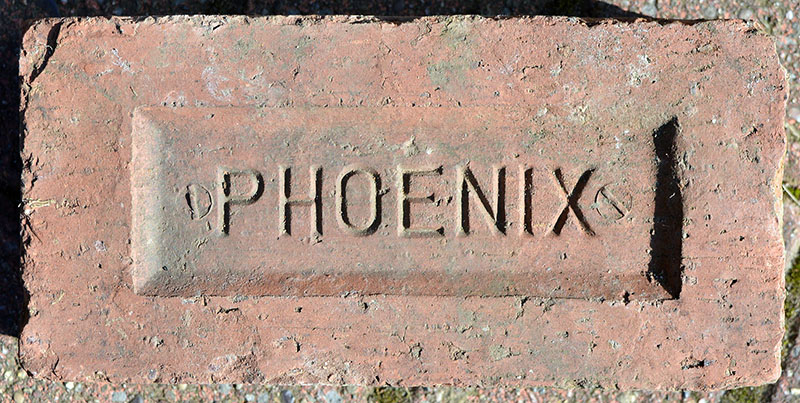
Phoenix Brick Co. Ltd., Campbell Brickworks, Barrow Hill, Staveley, Chesterfield. The works closed in 2013 and shortly afterwards the site was cleared. The works had formerly produced bricks under the "Staveley" name and had been part of the Staveley Coal & Iron Co. empire. Photo and info by Frank Lawson.
See: Phoenix Brick Co. Barrow Hill, Chesterfield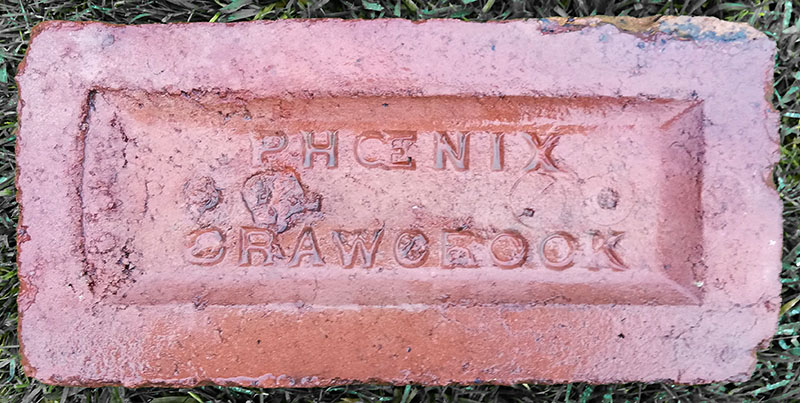
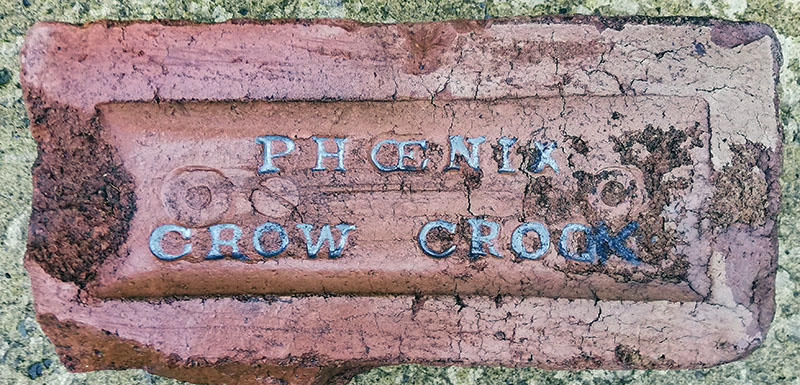
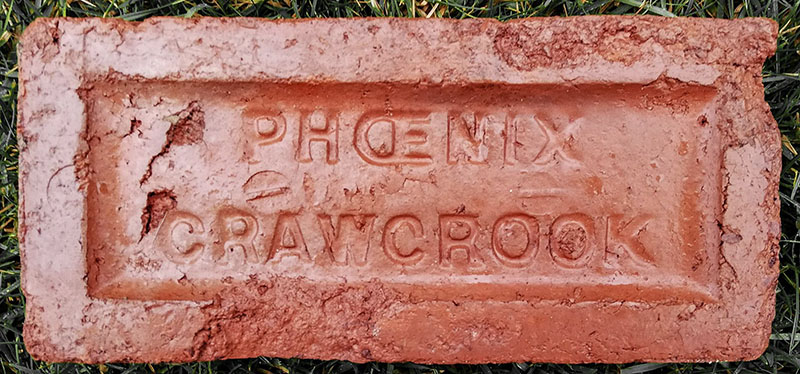
Photos by Chris Tilney.
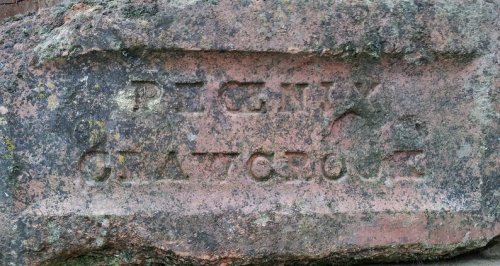
Photo by Mark Cranston.
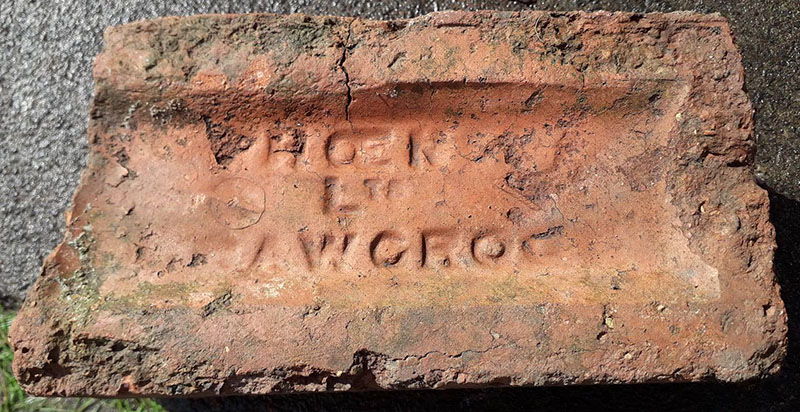
Photo by Tony Gray.
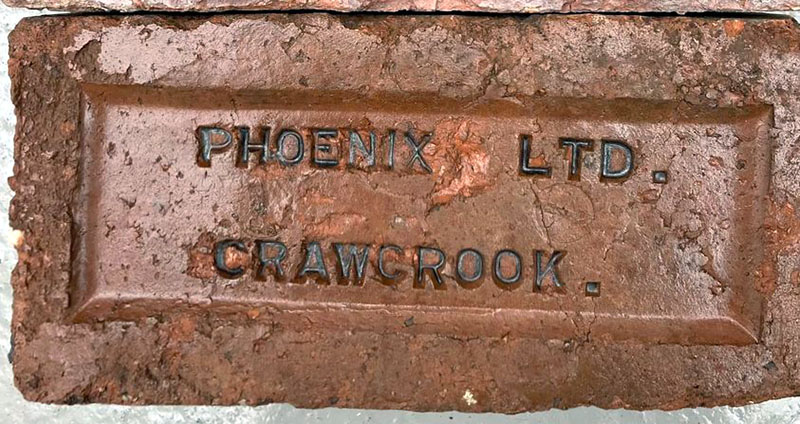
Photo by Neville Akers.